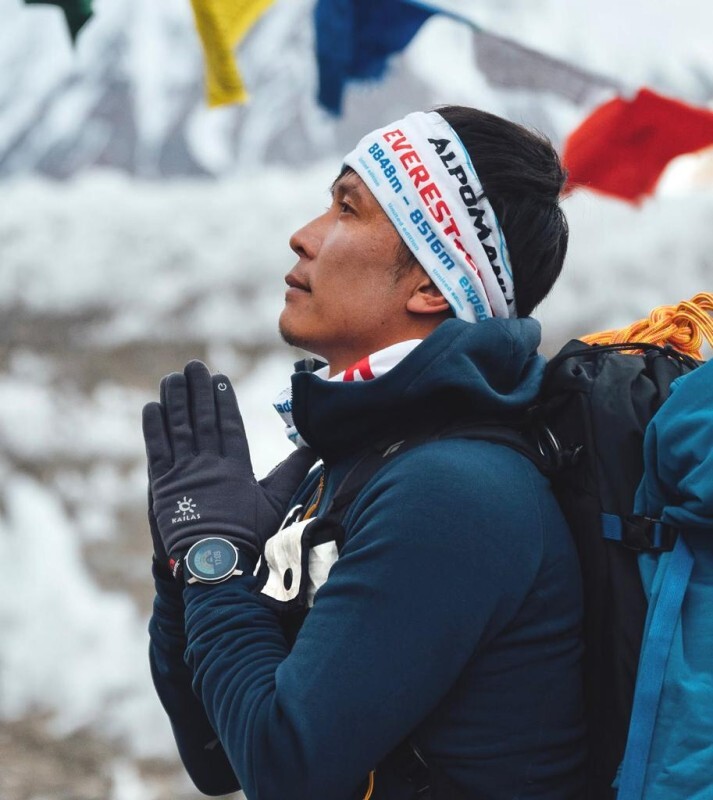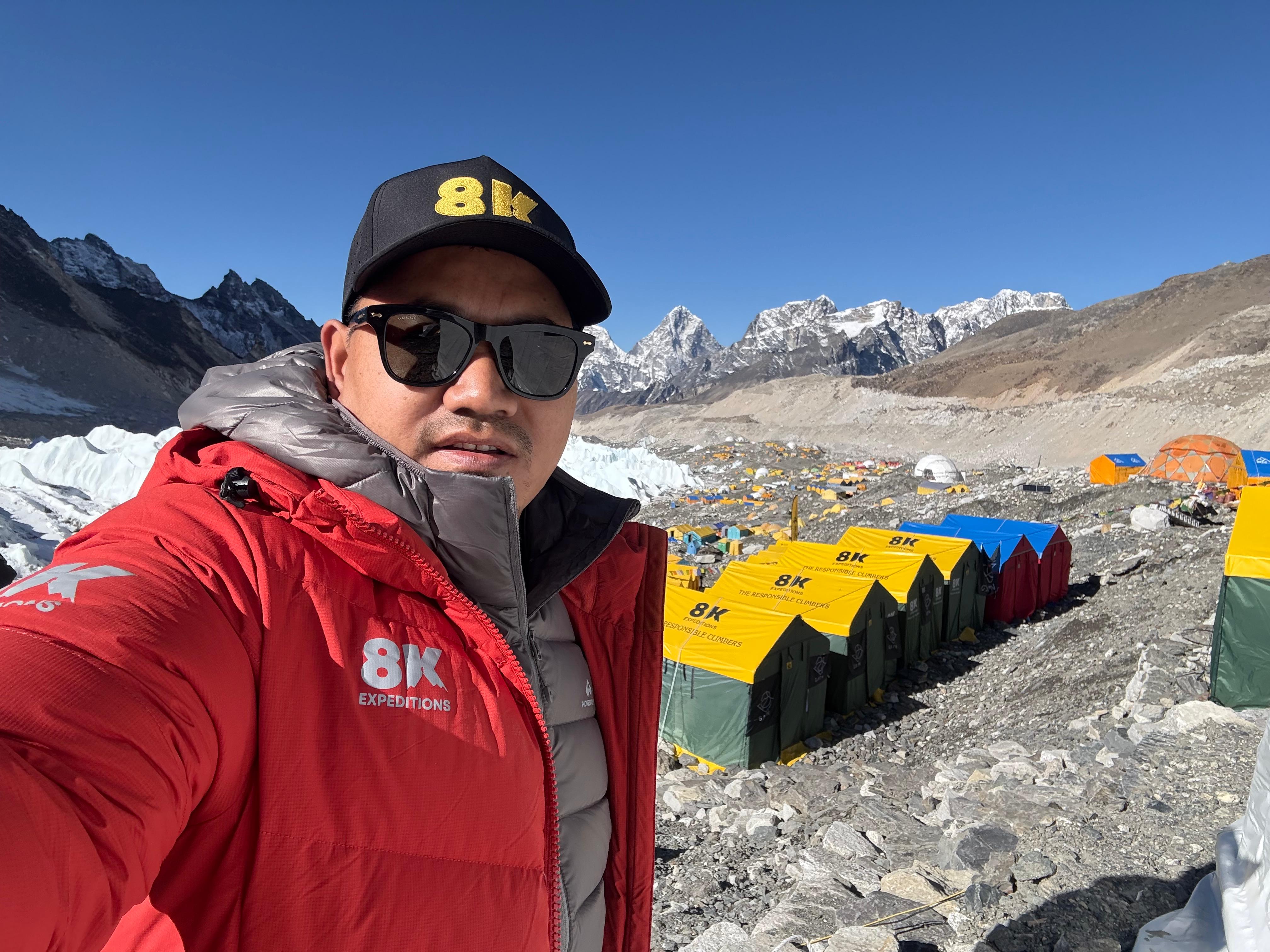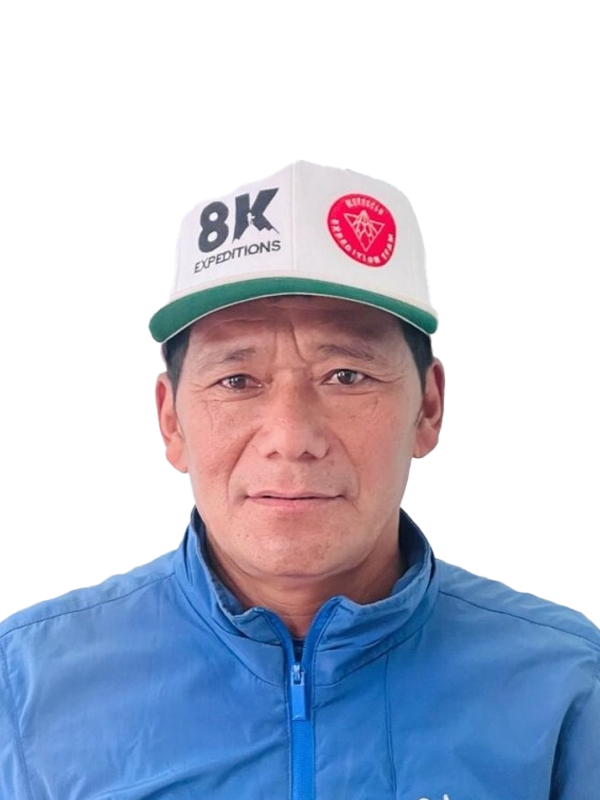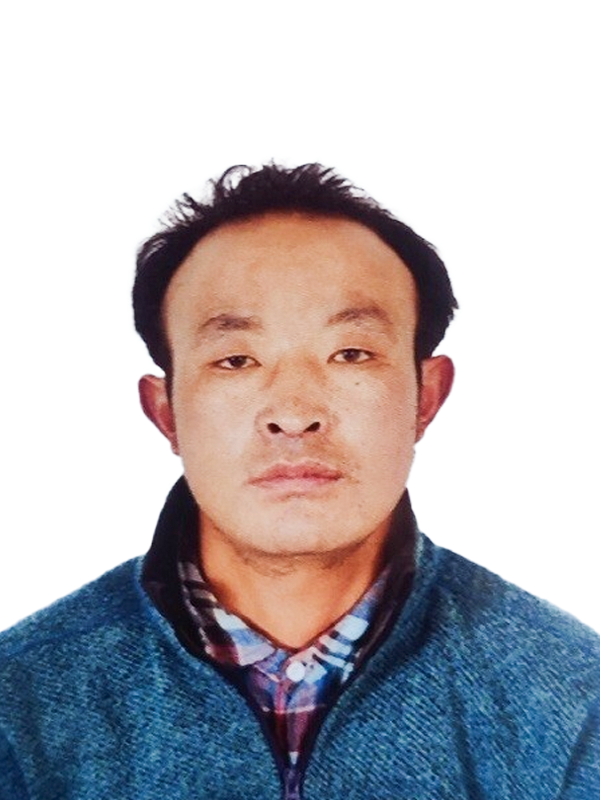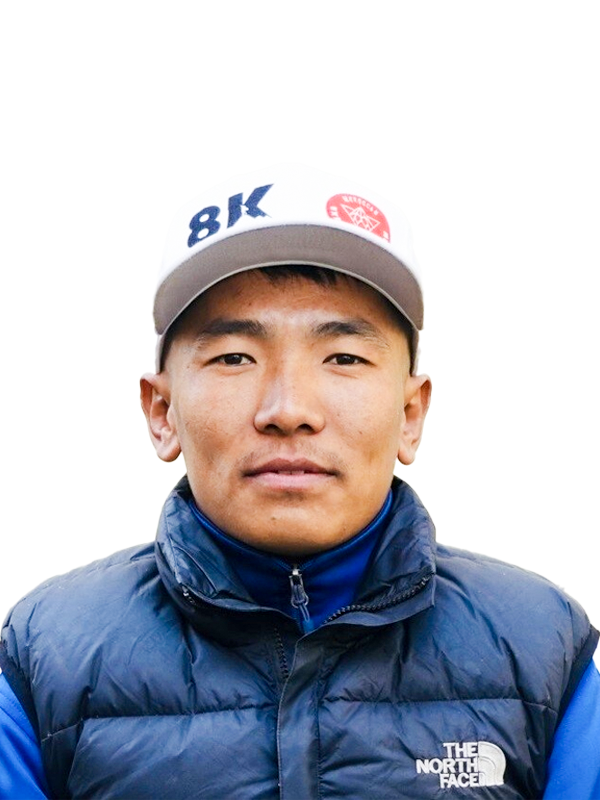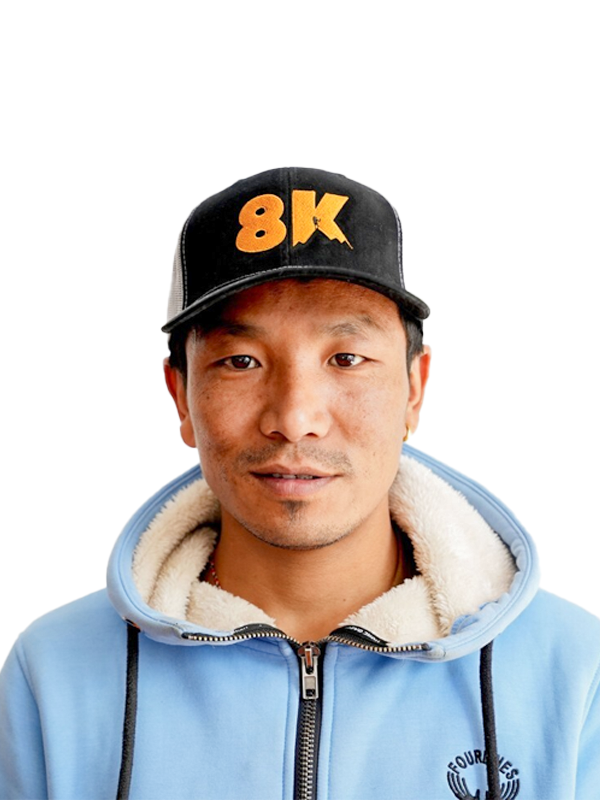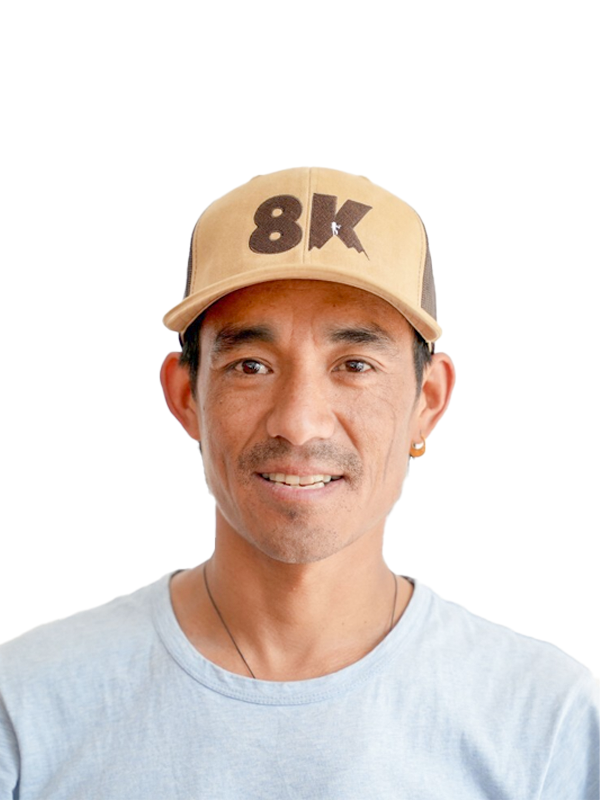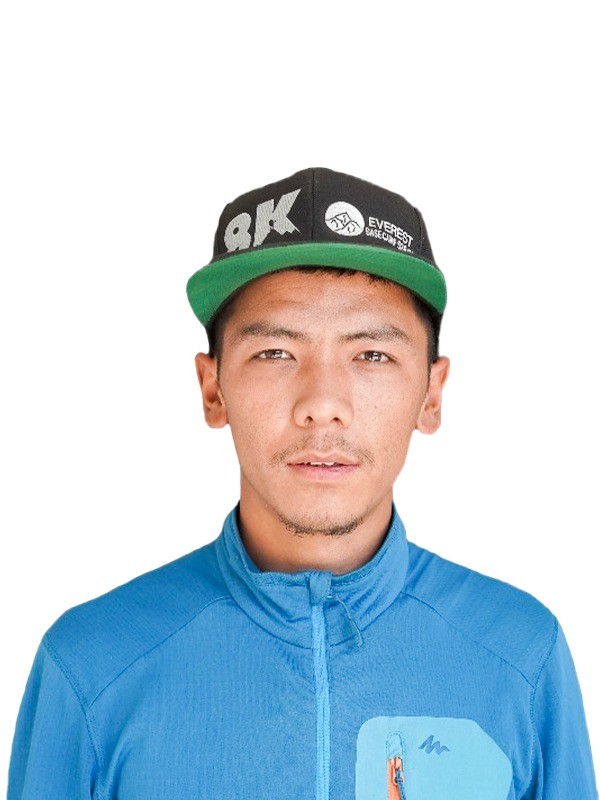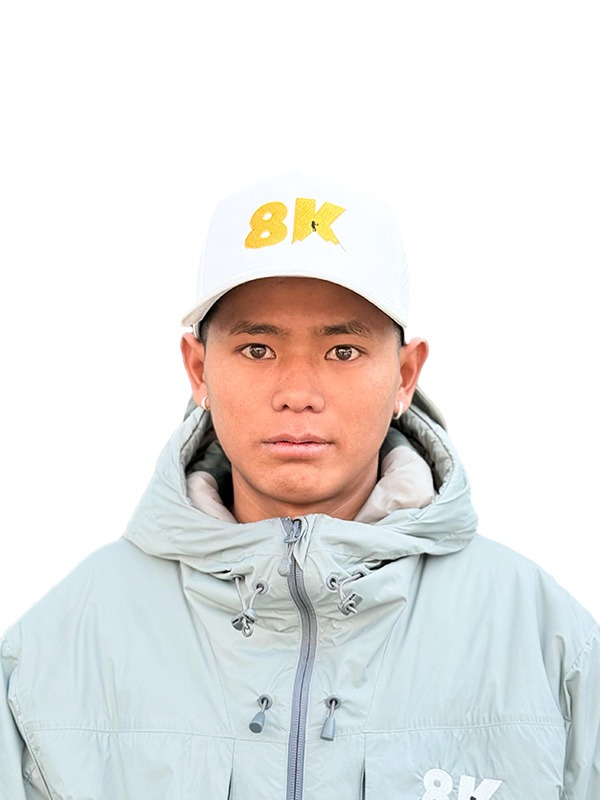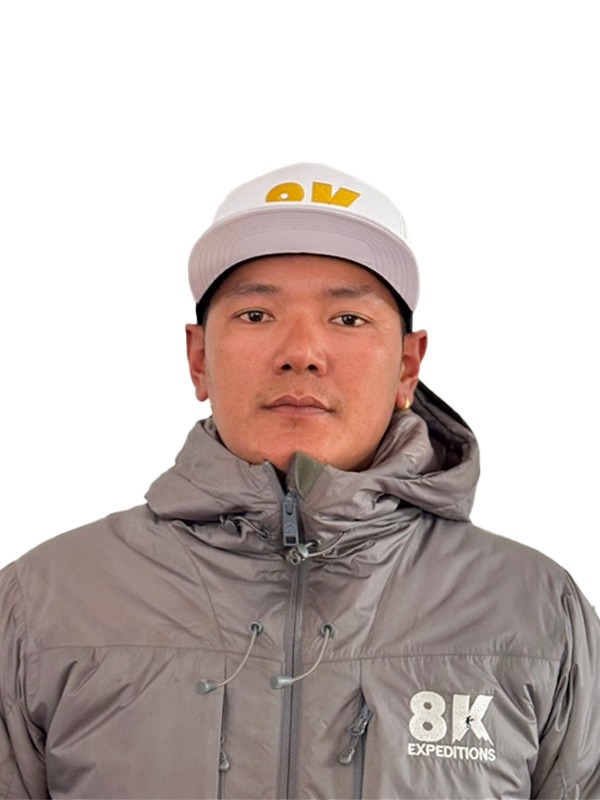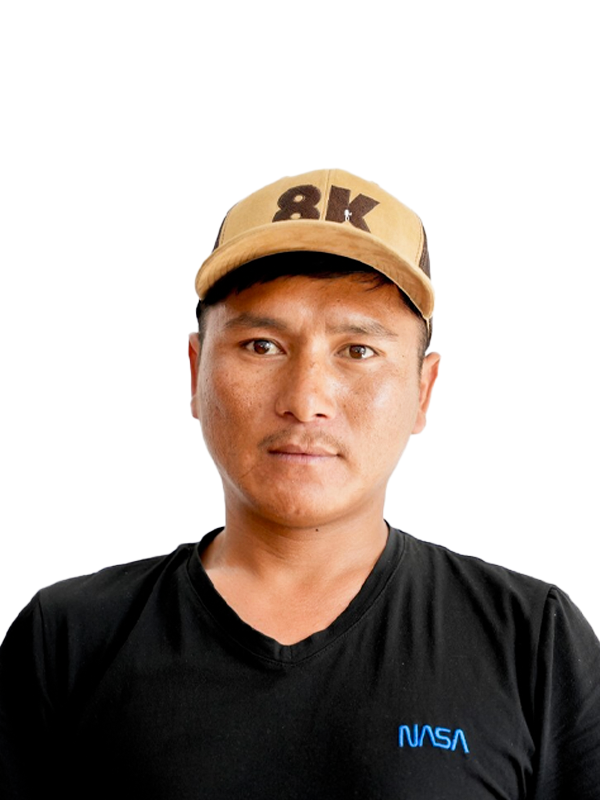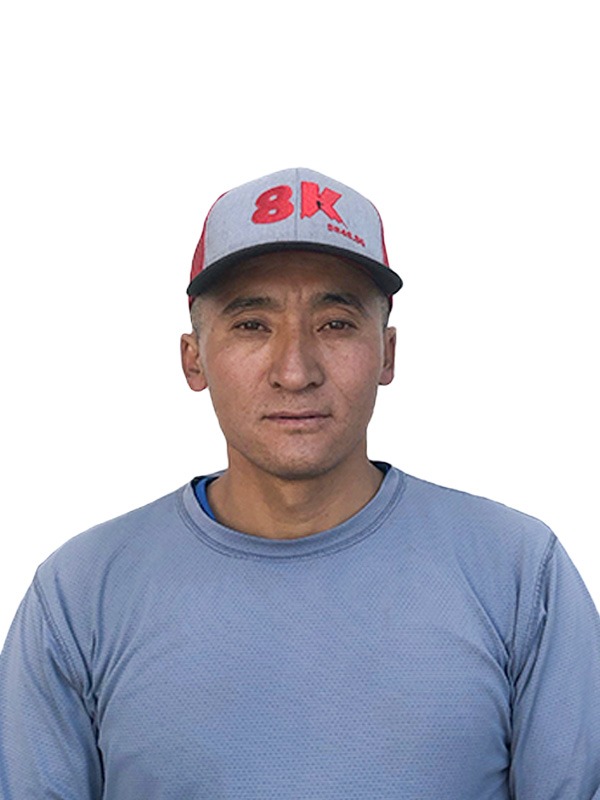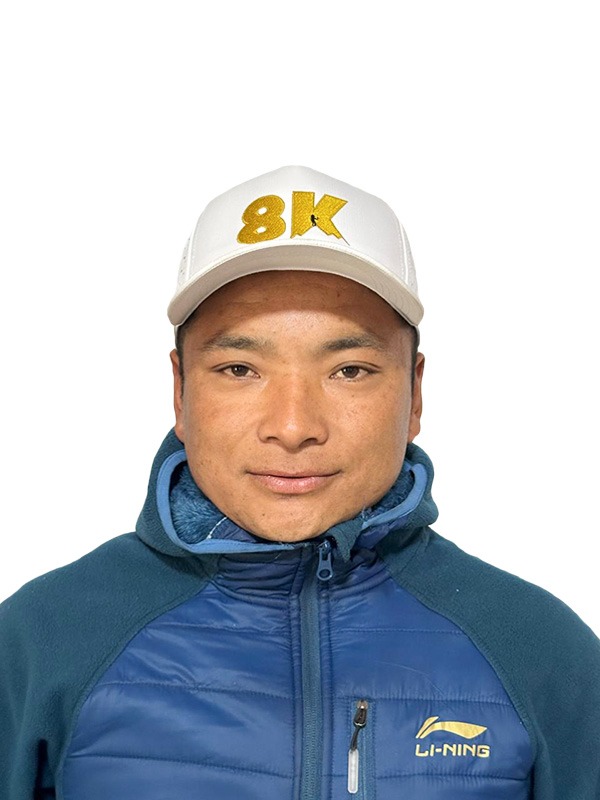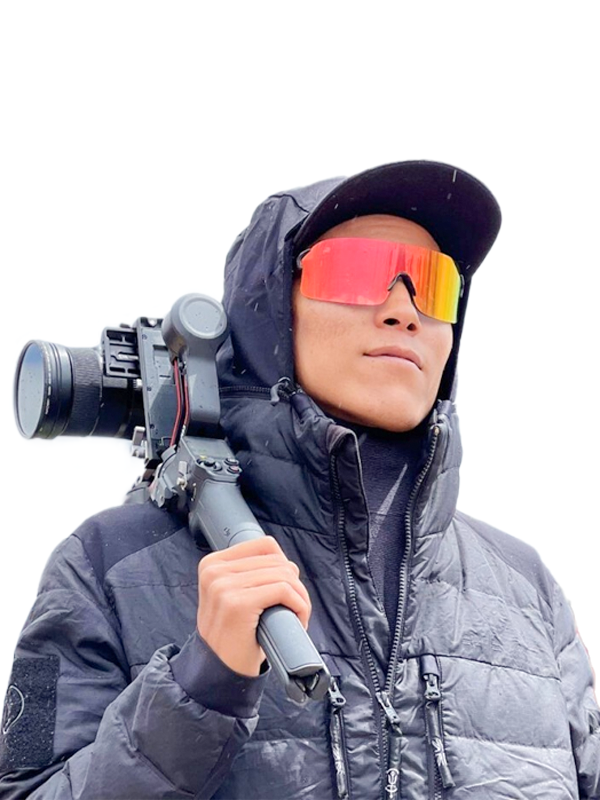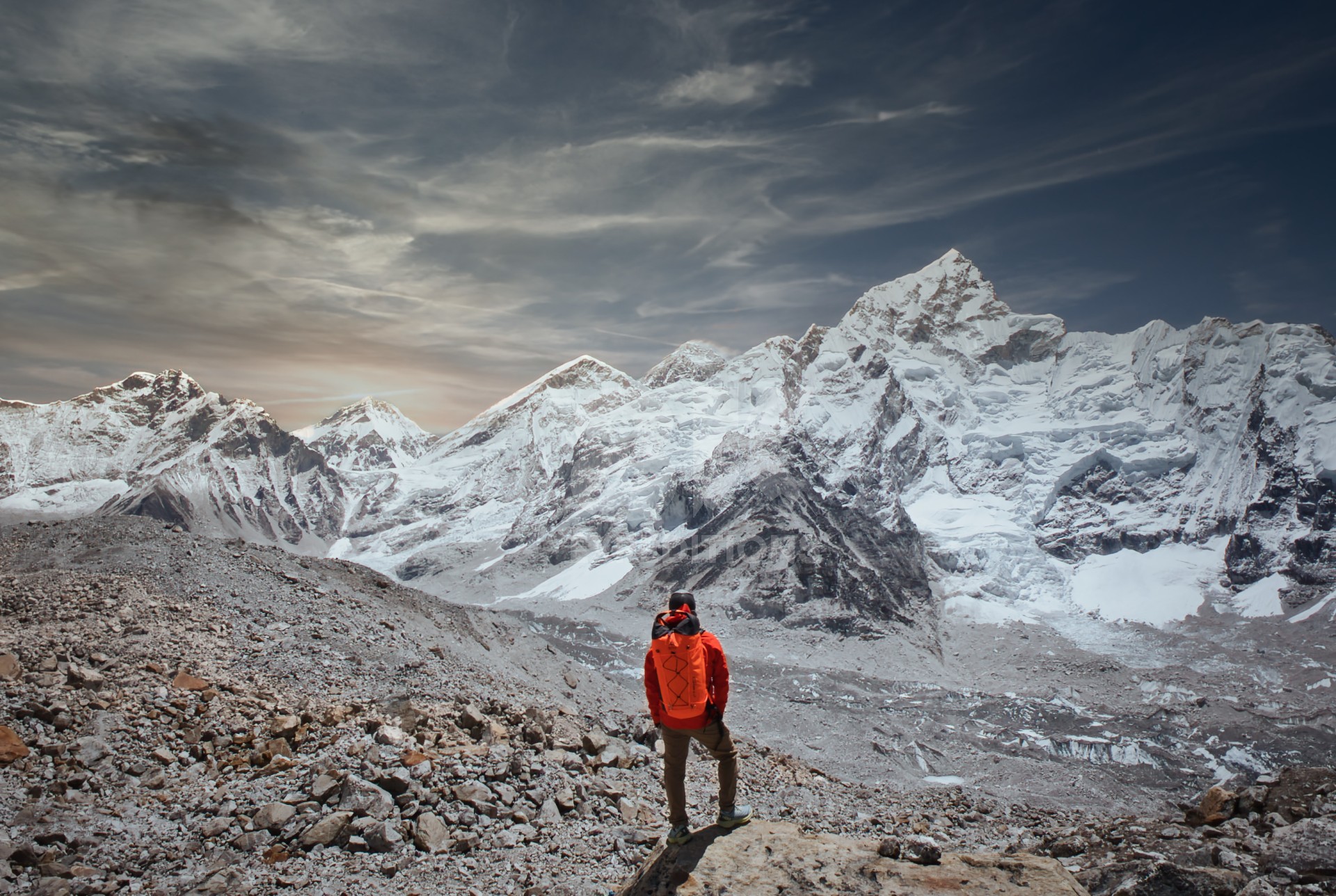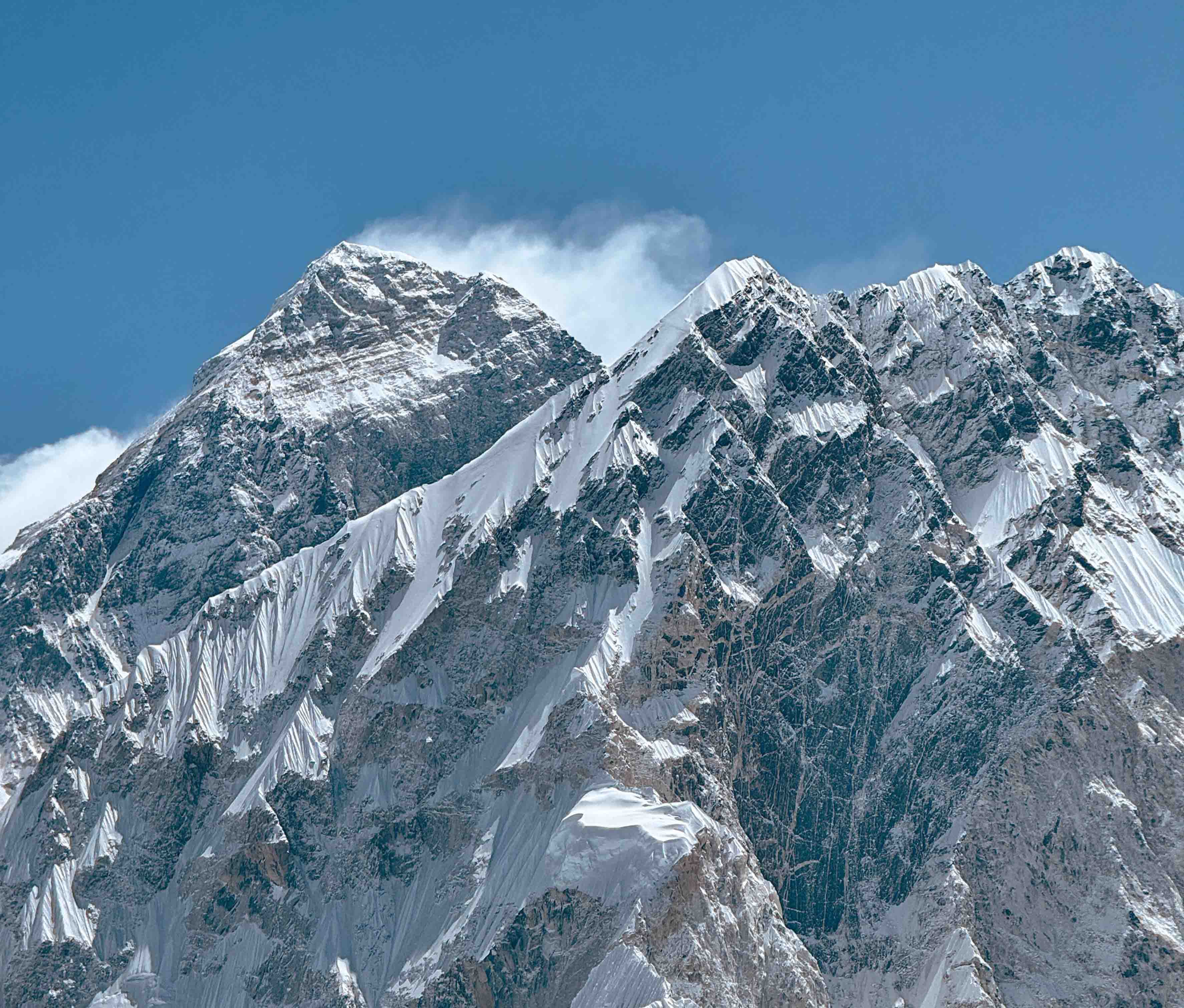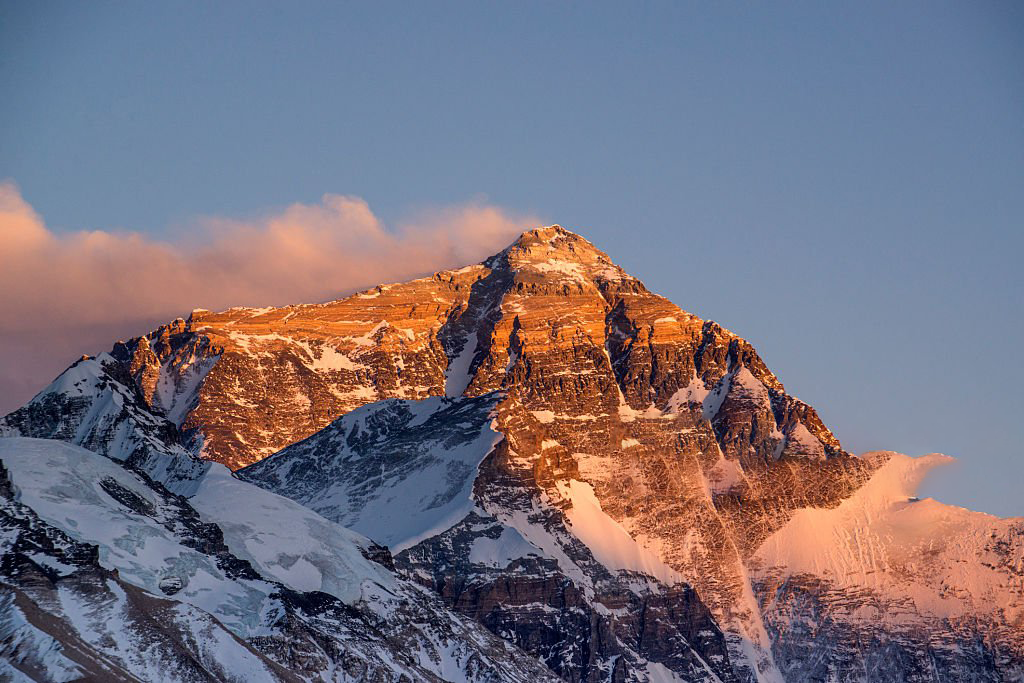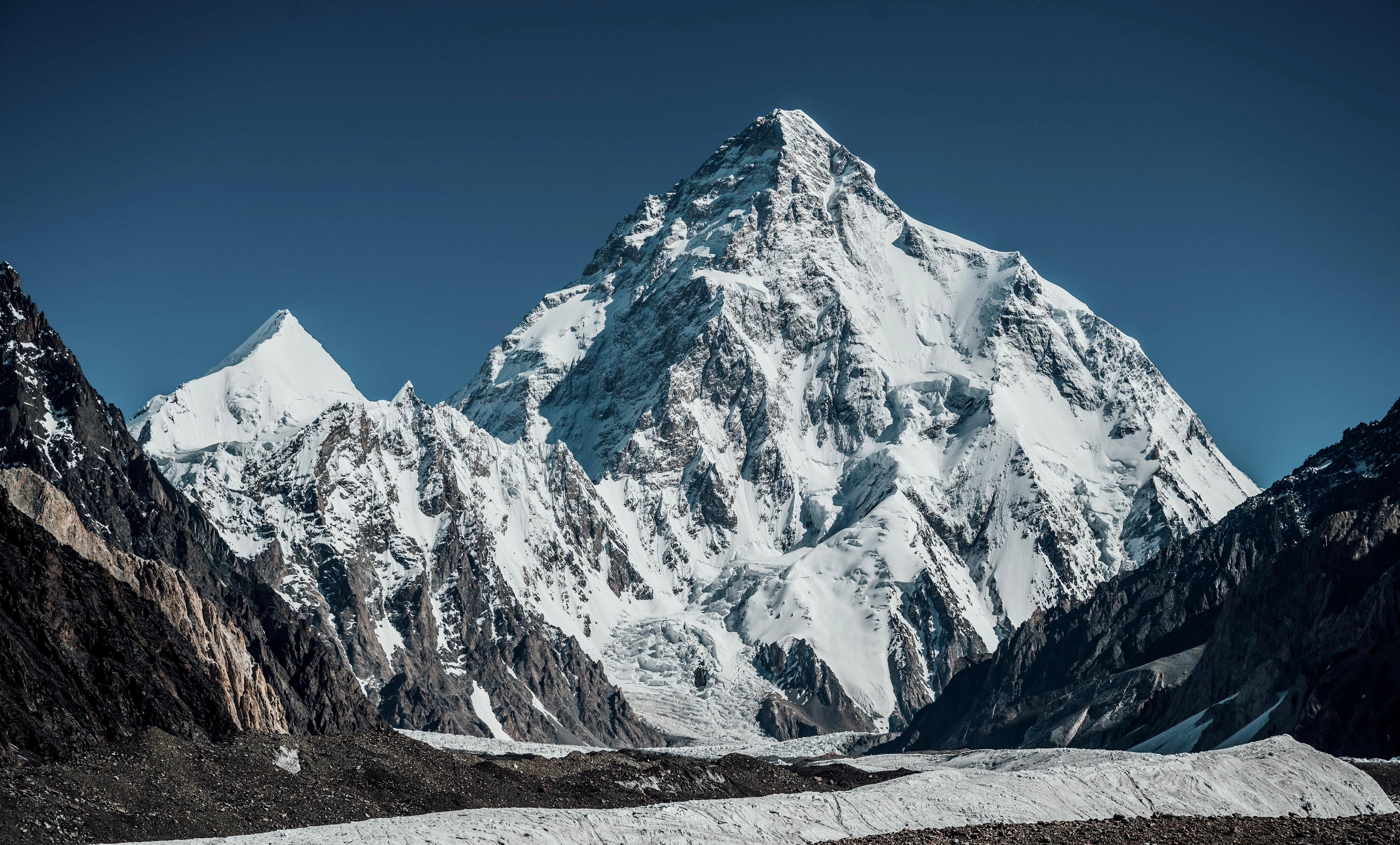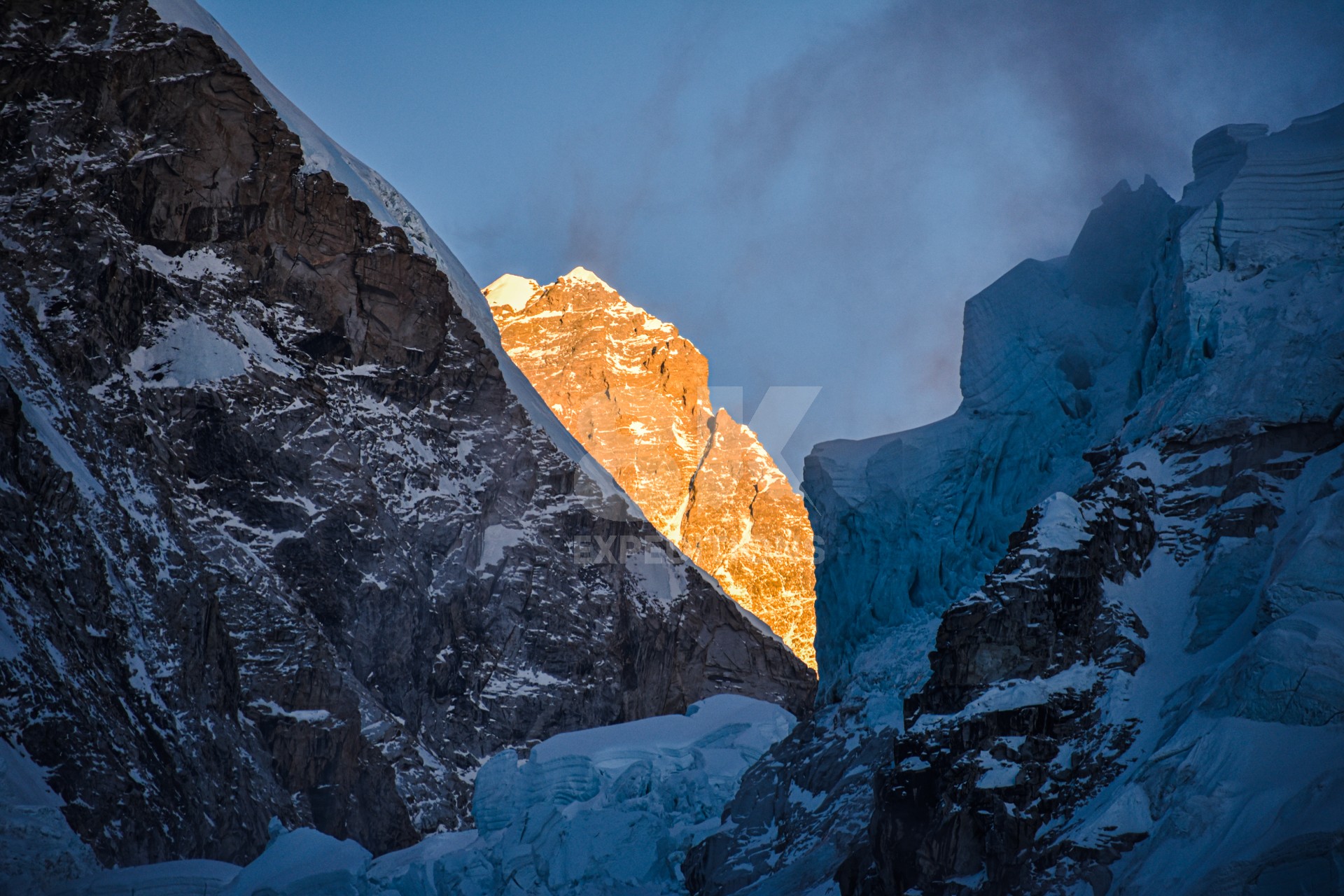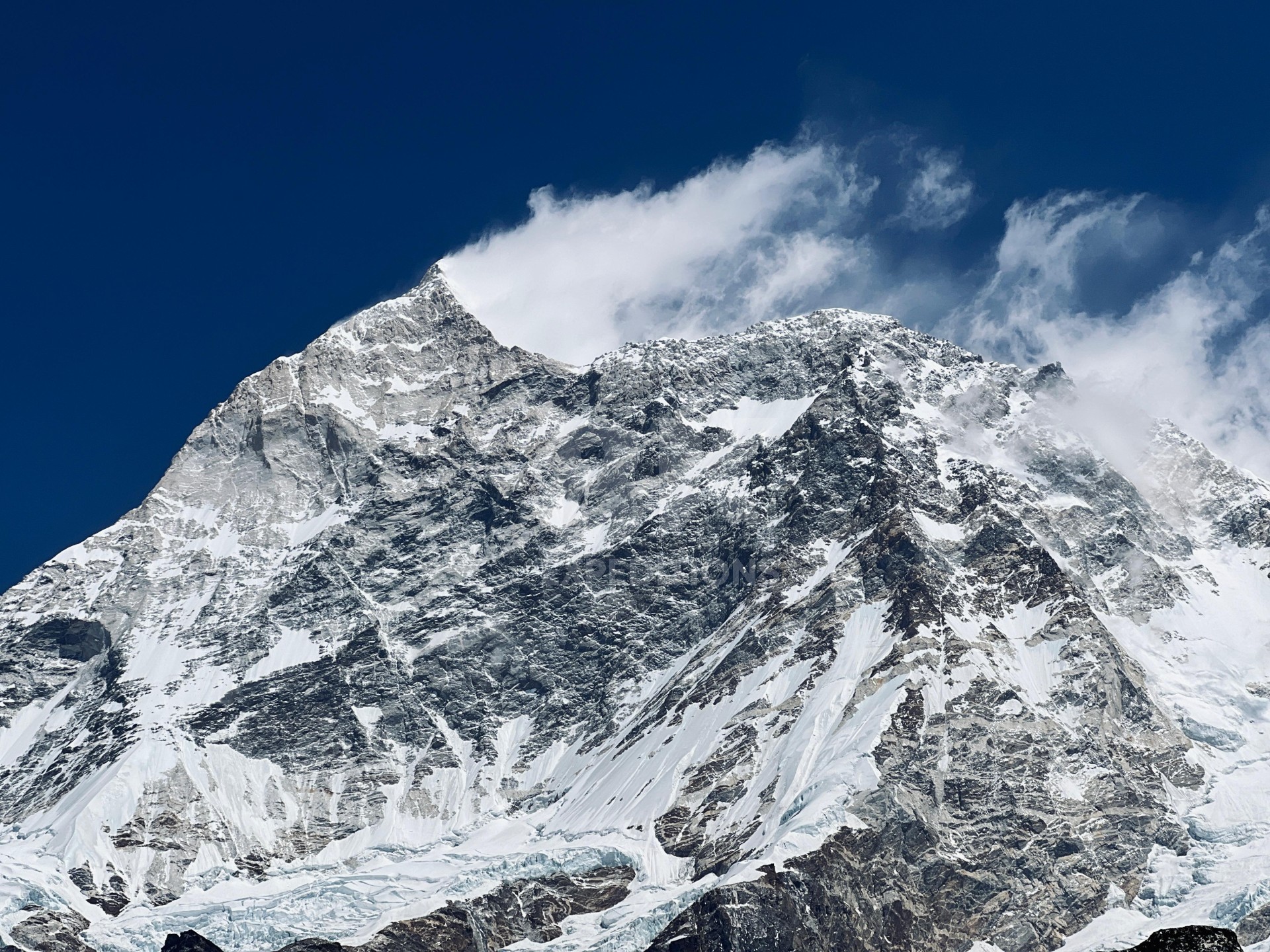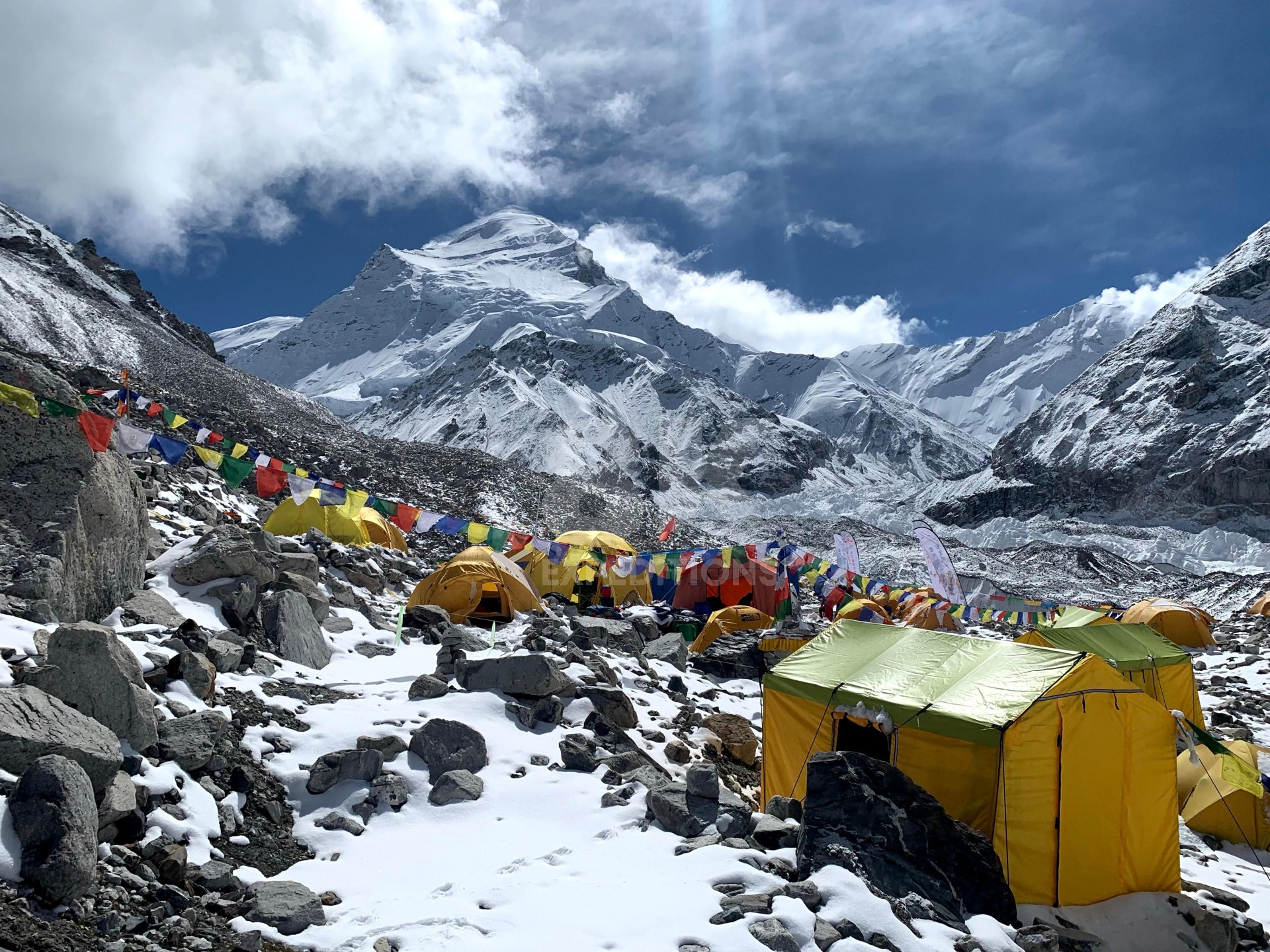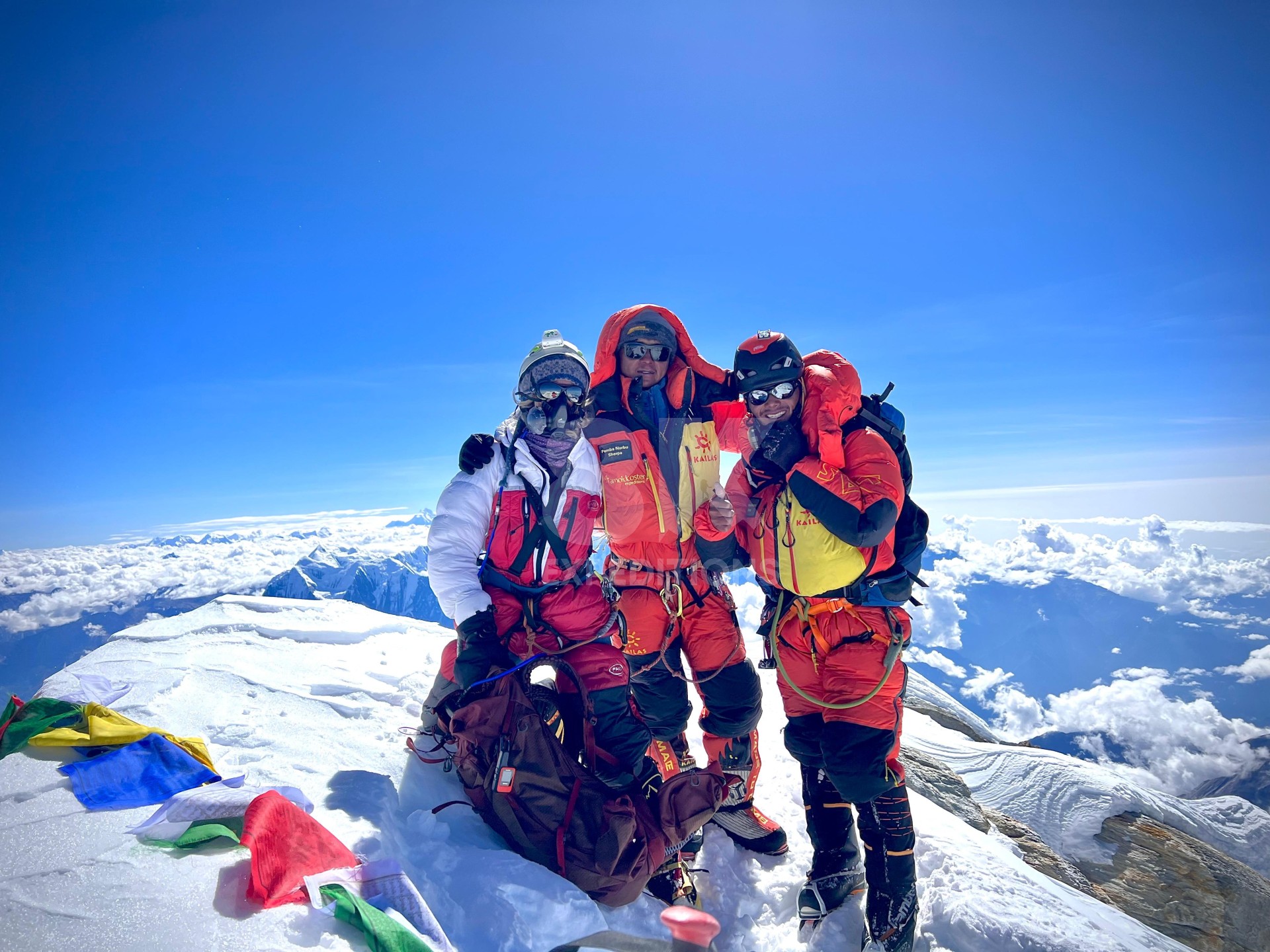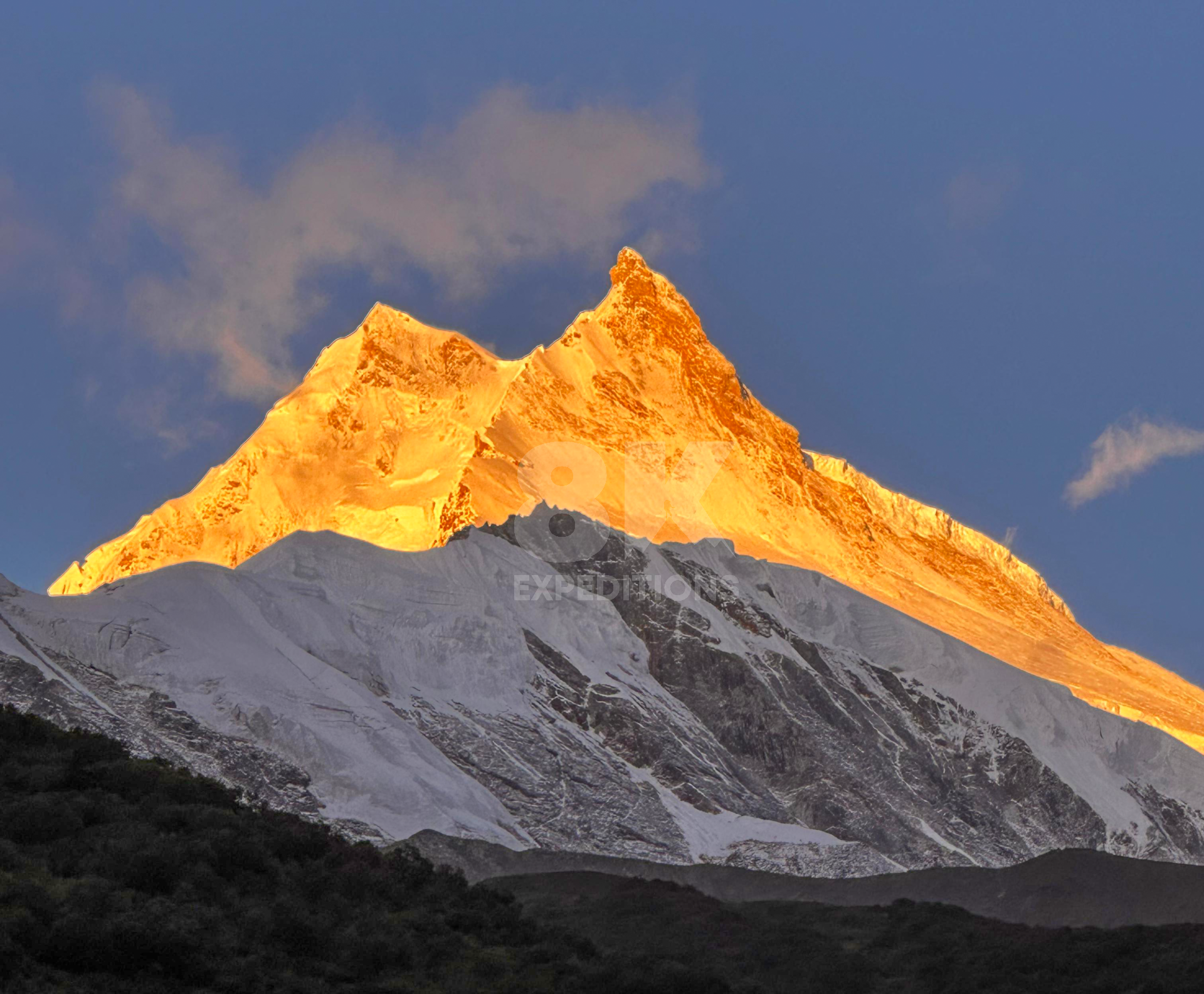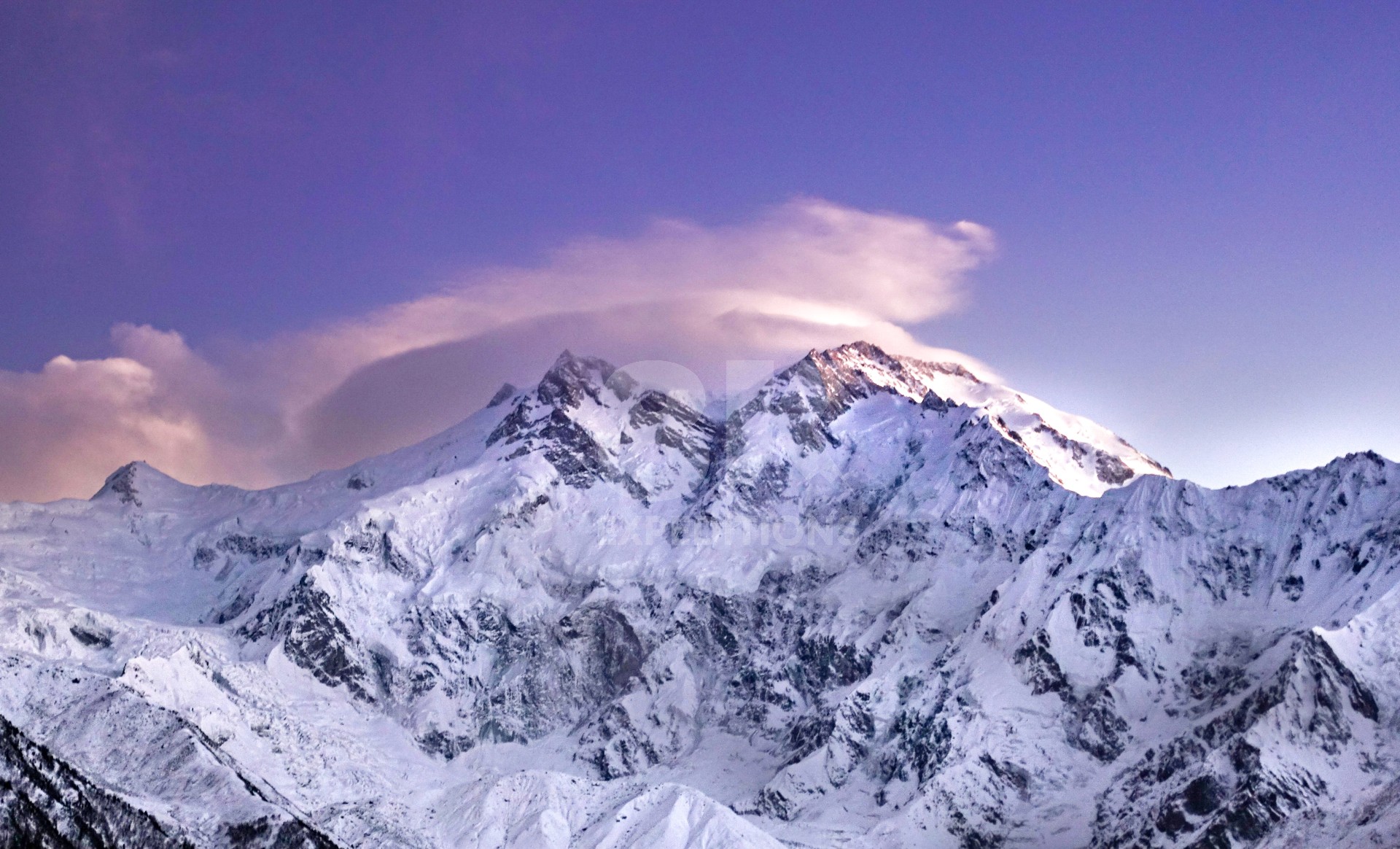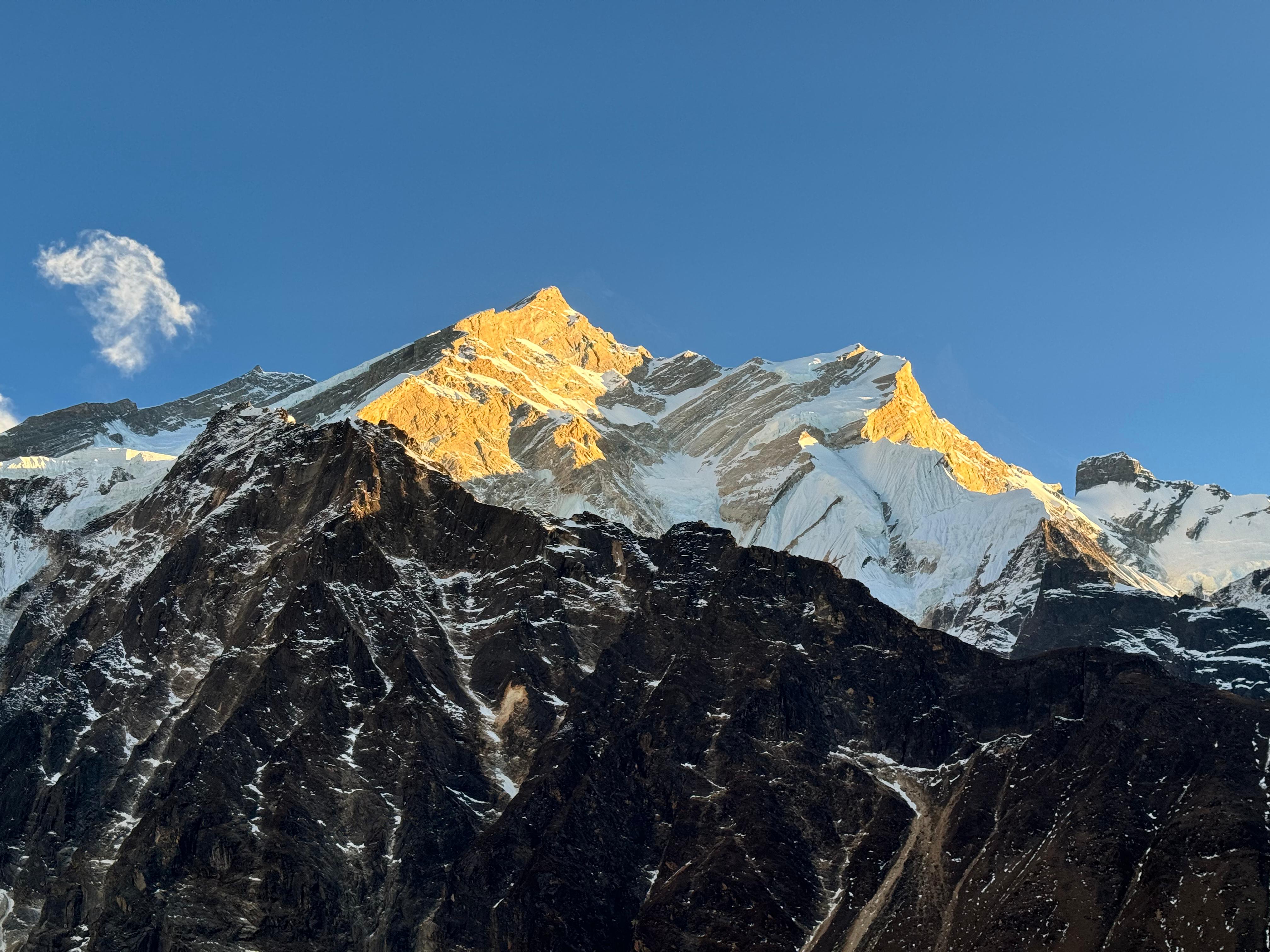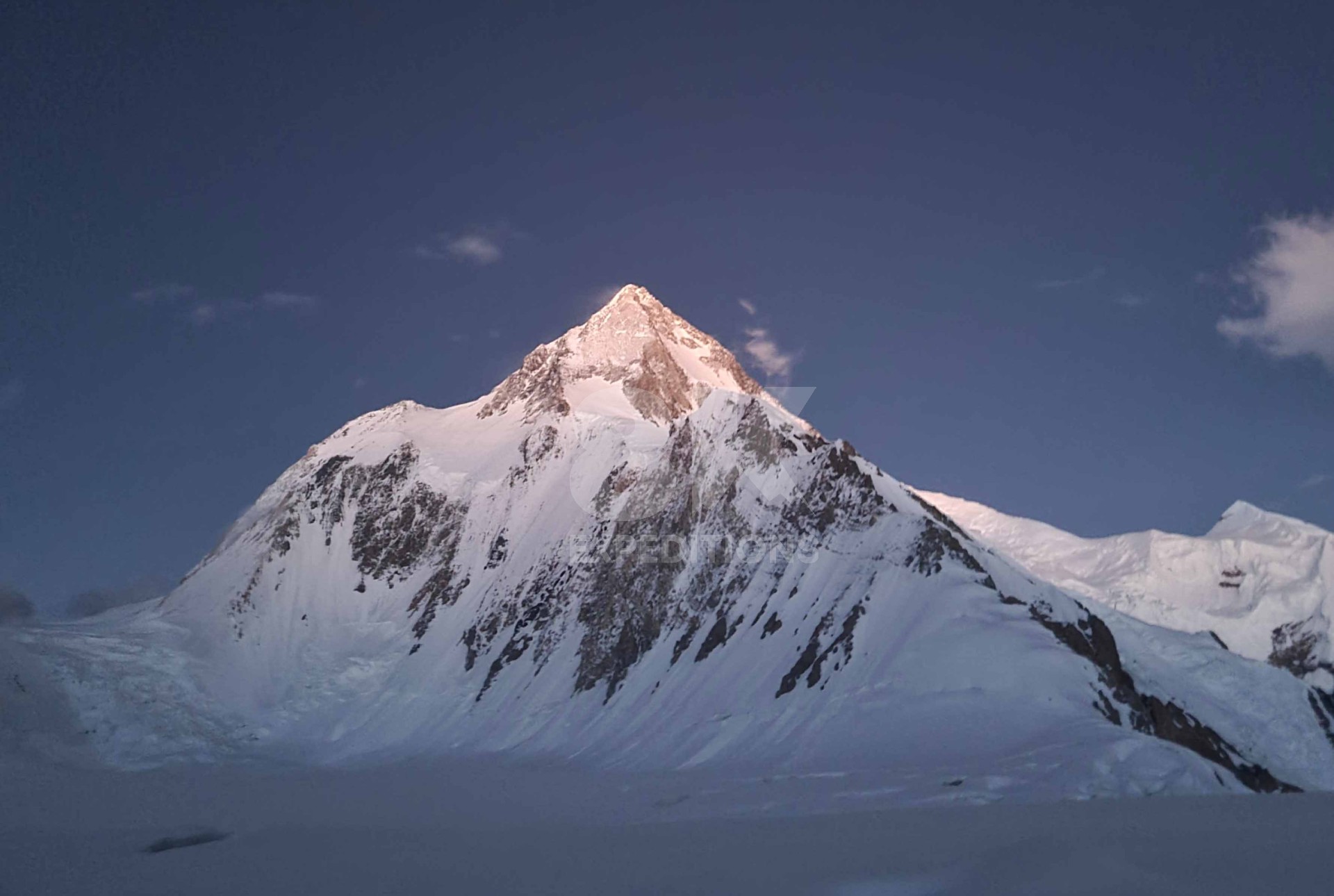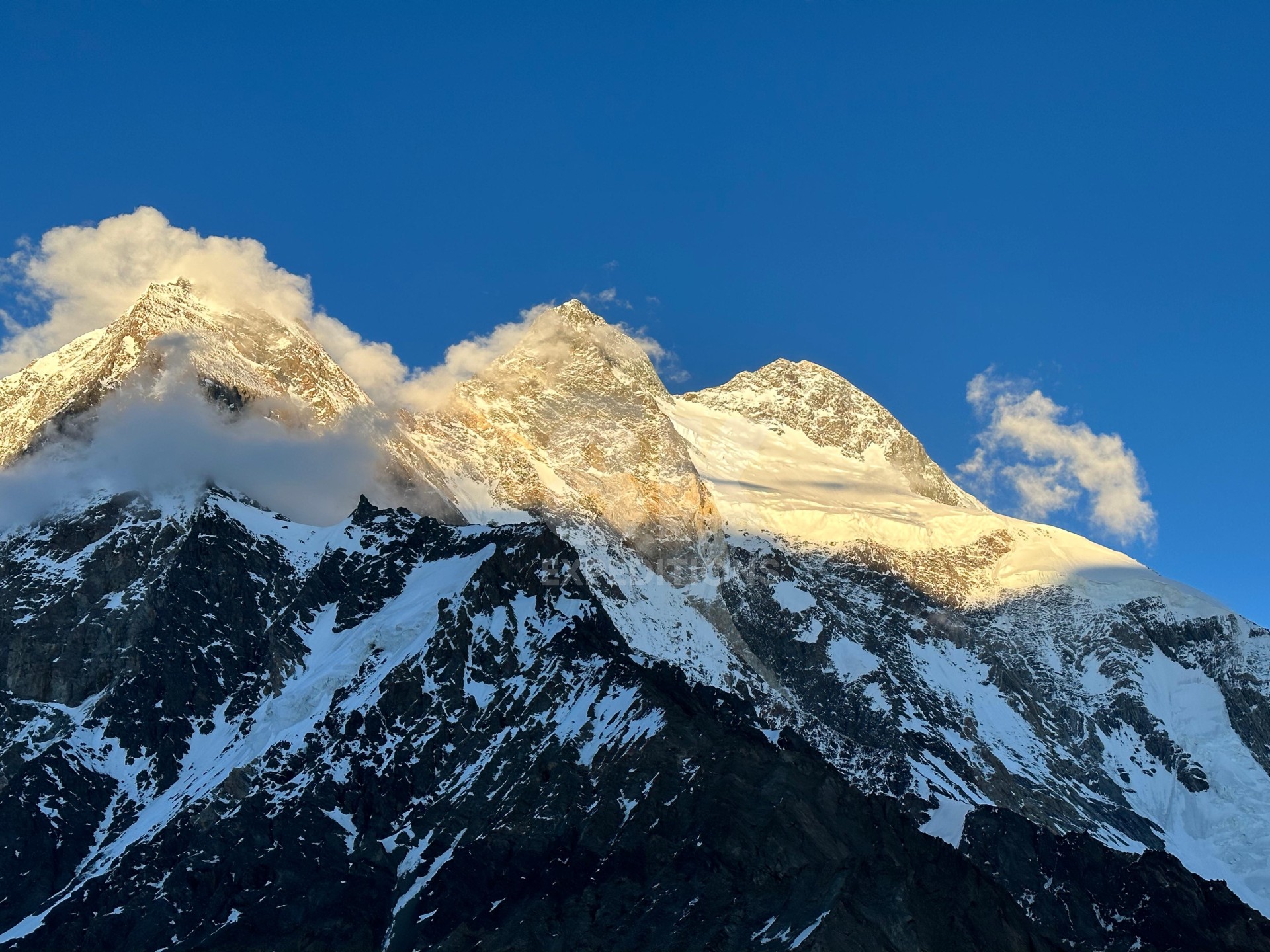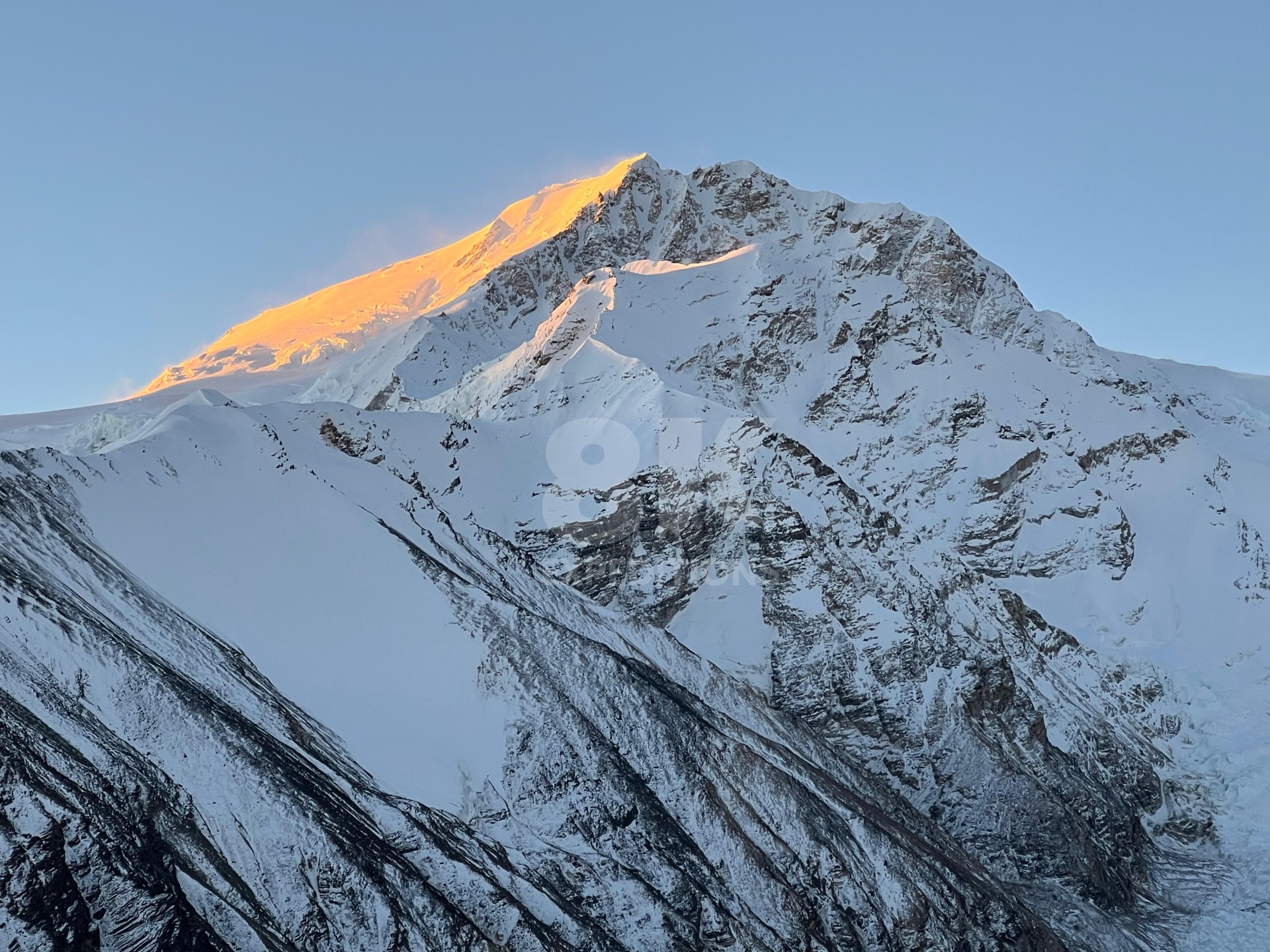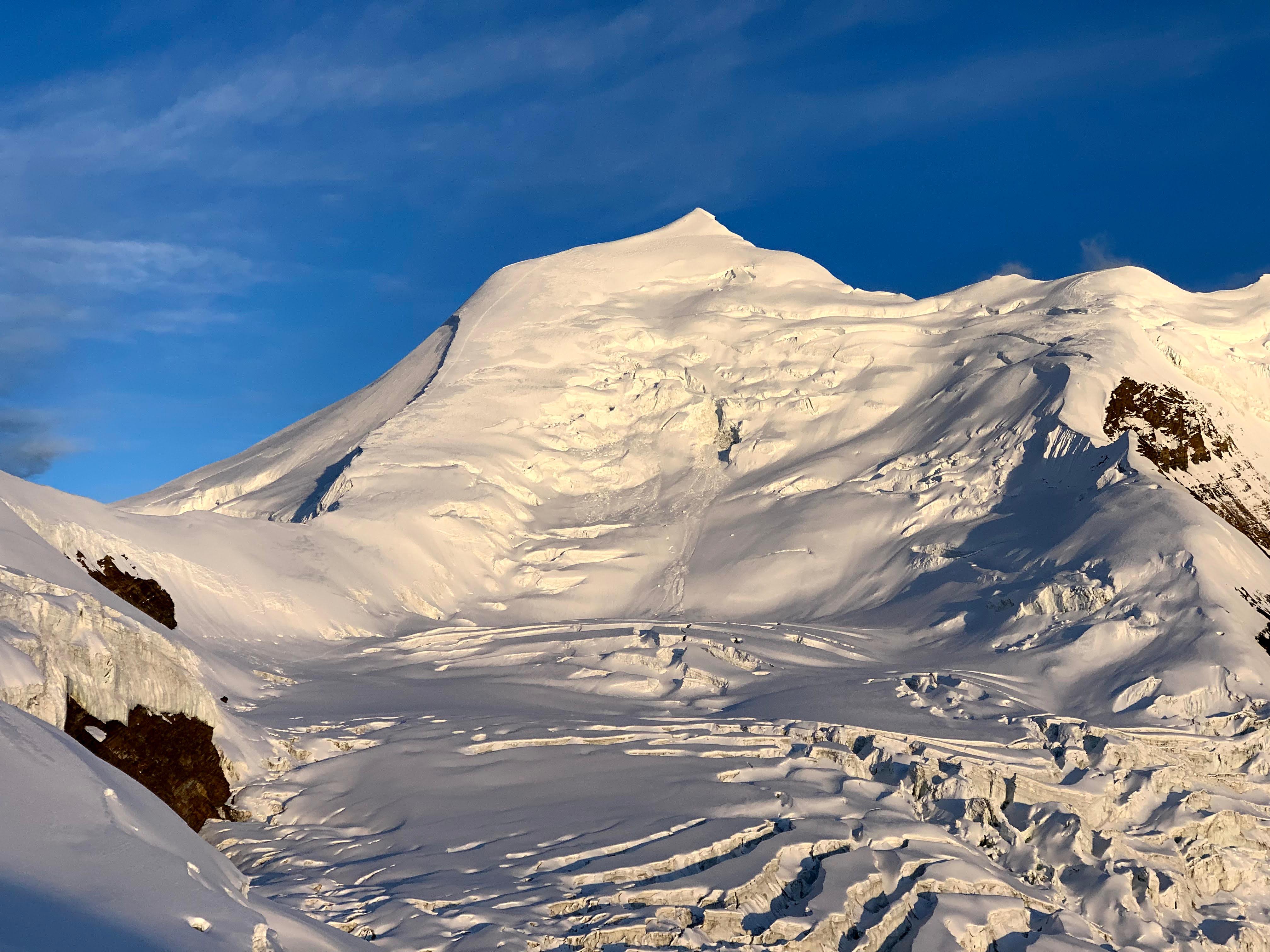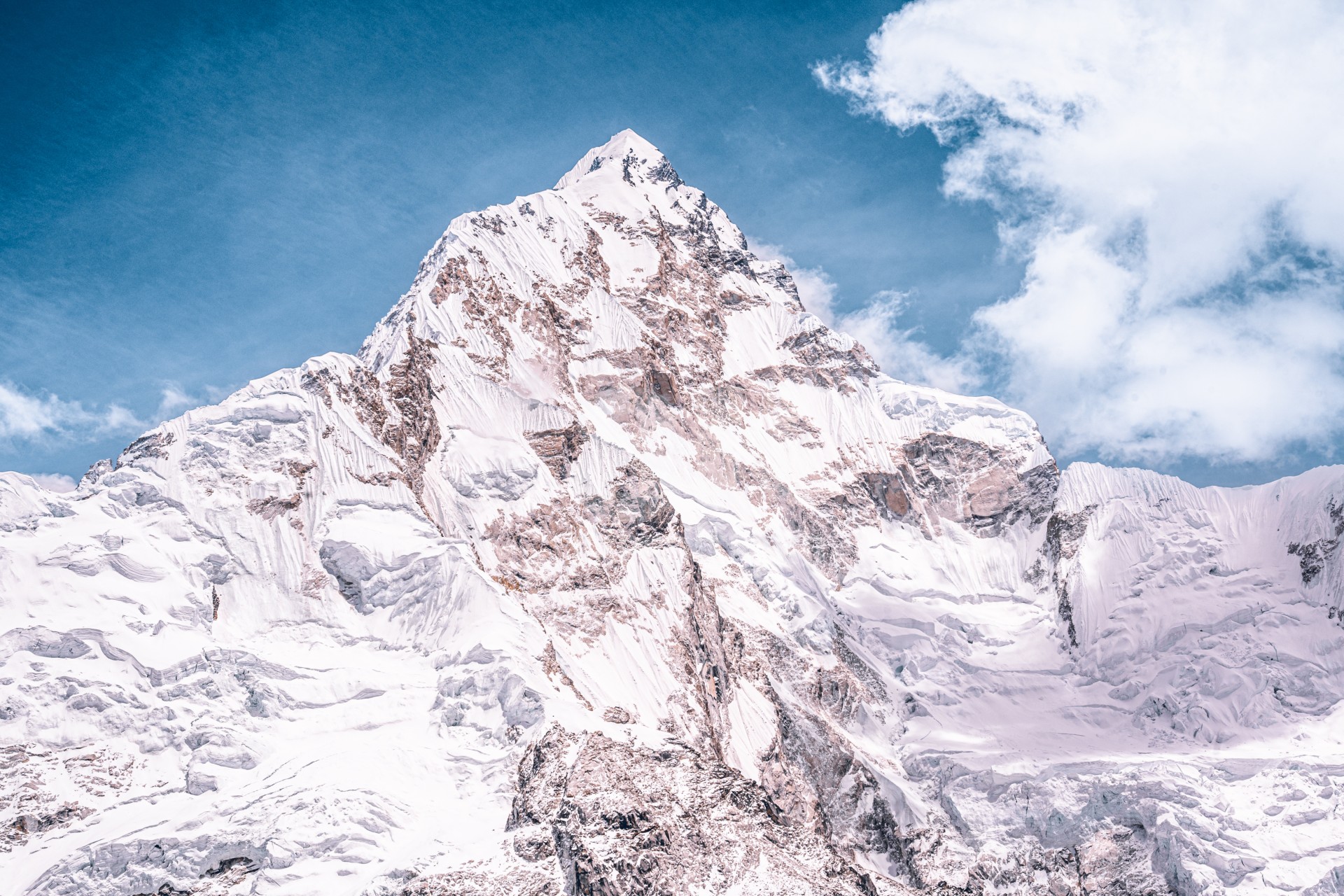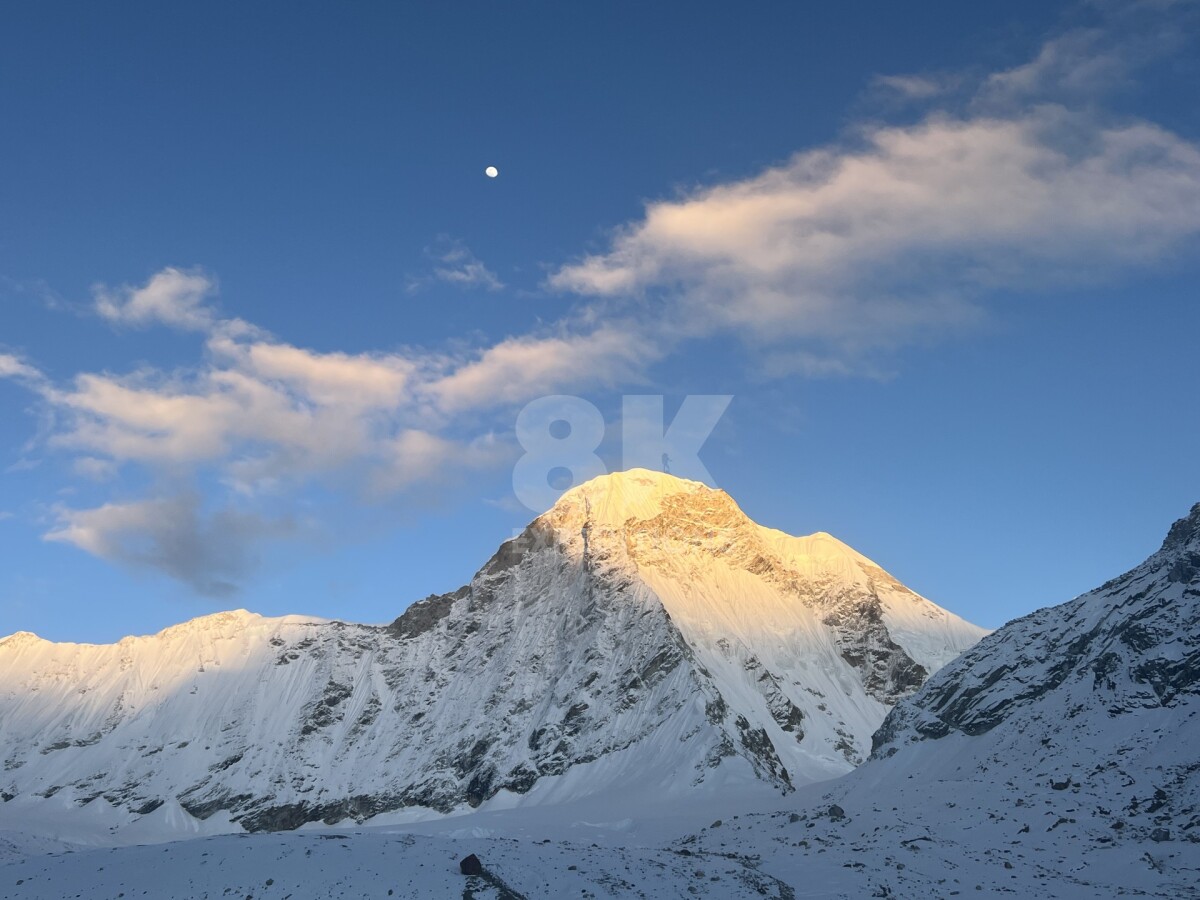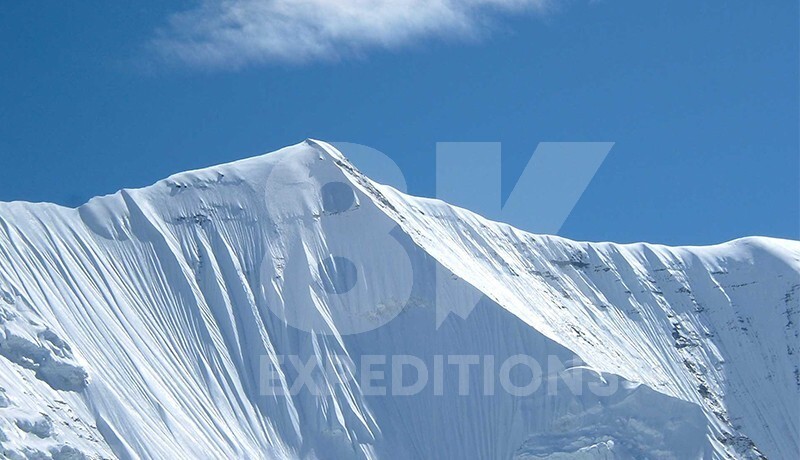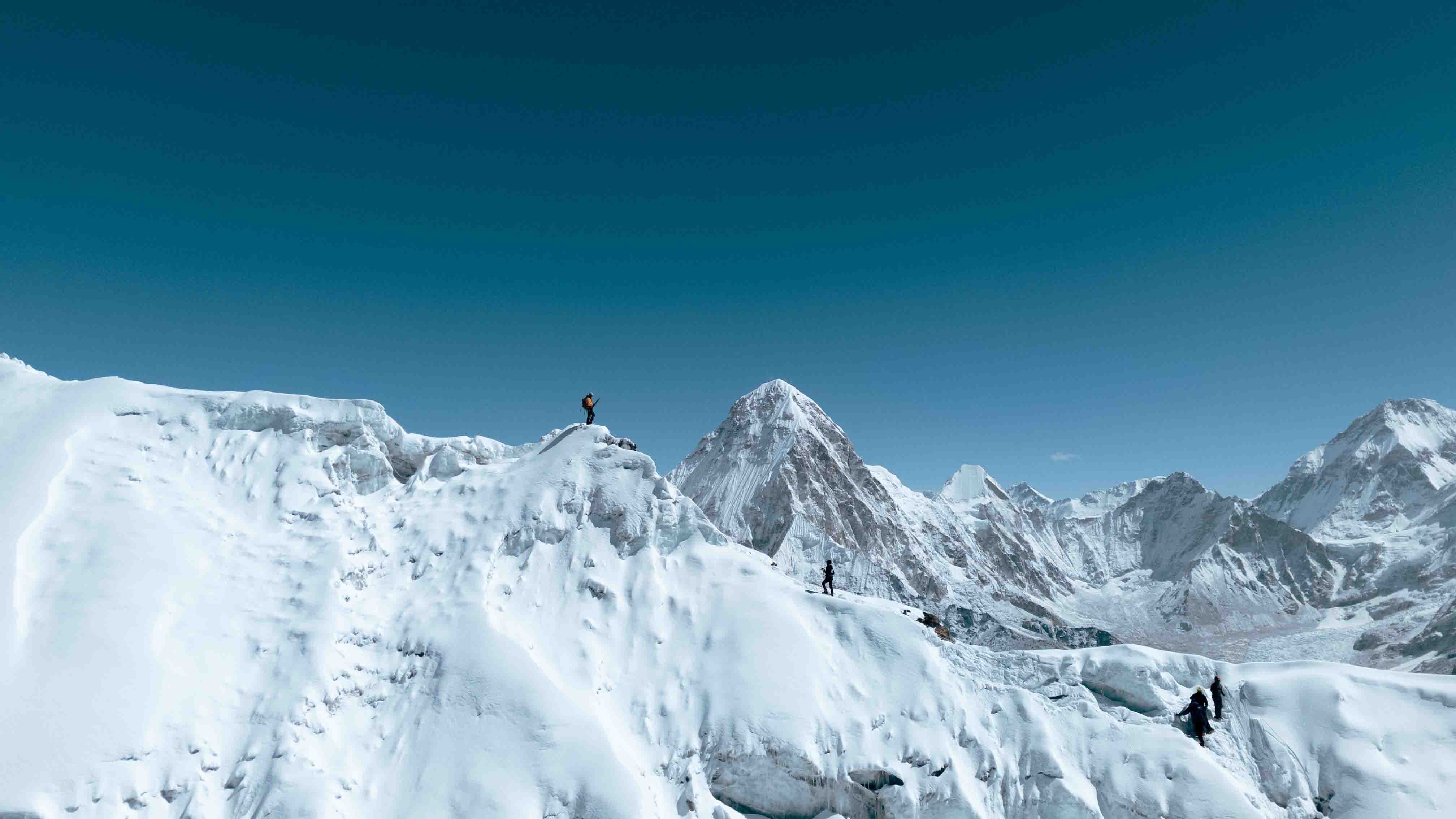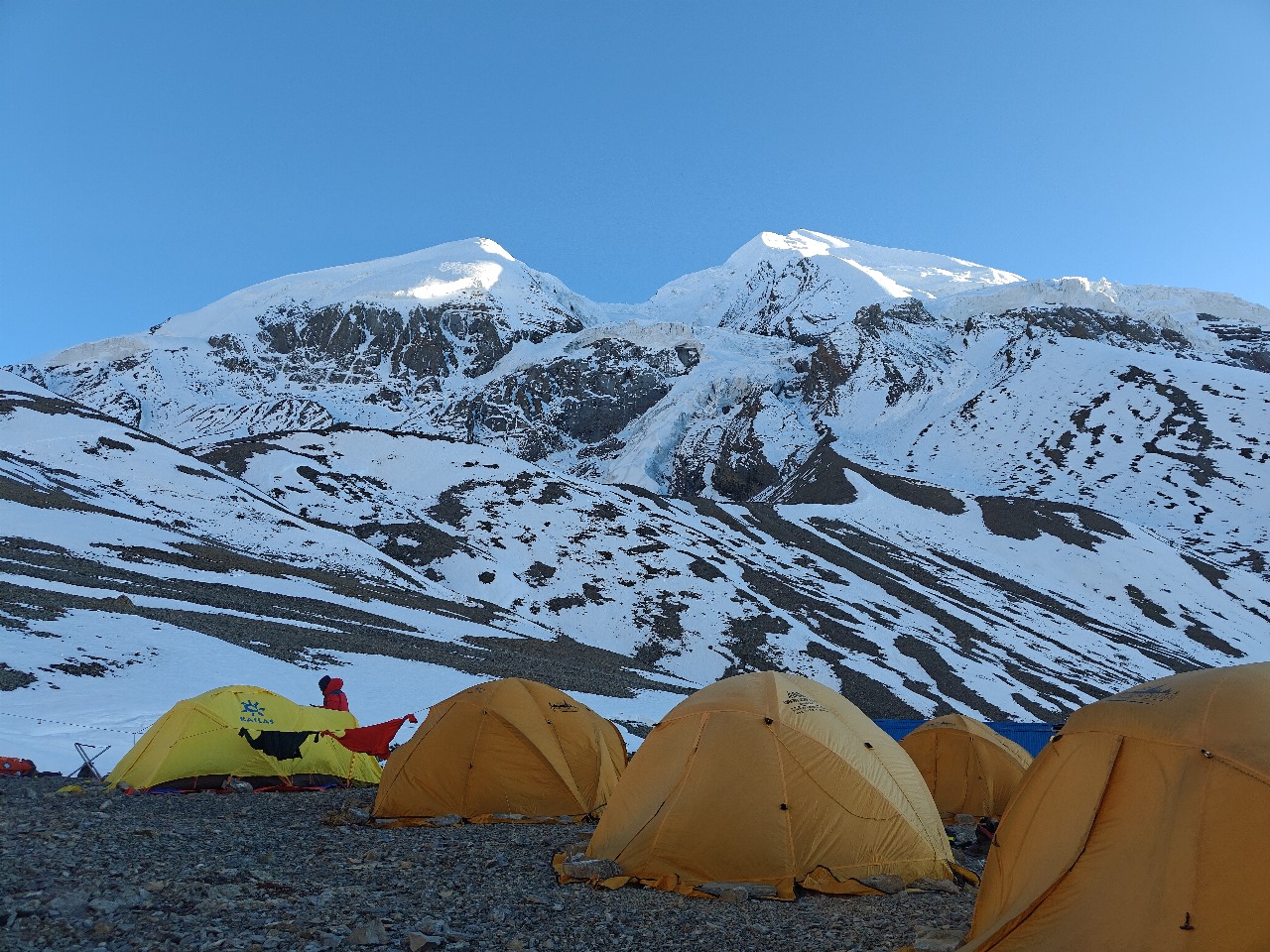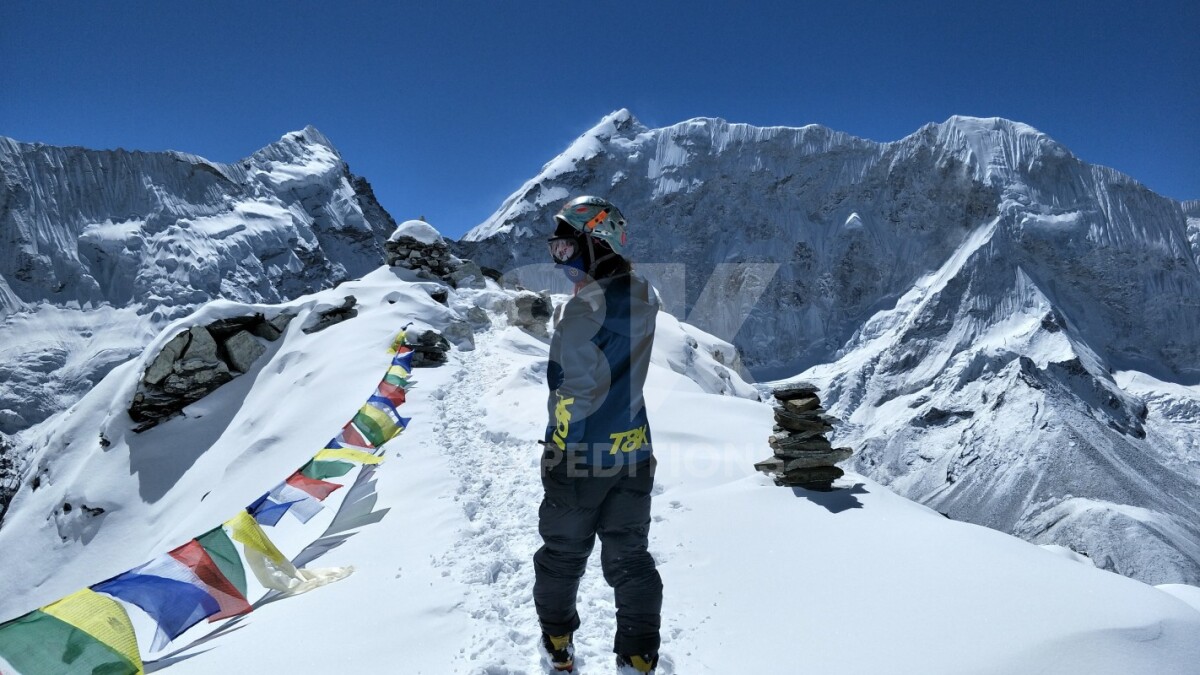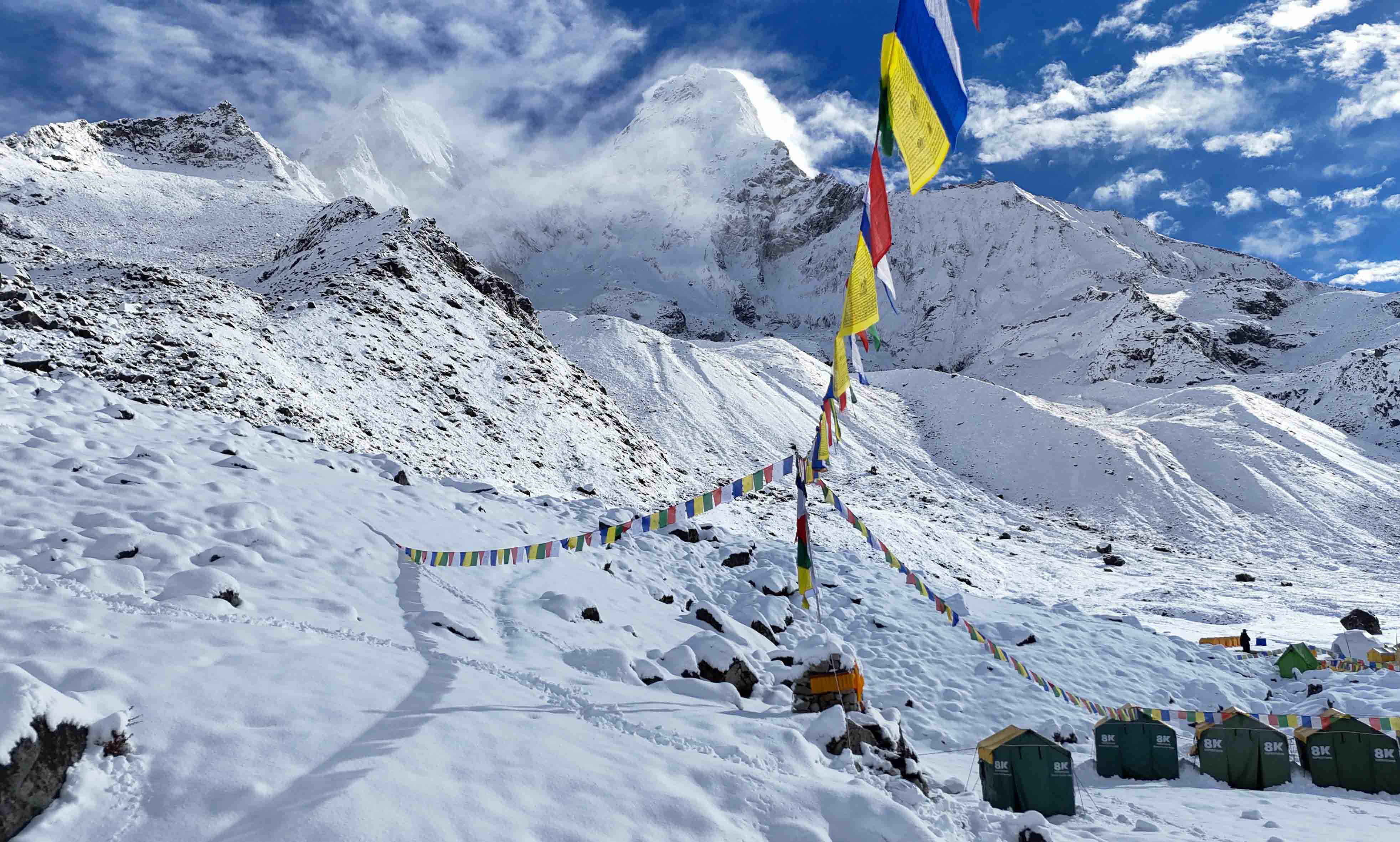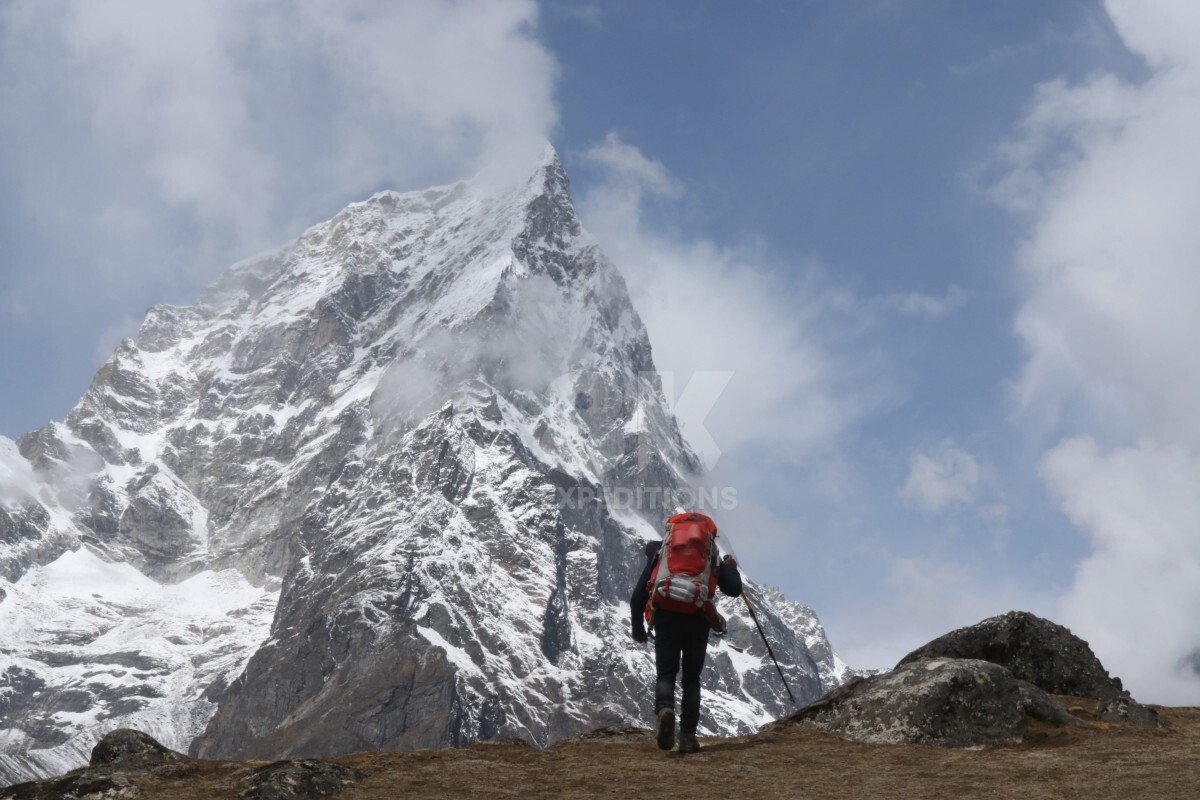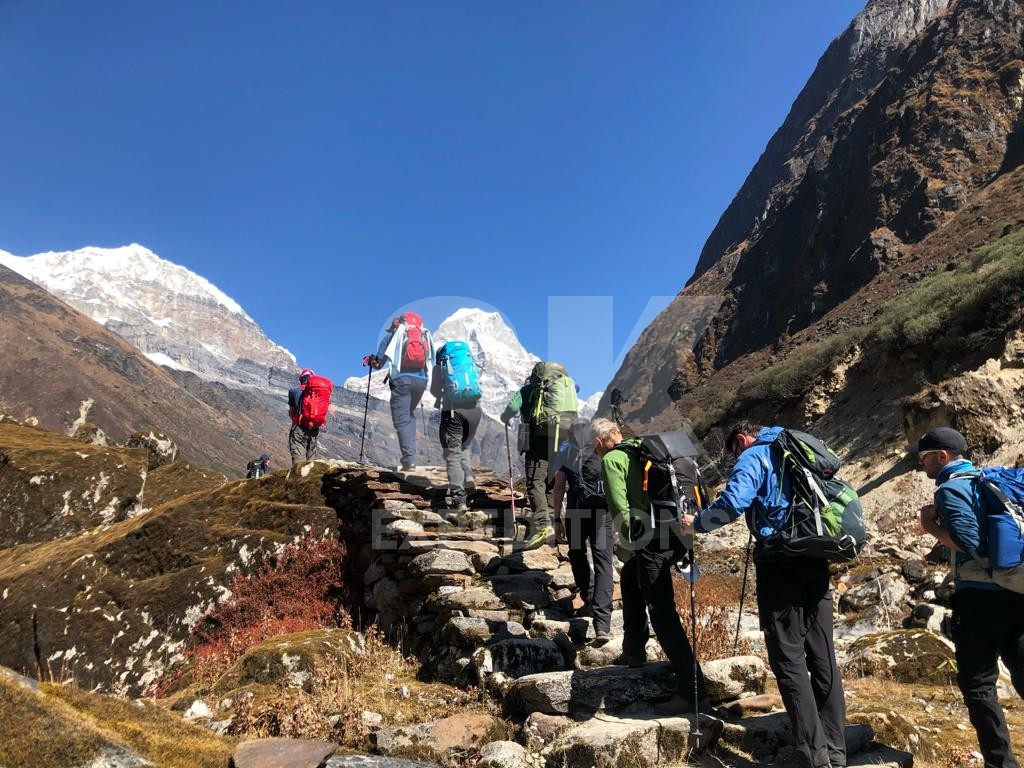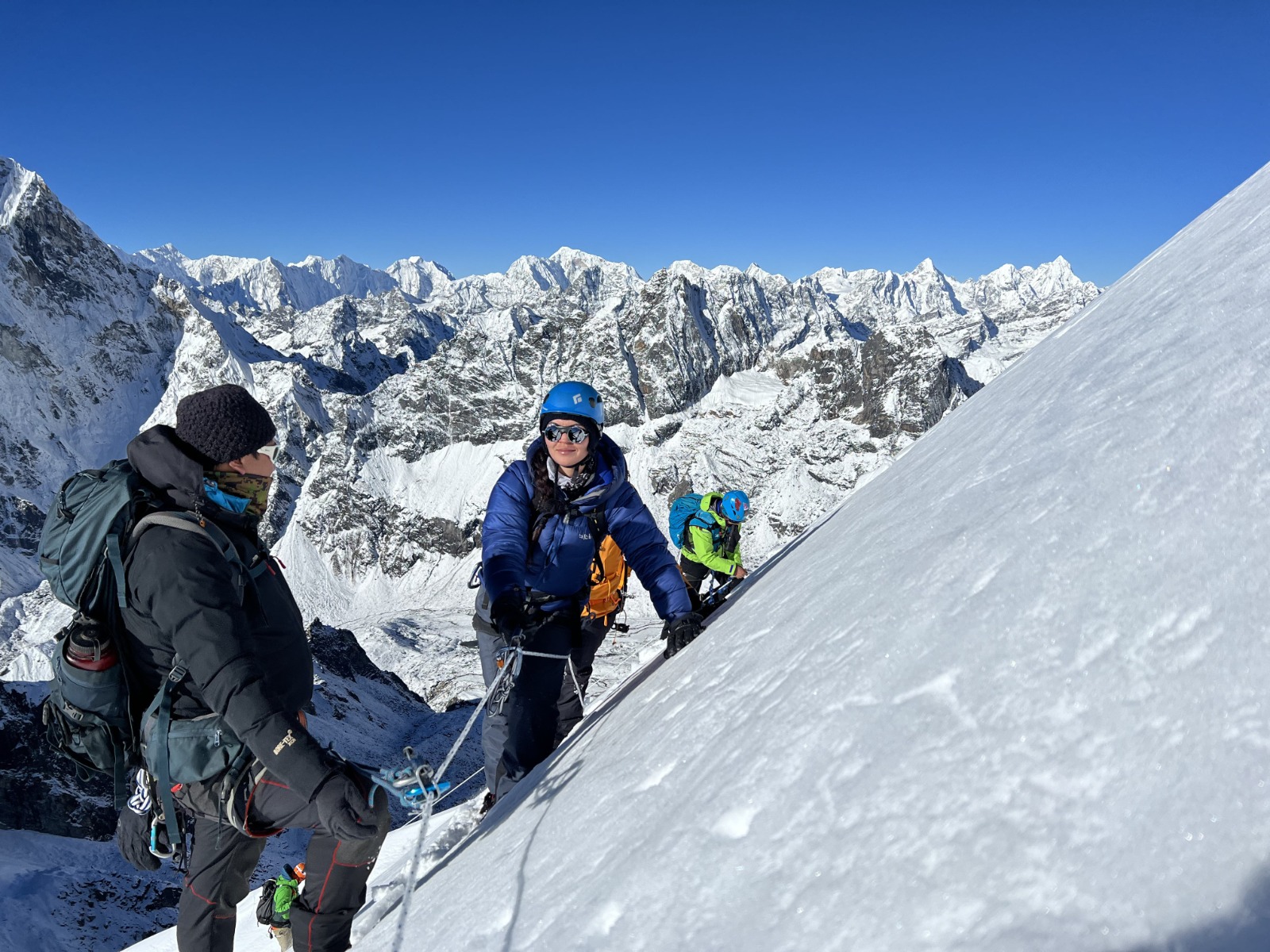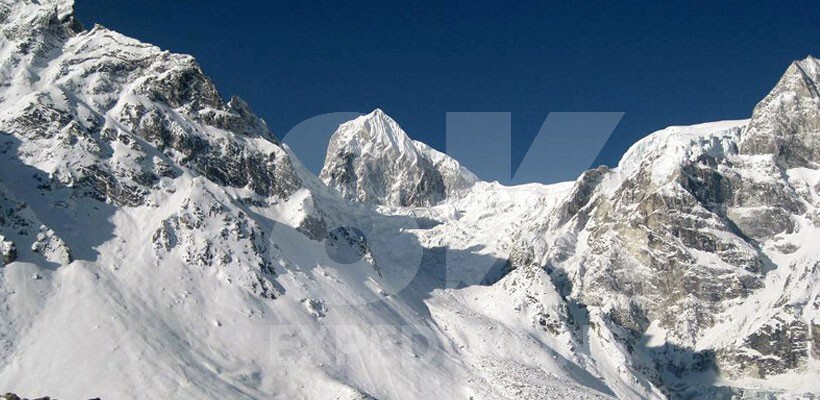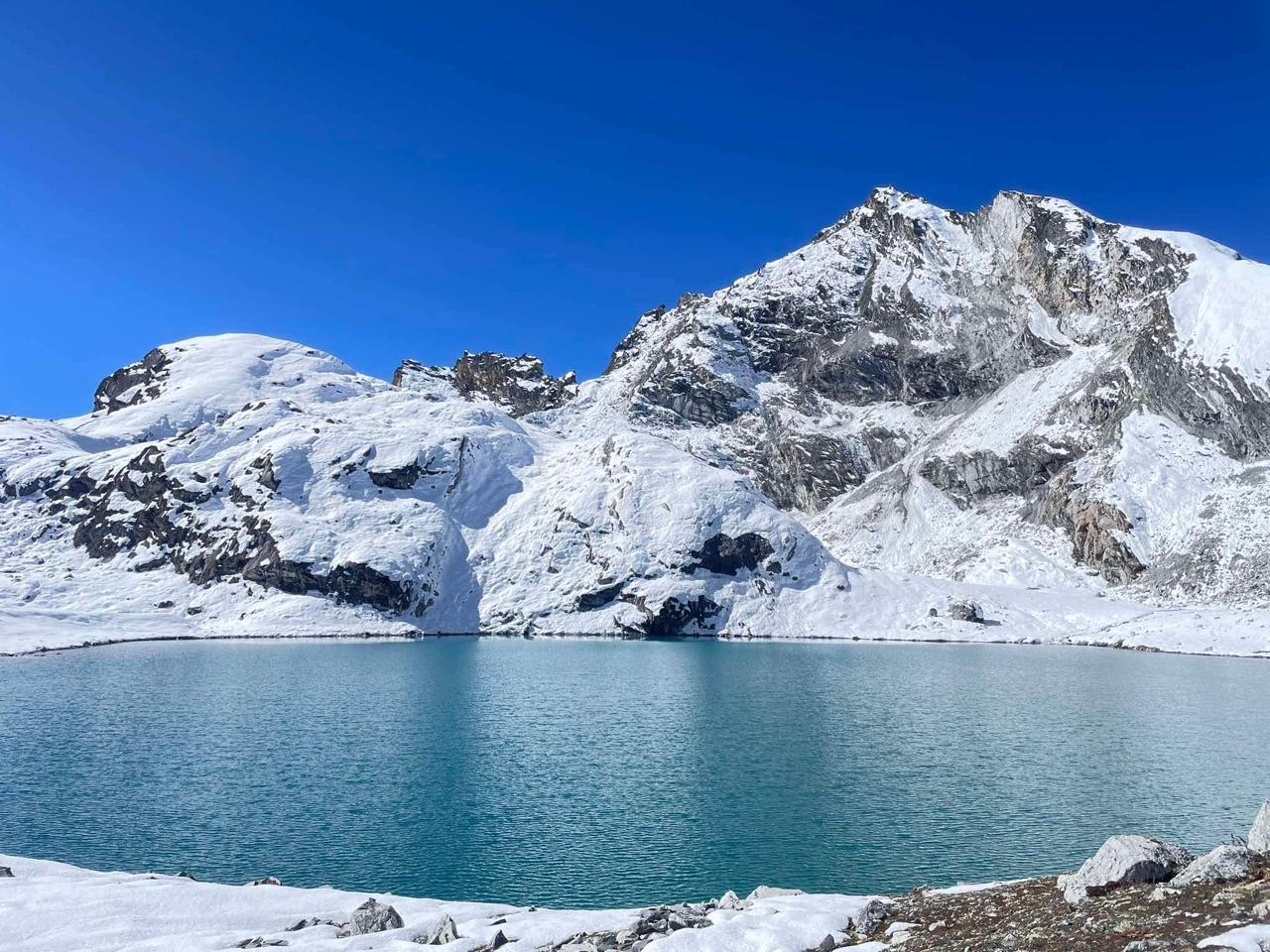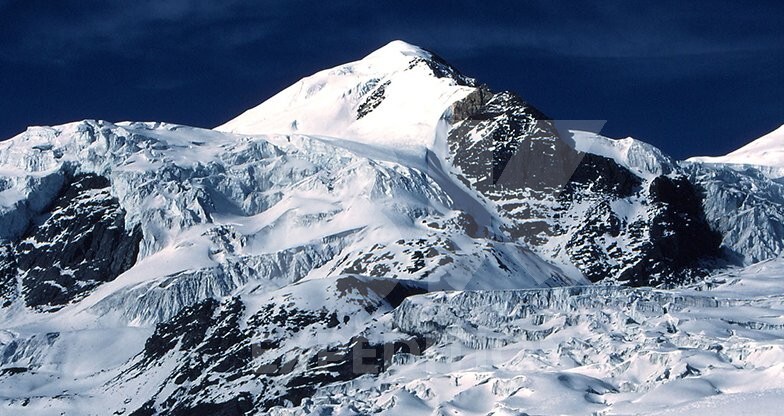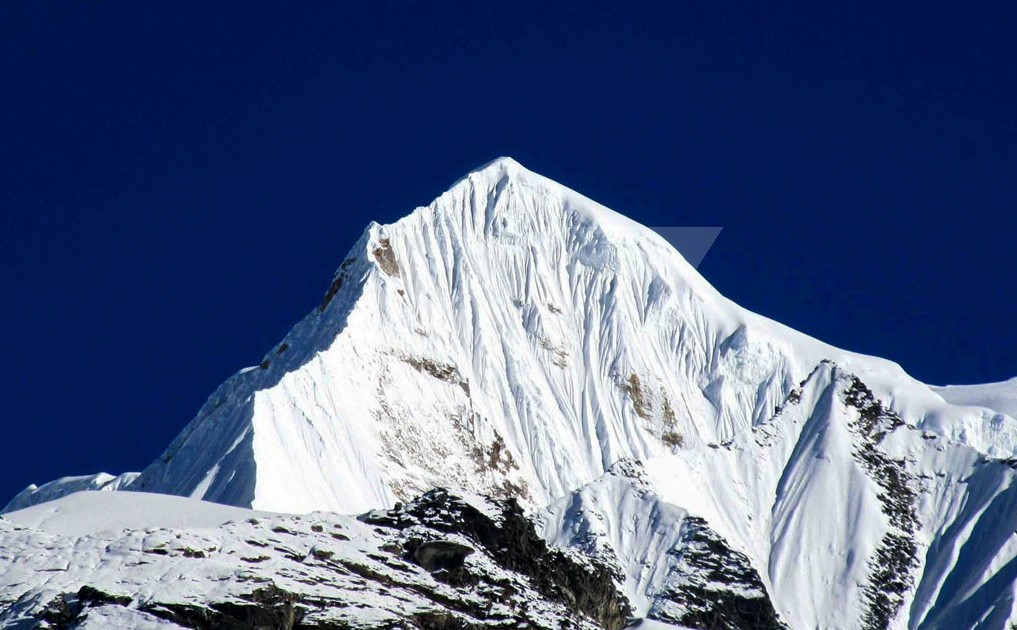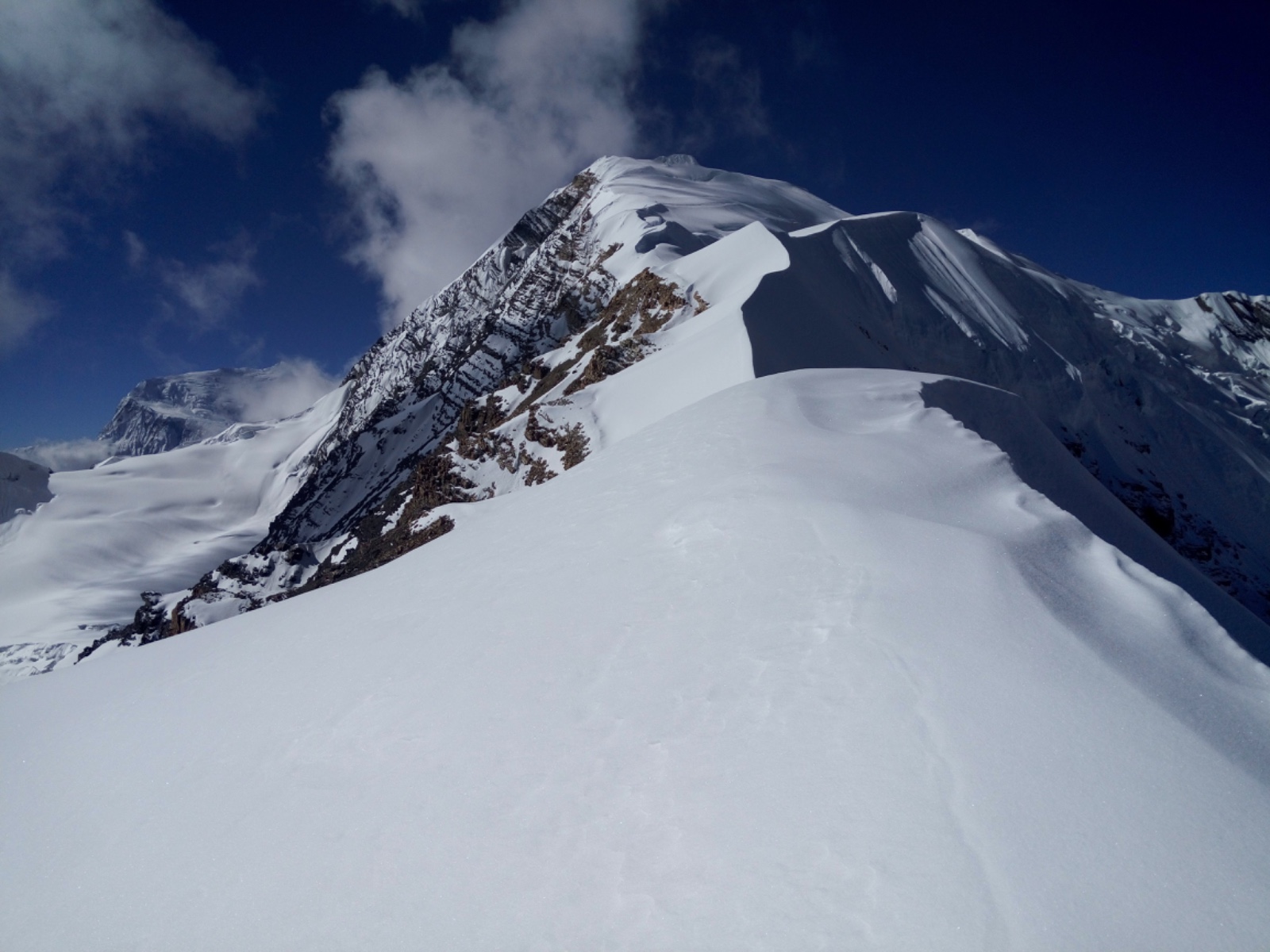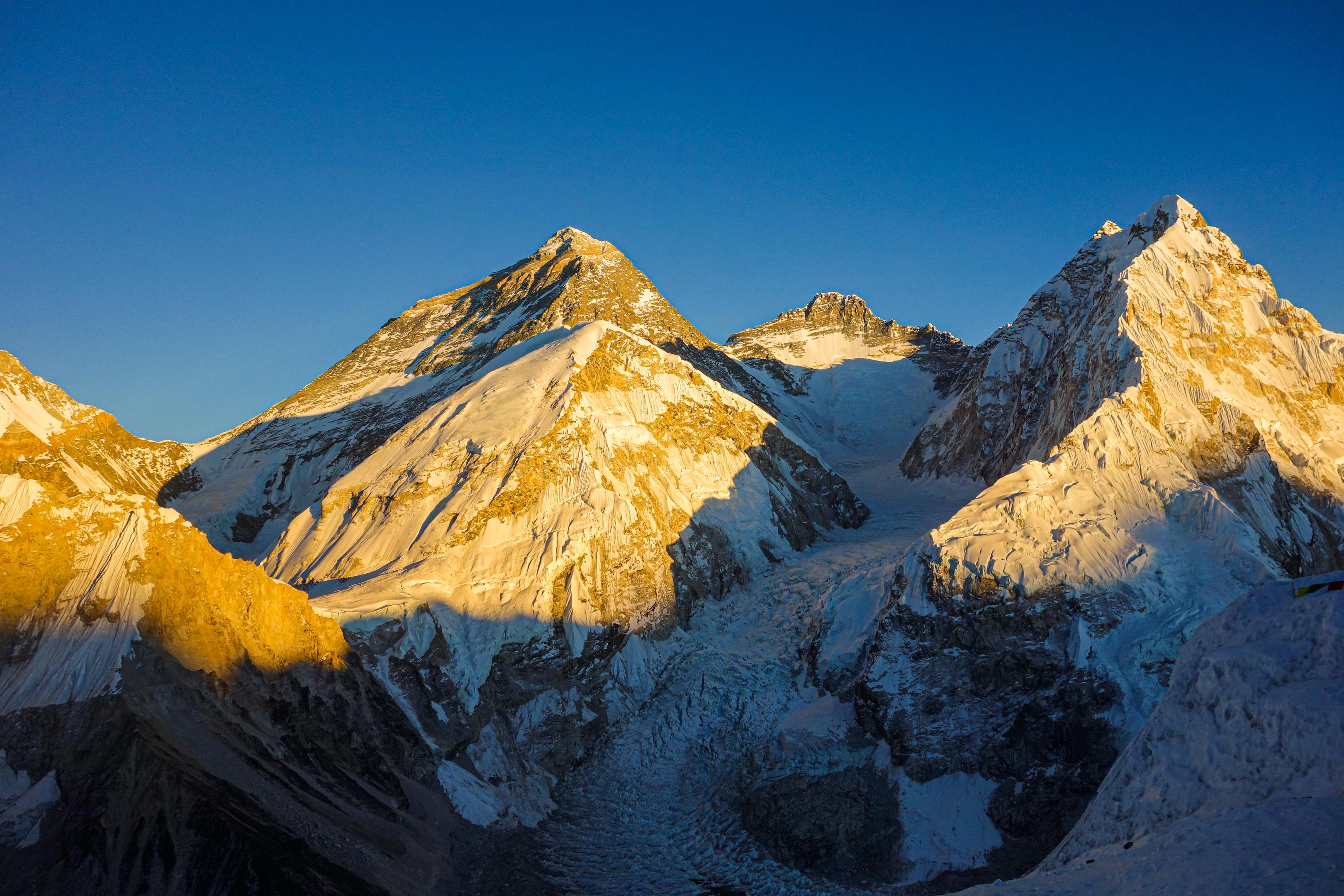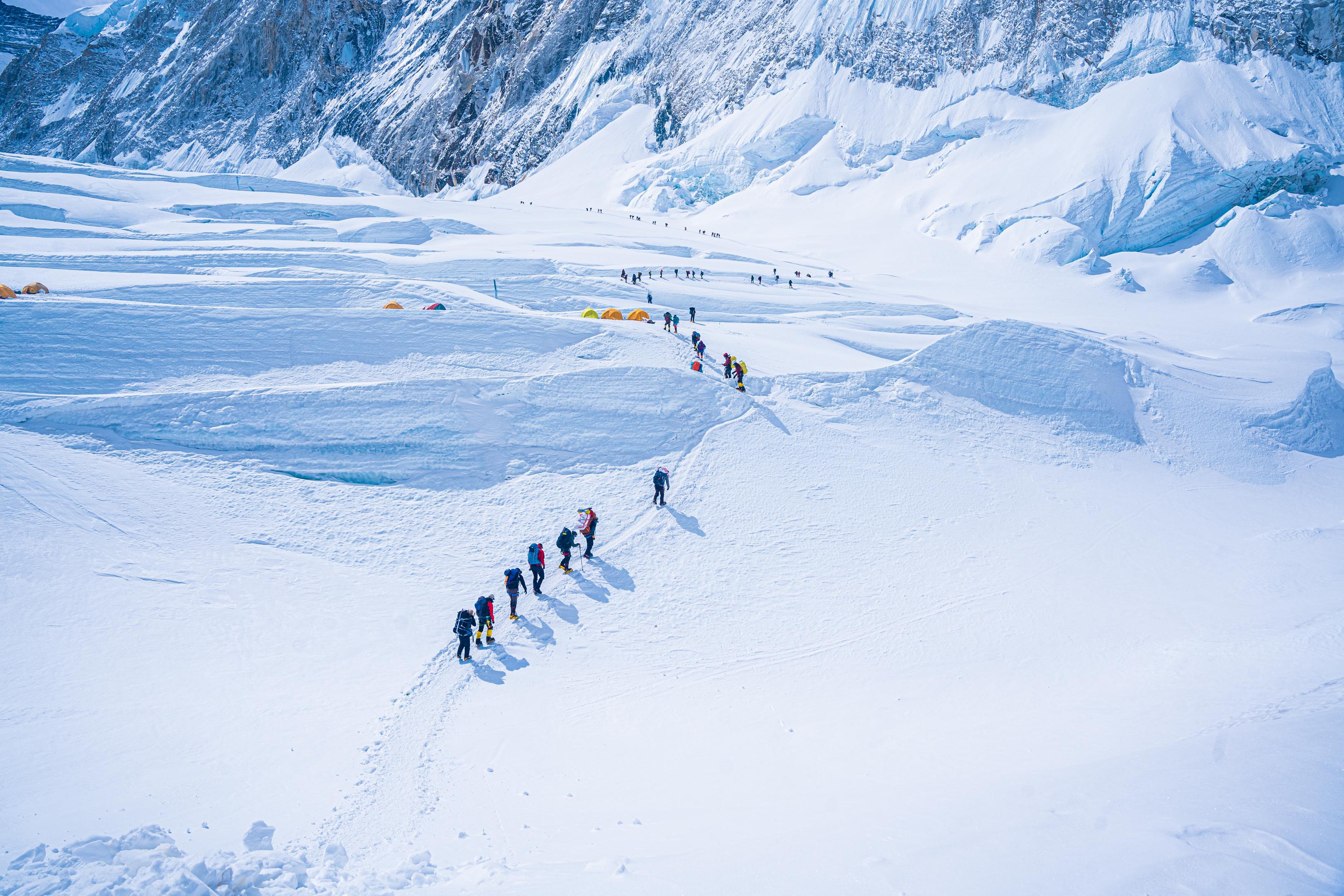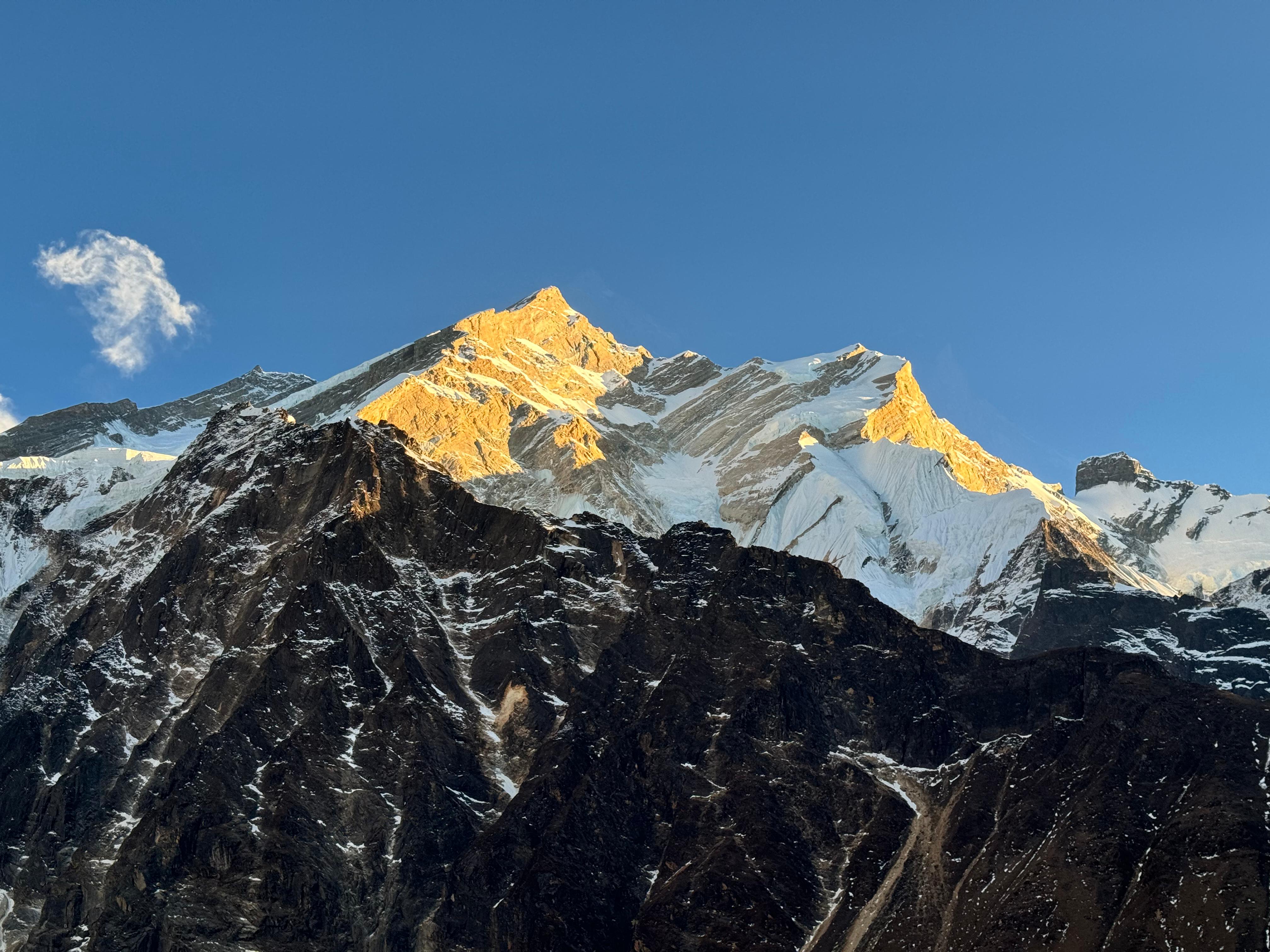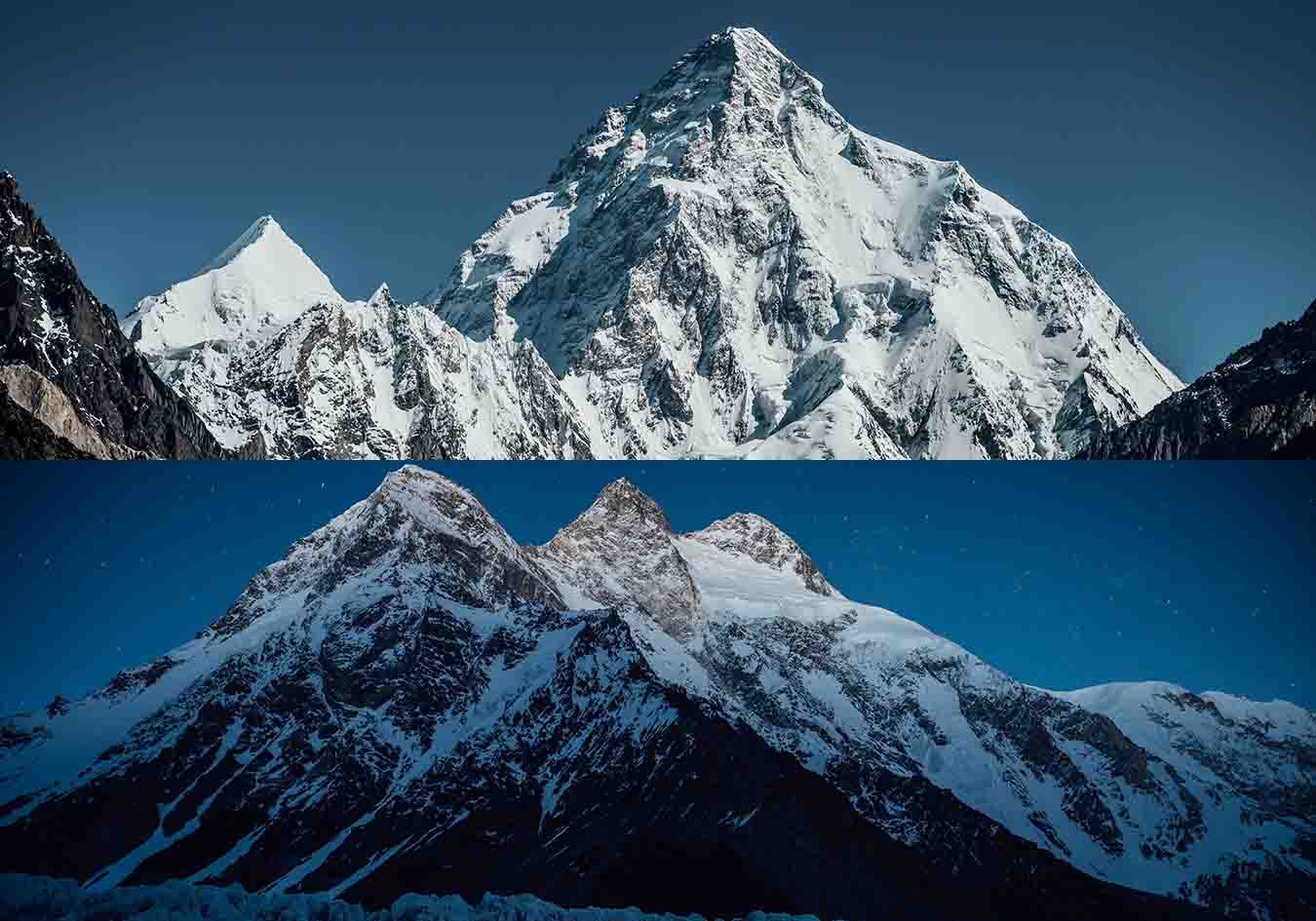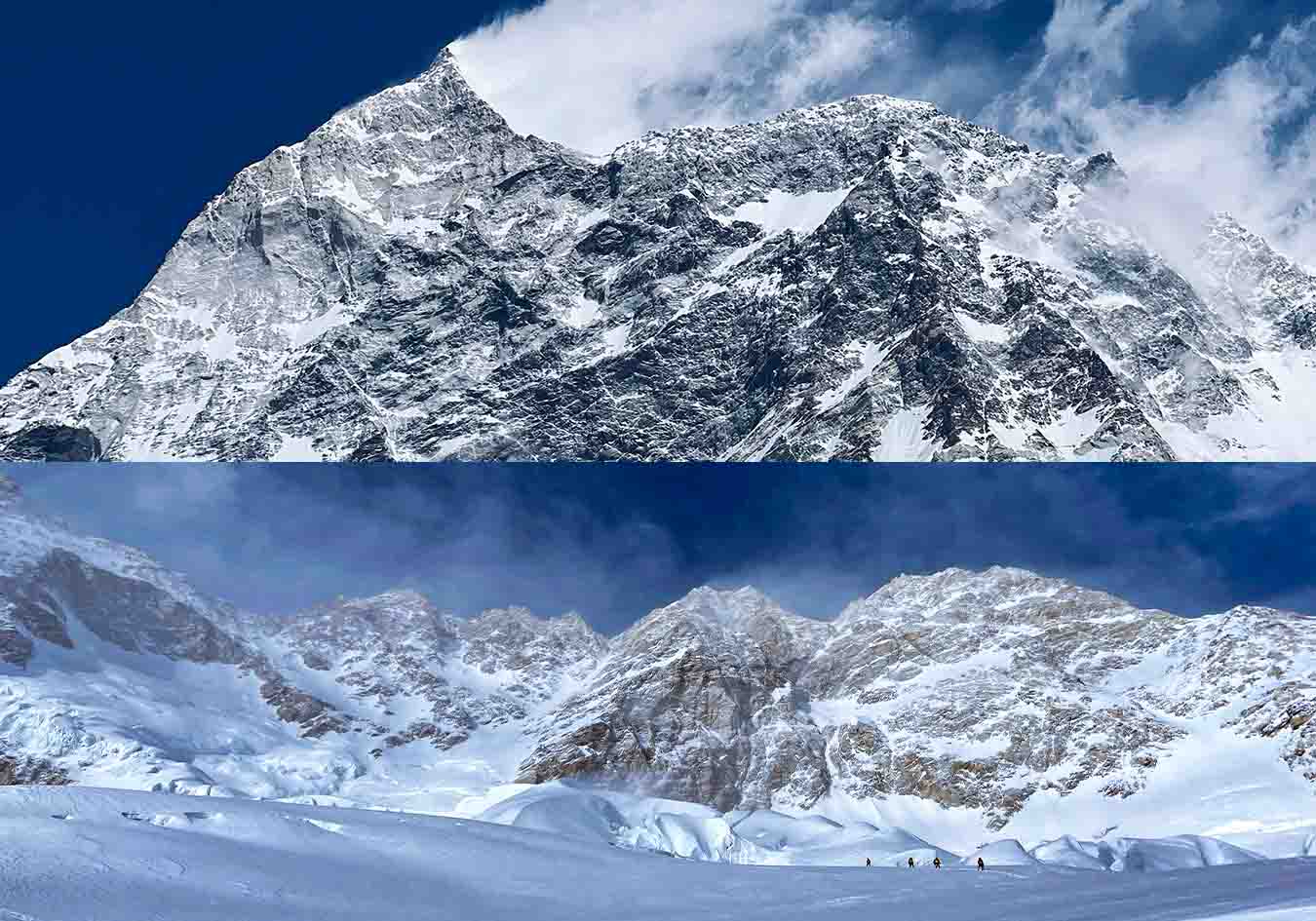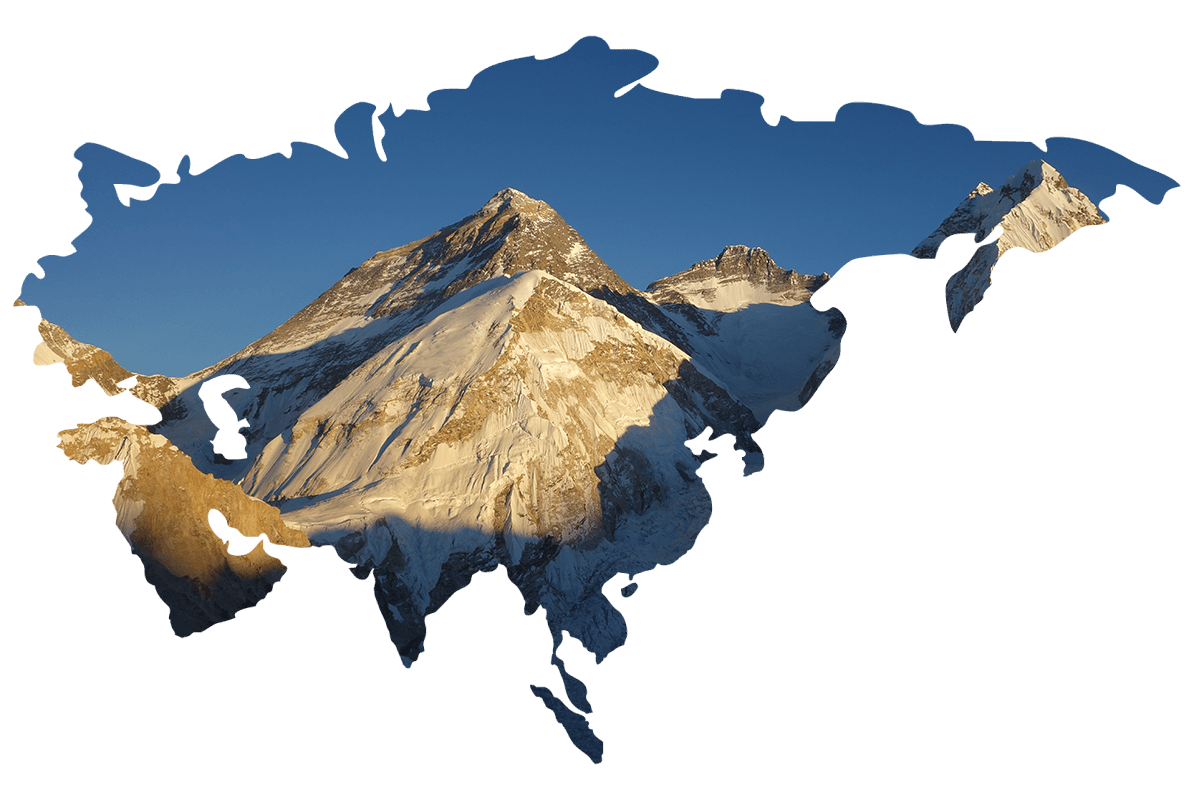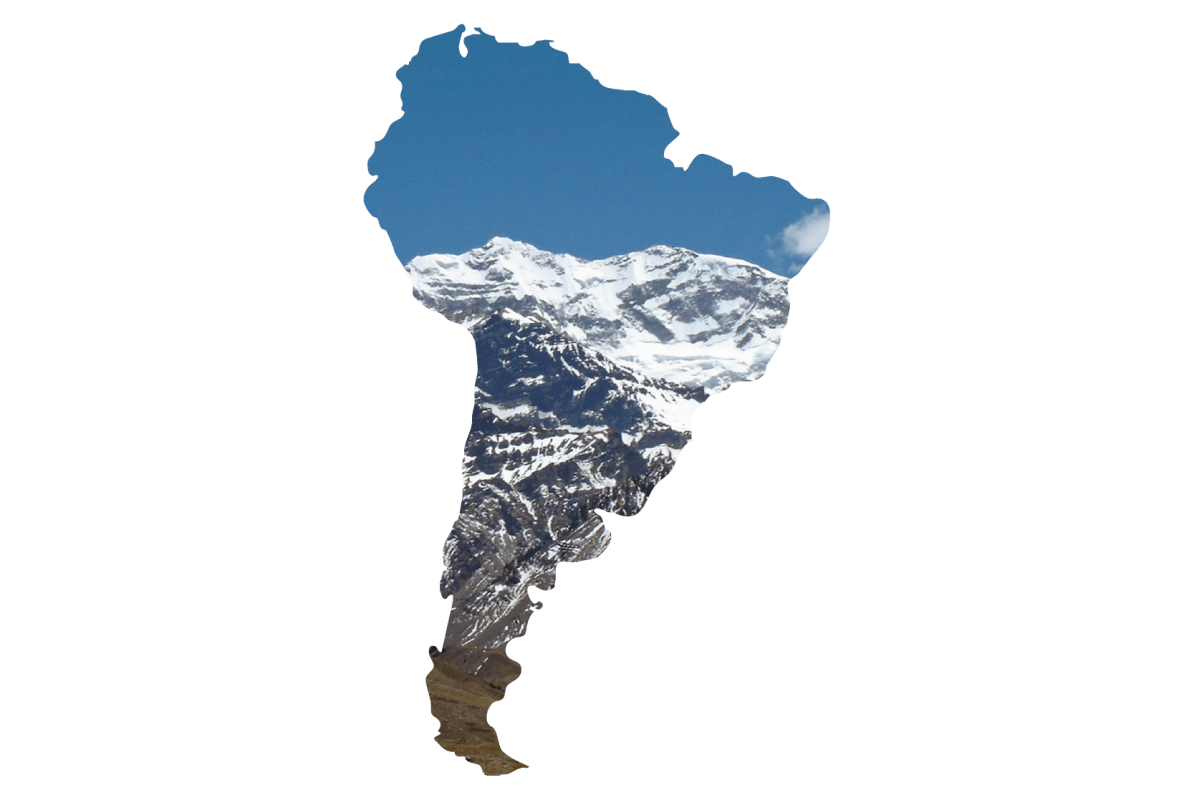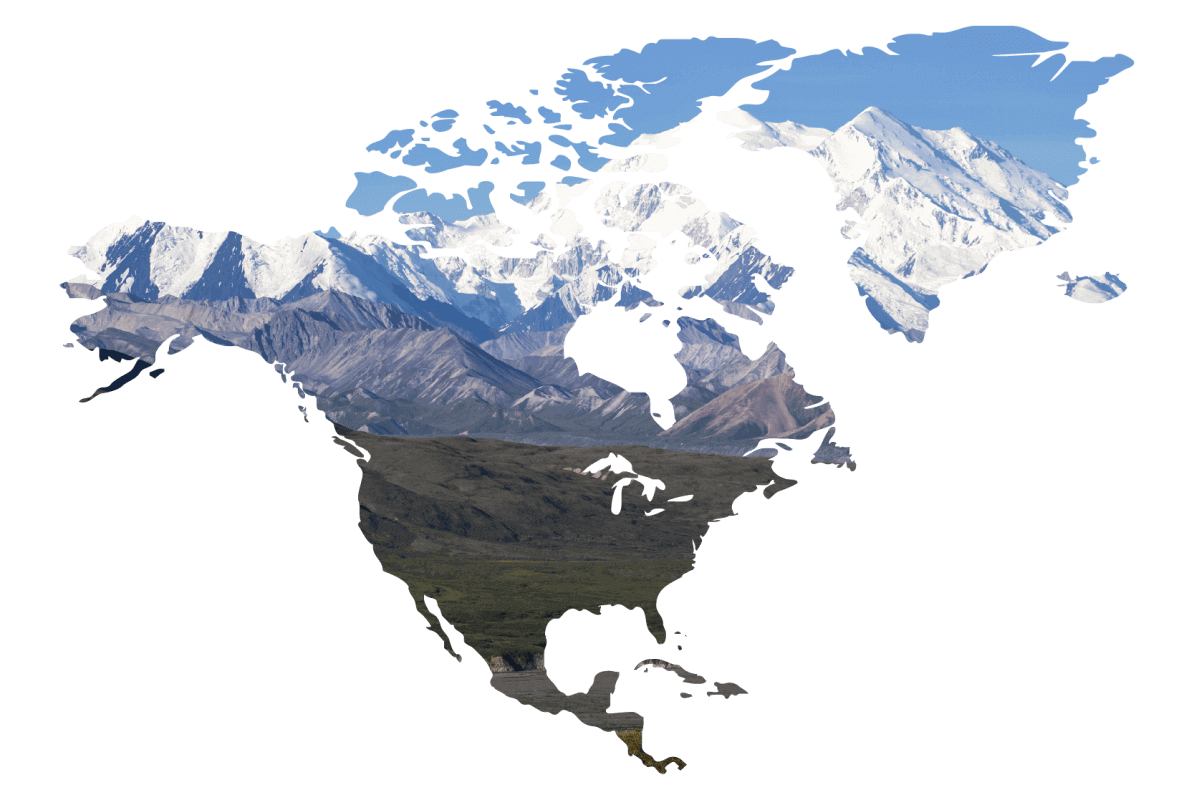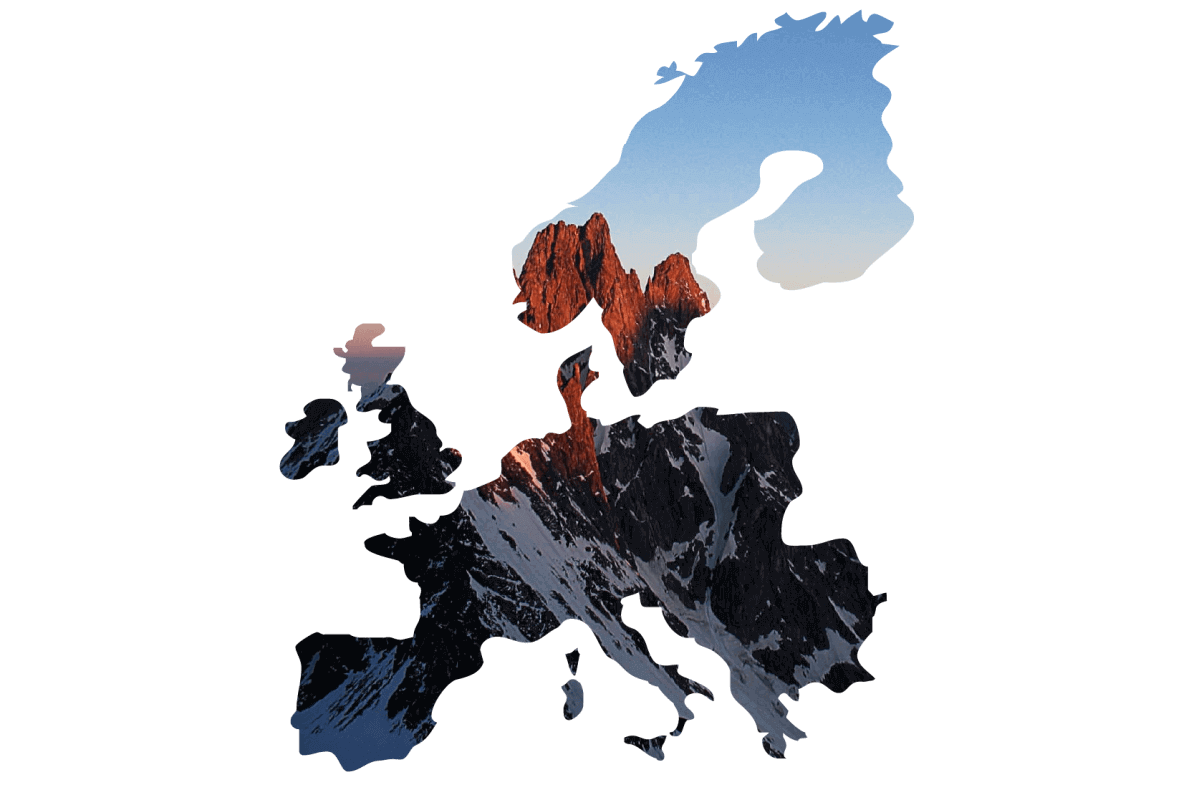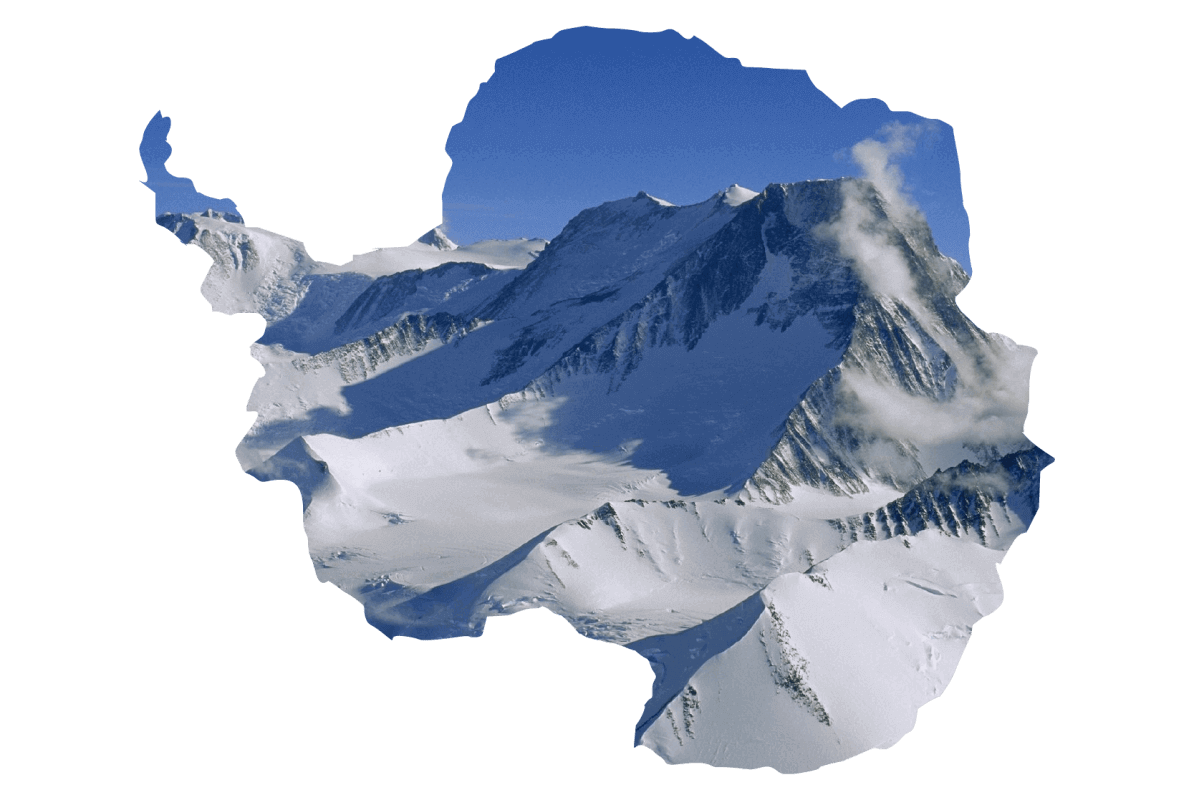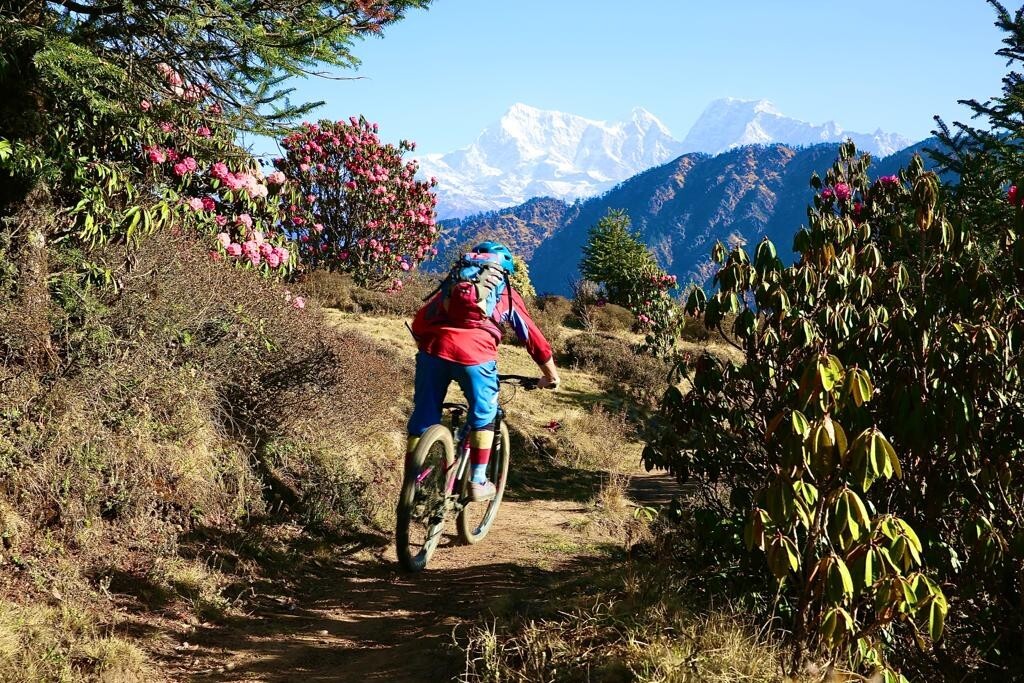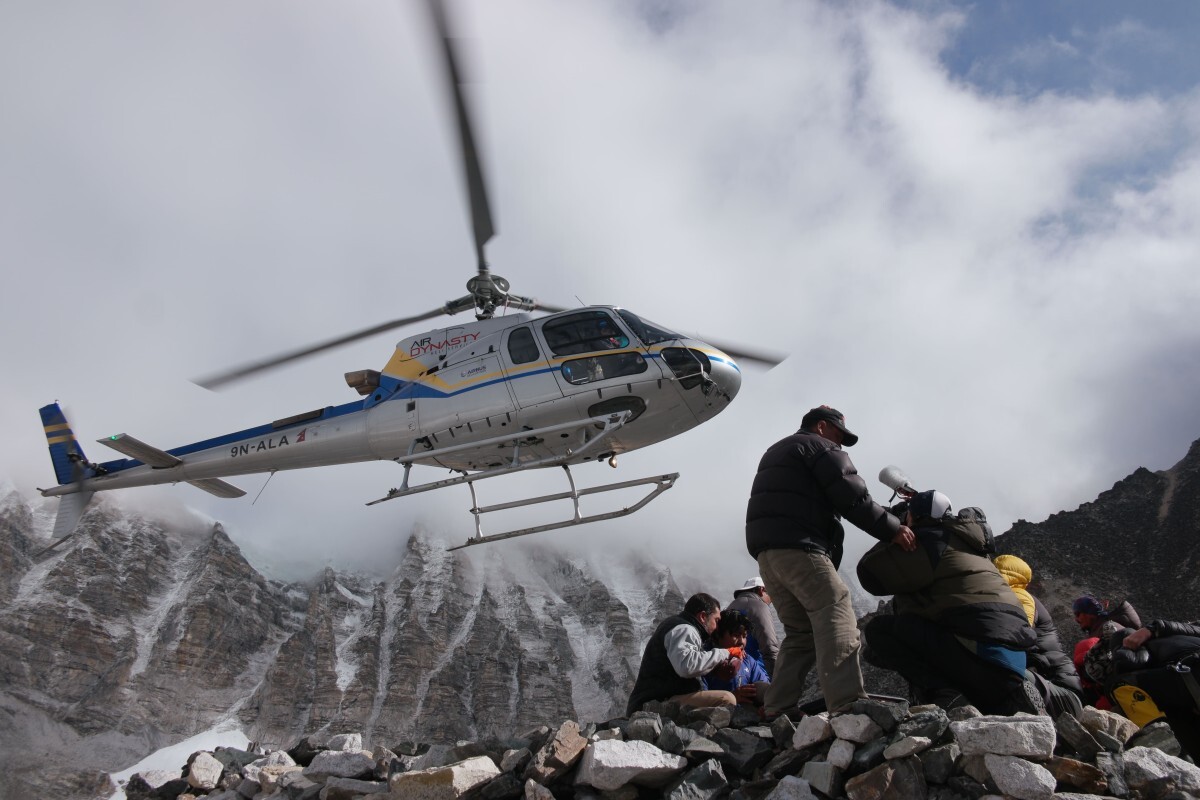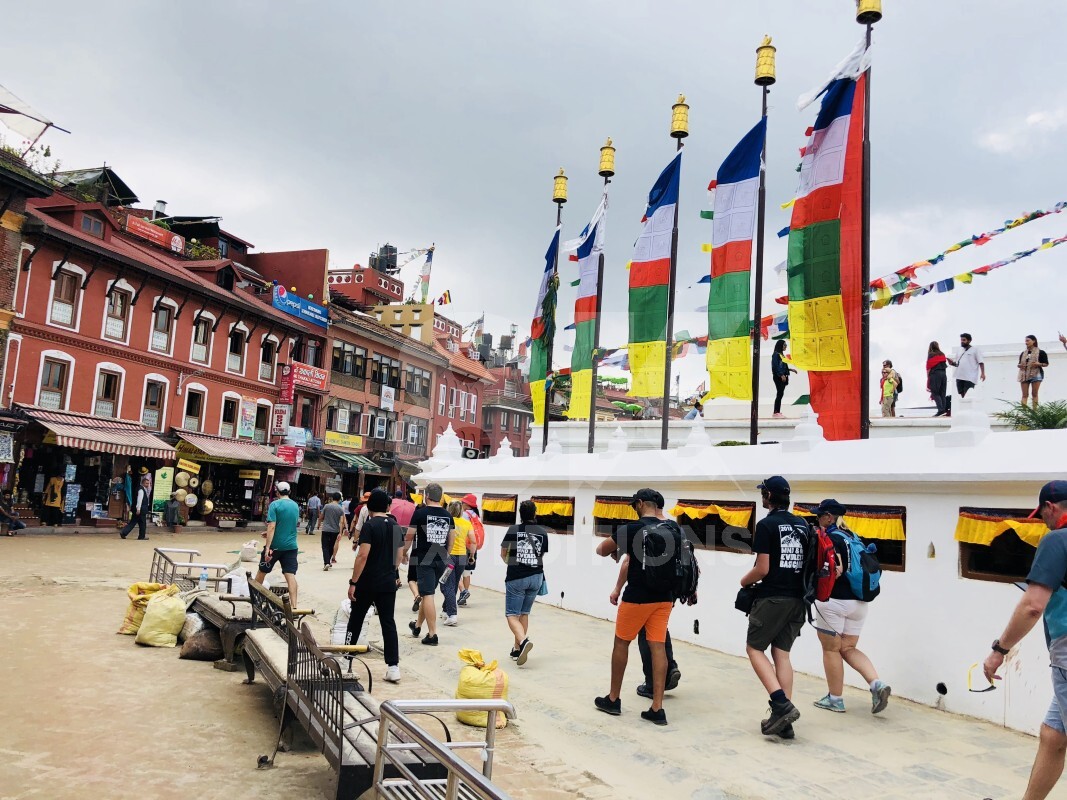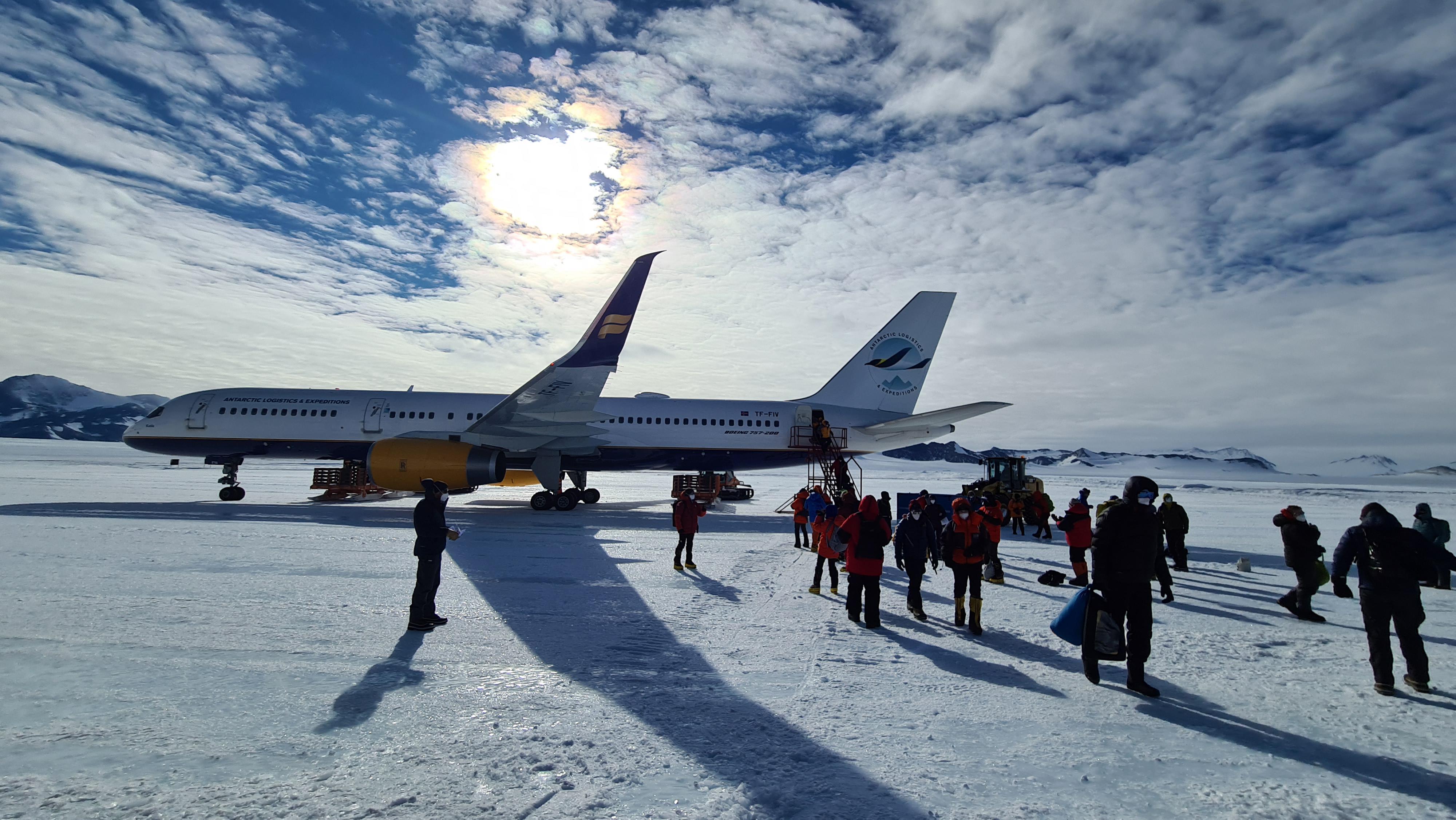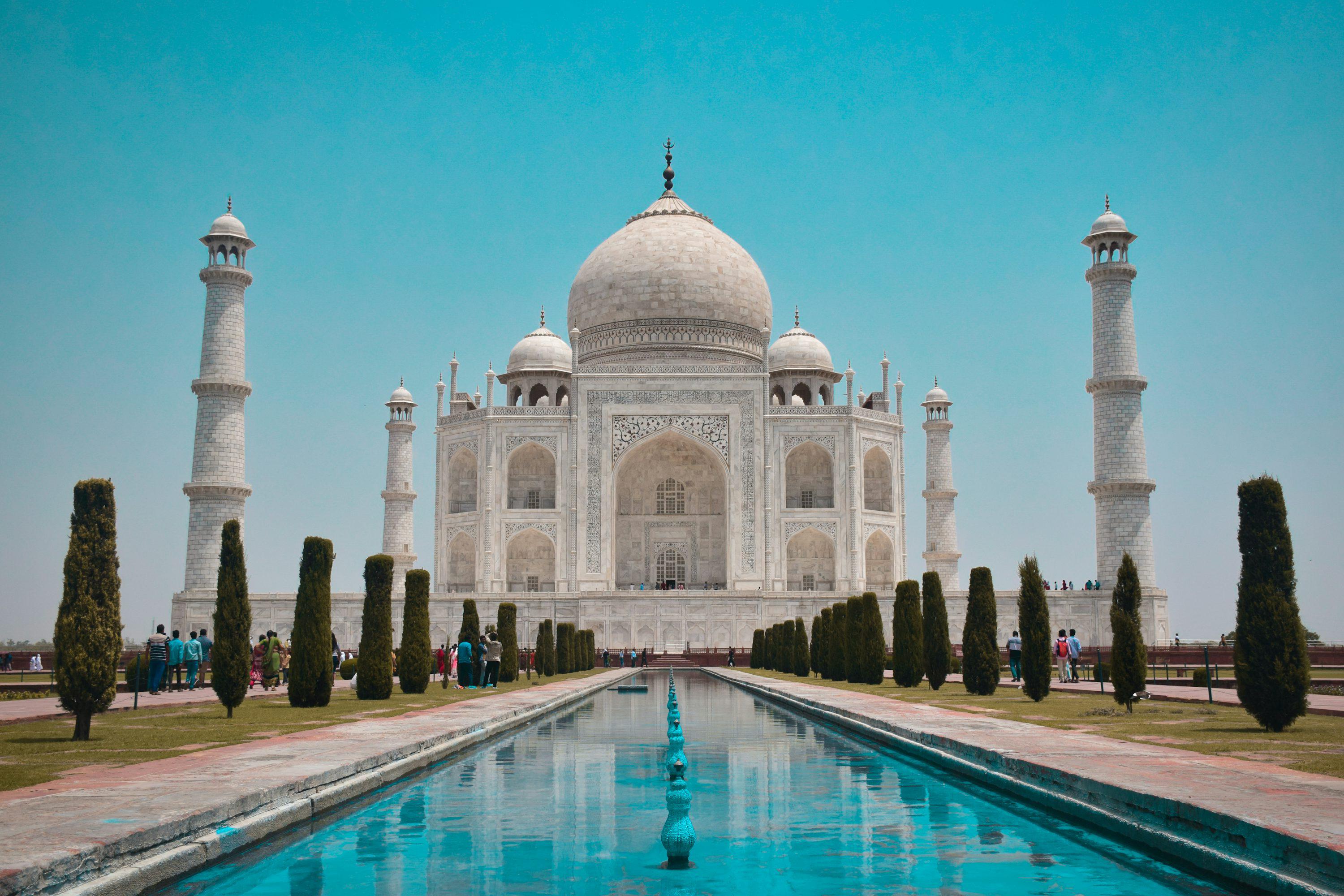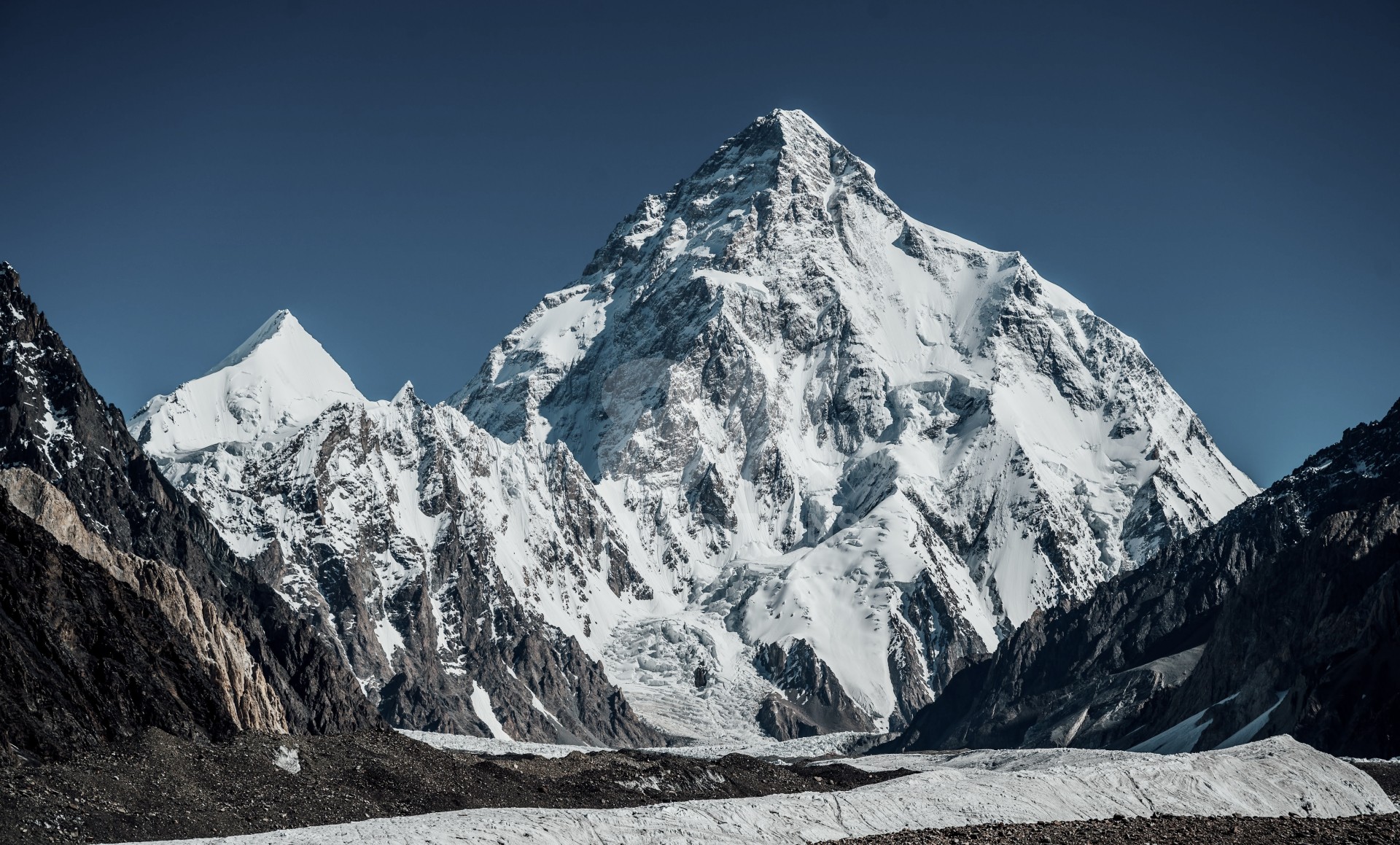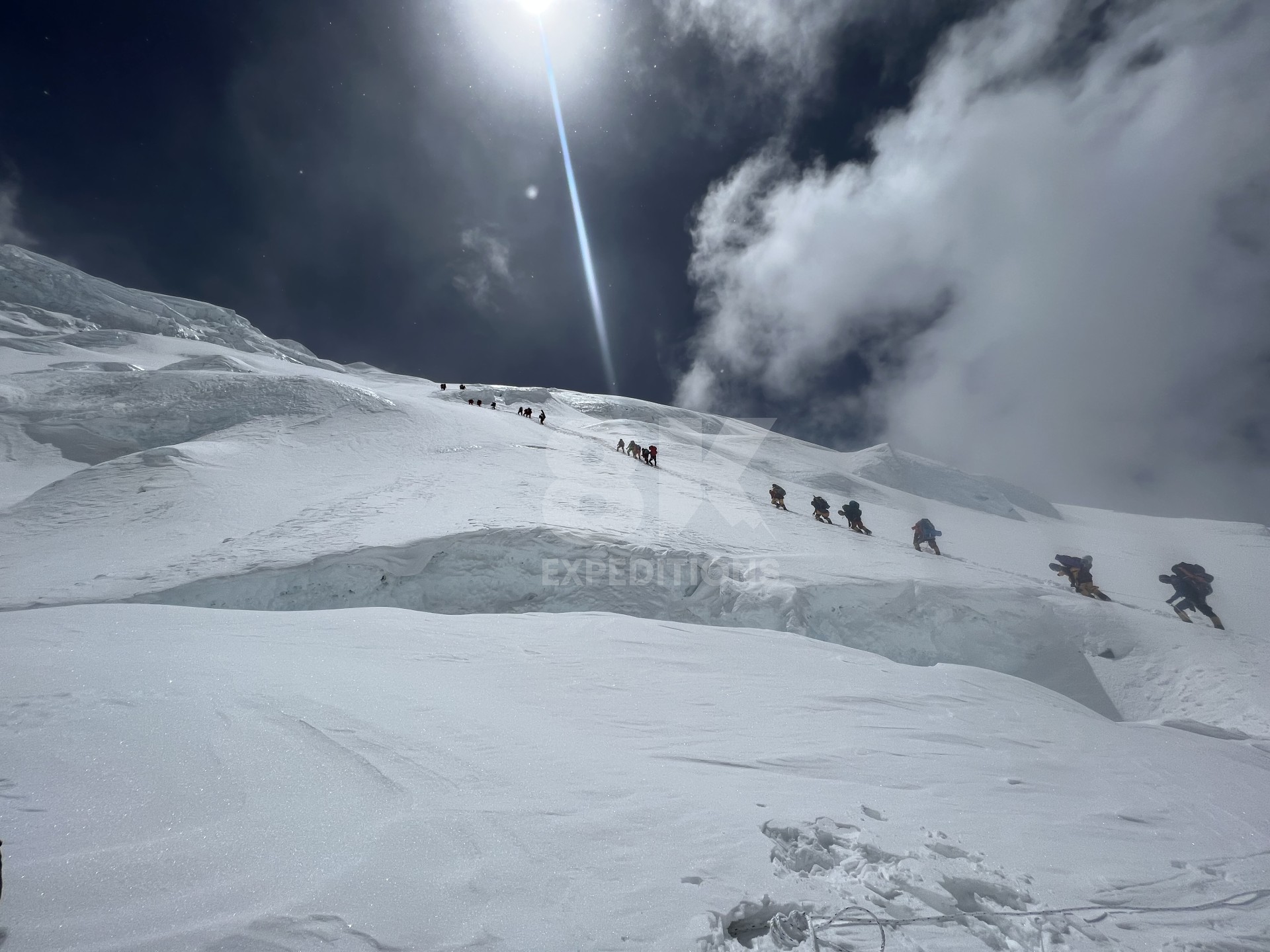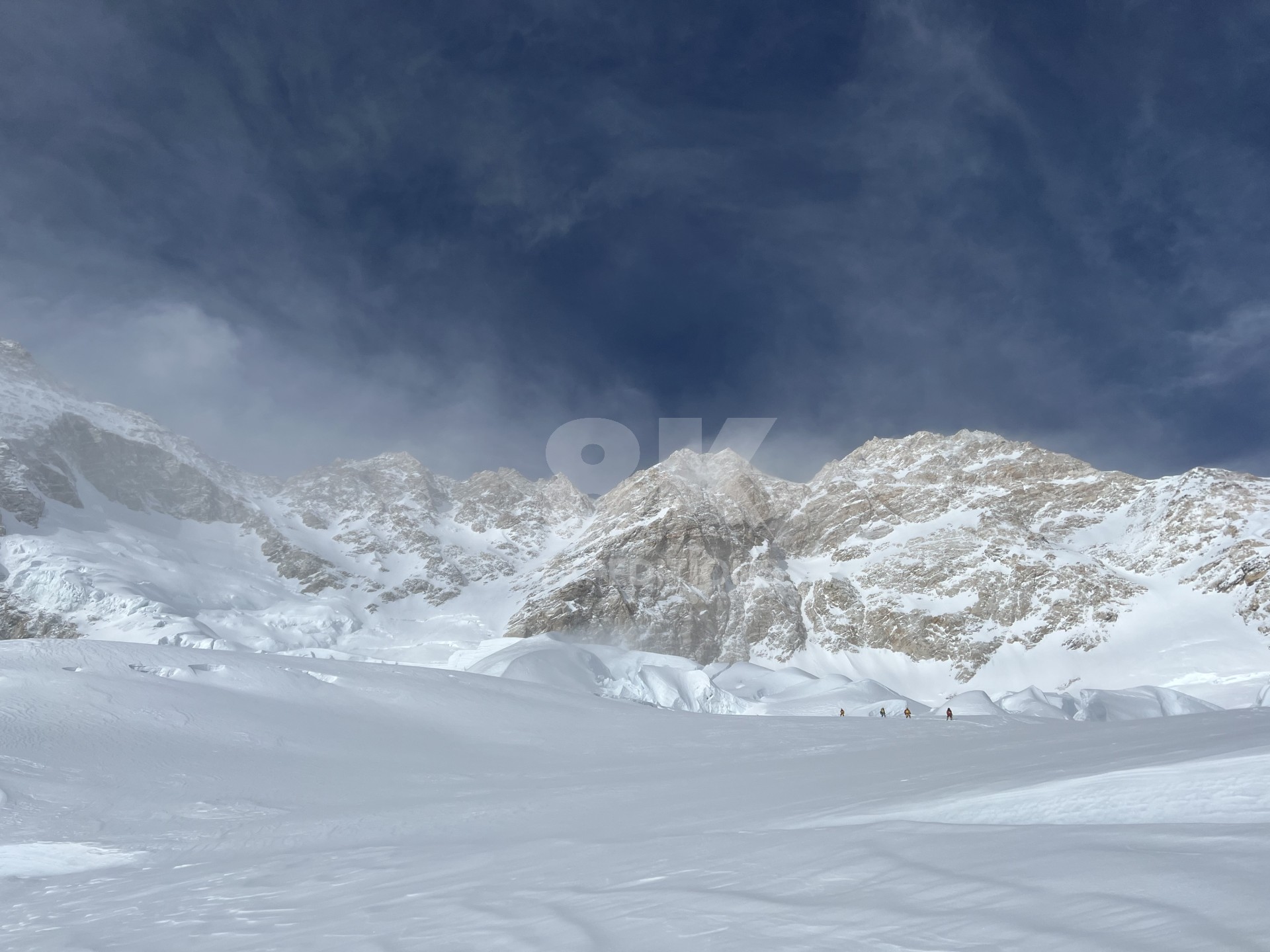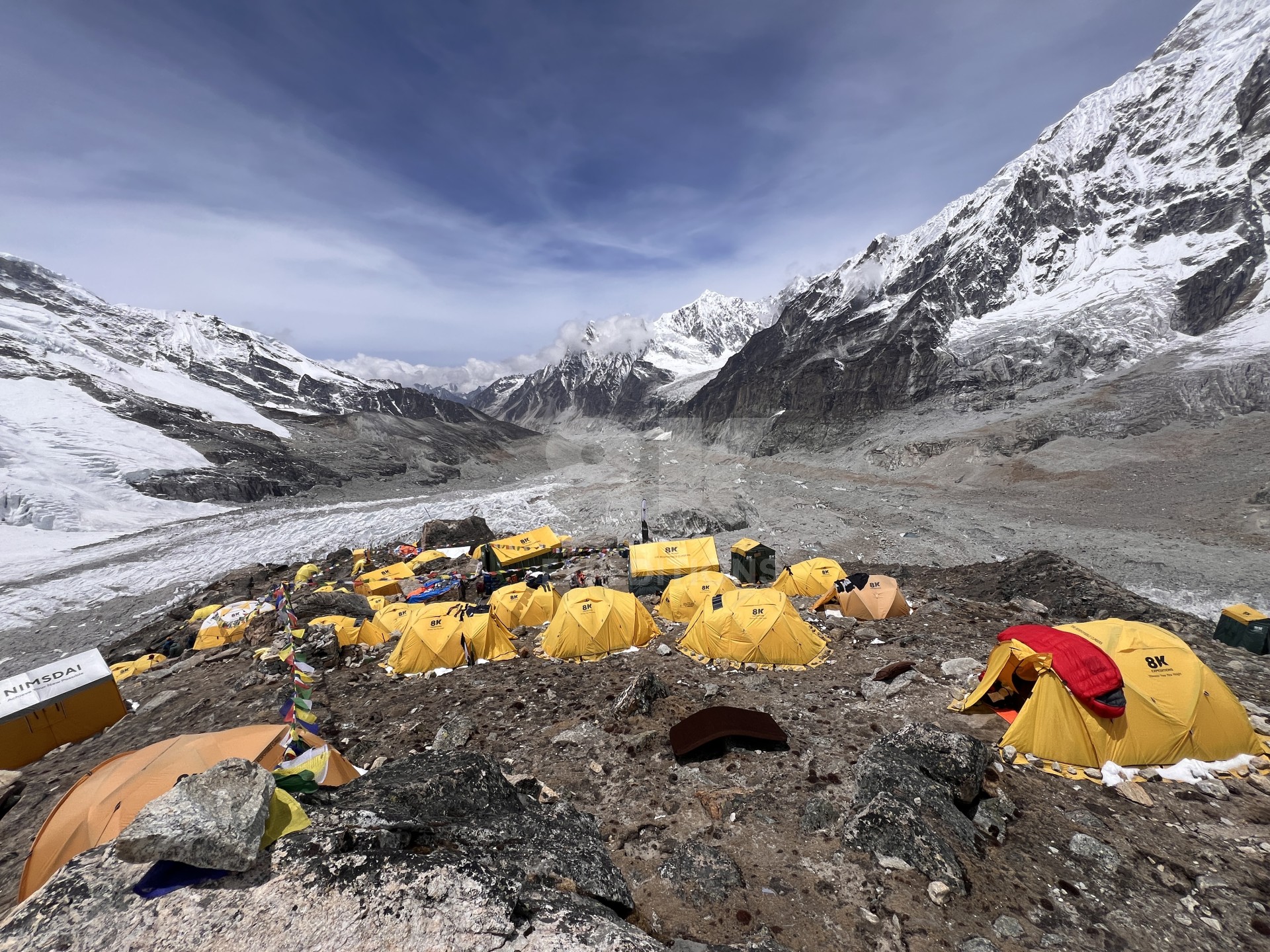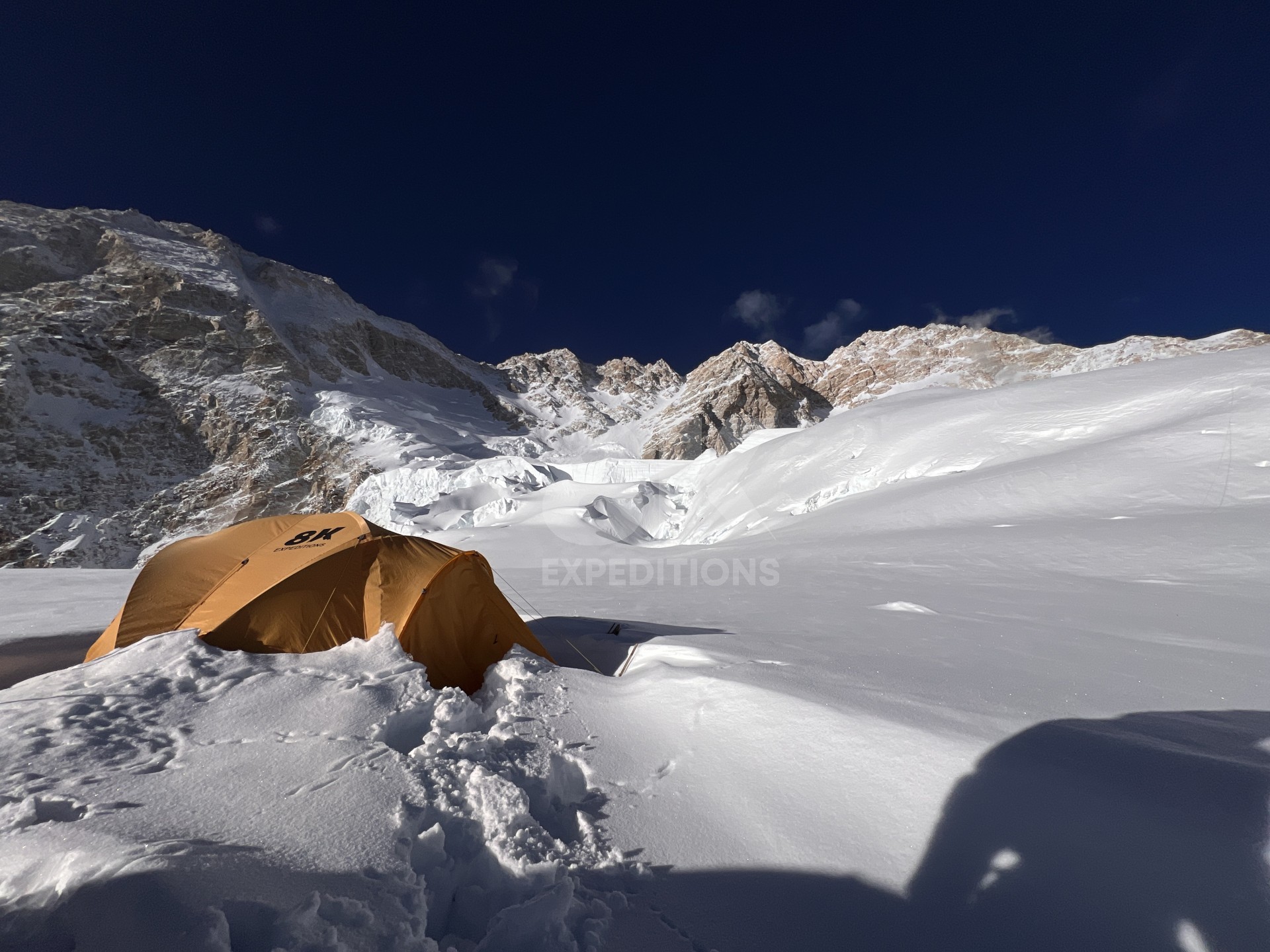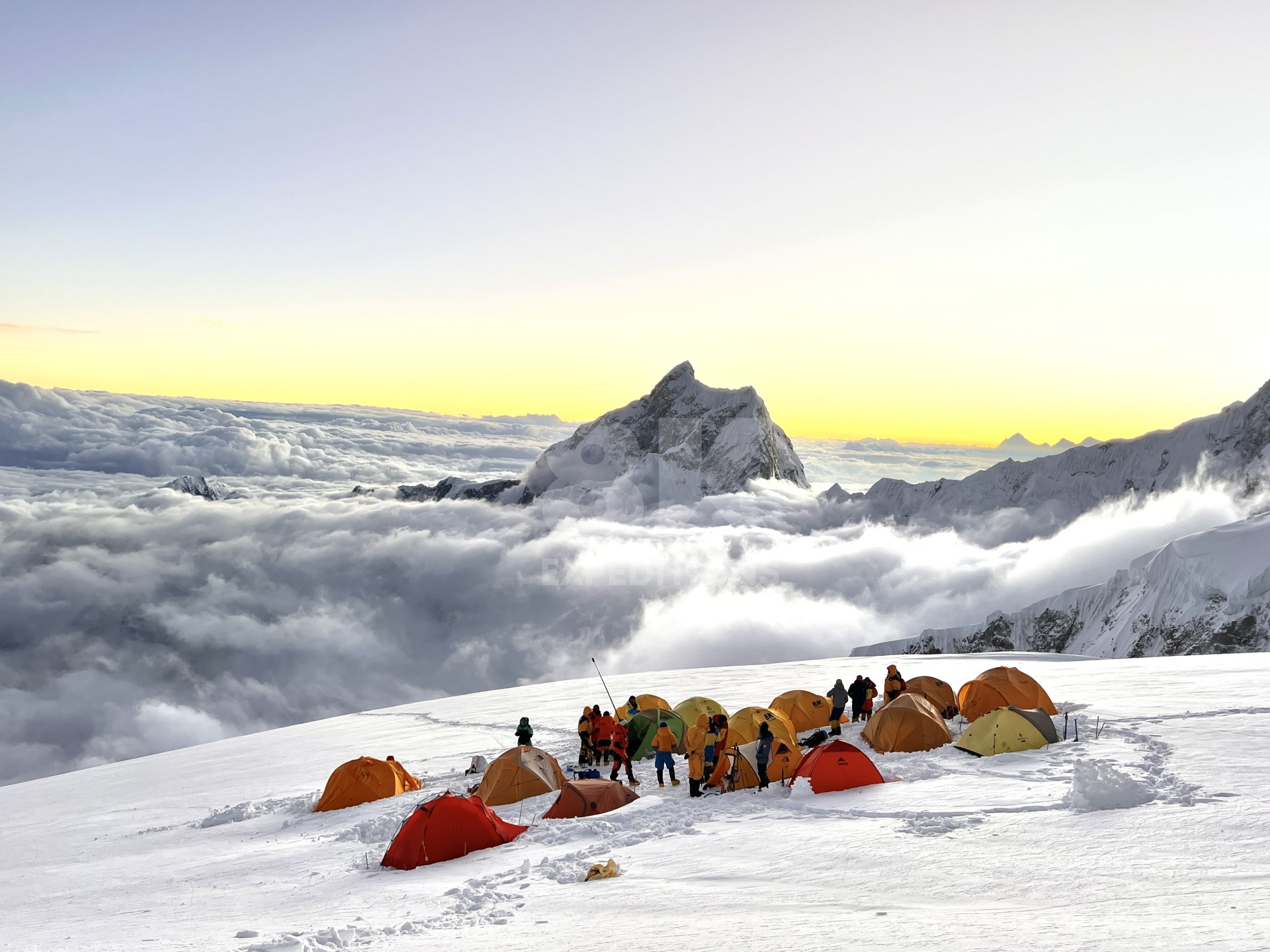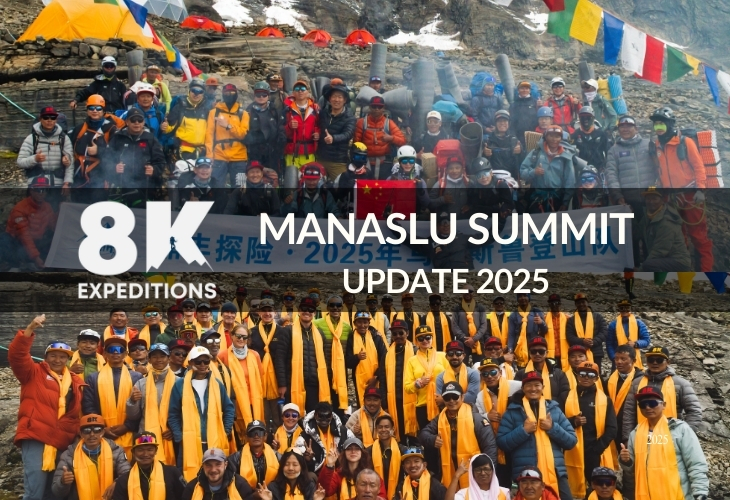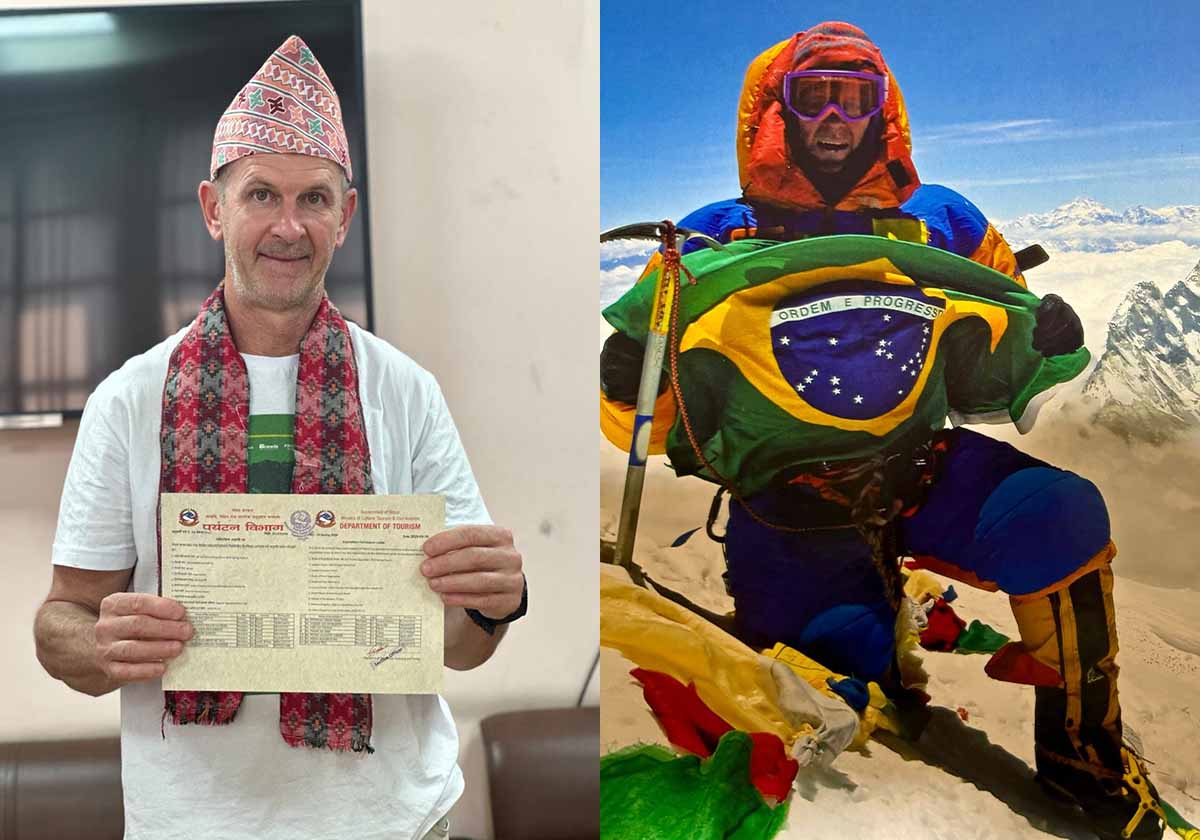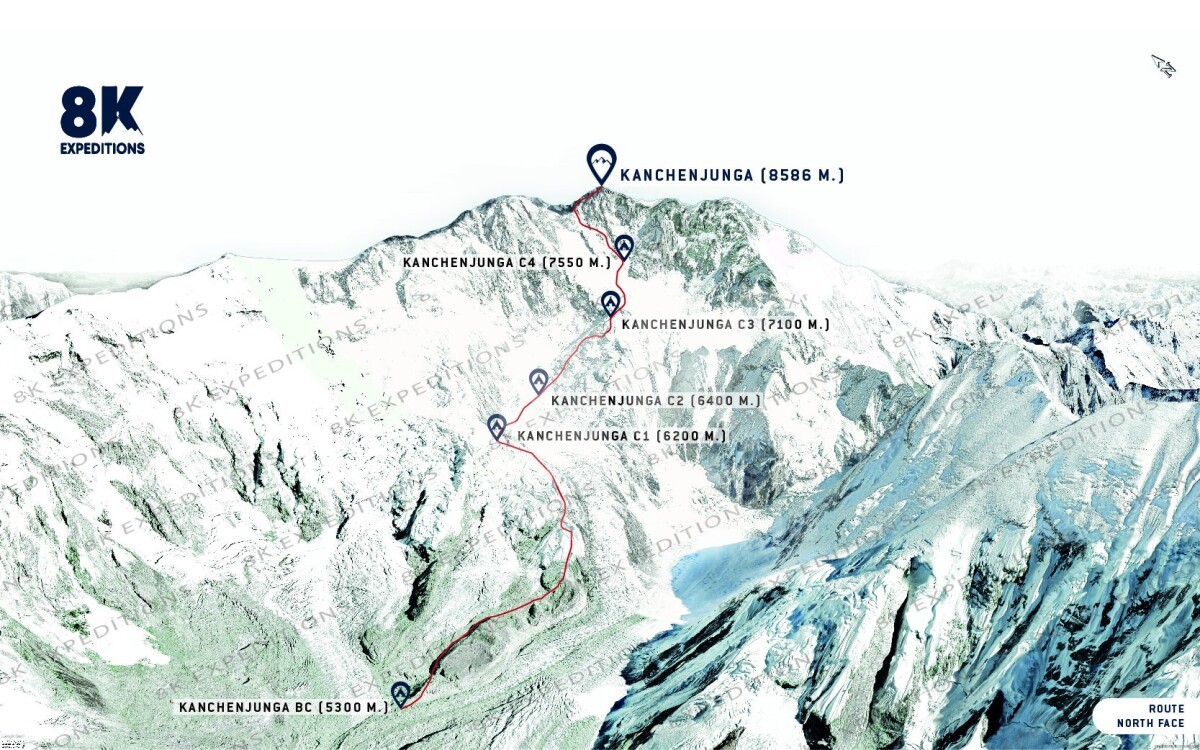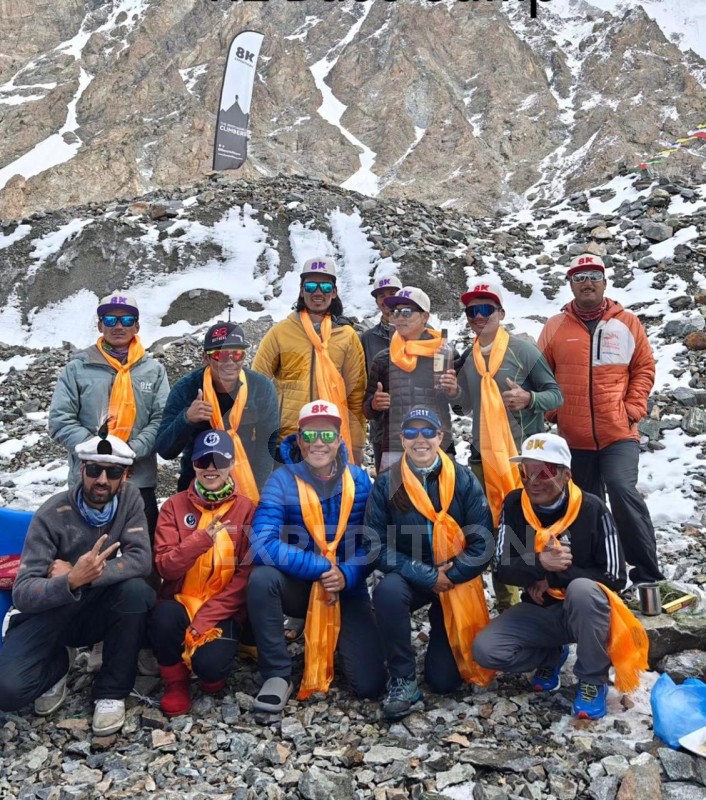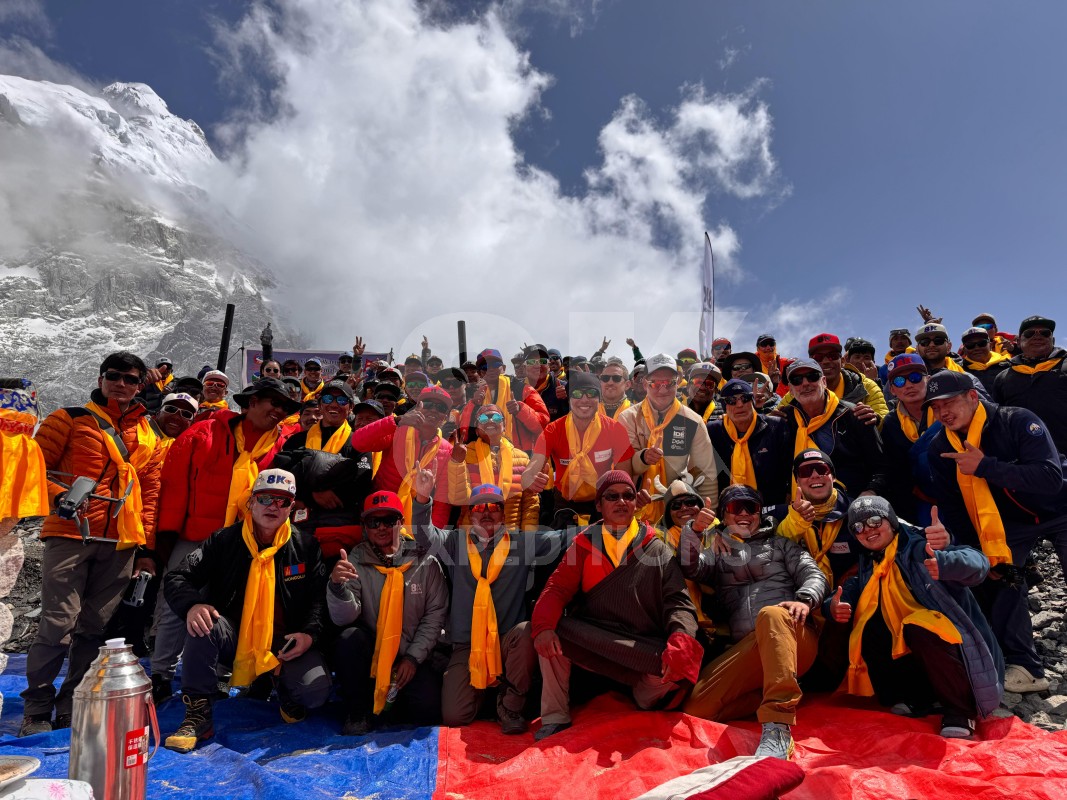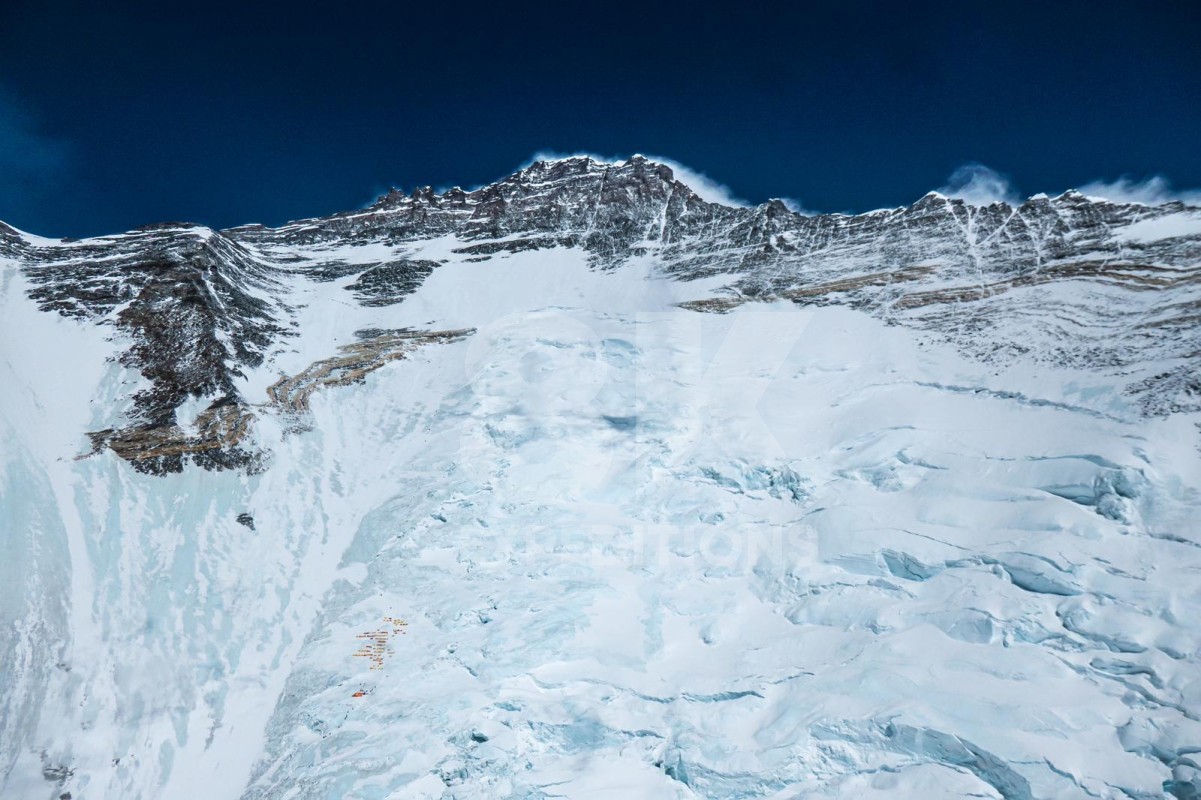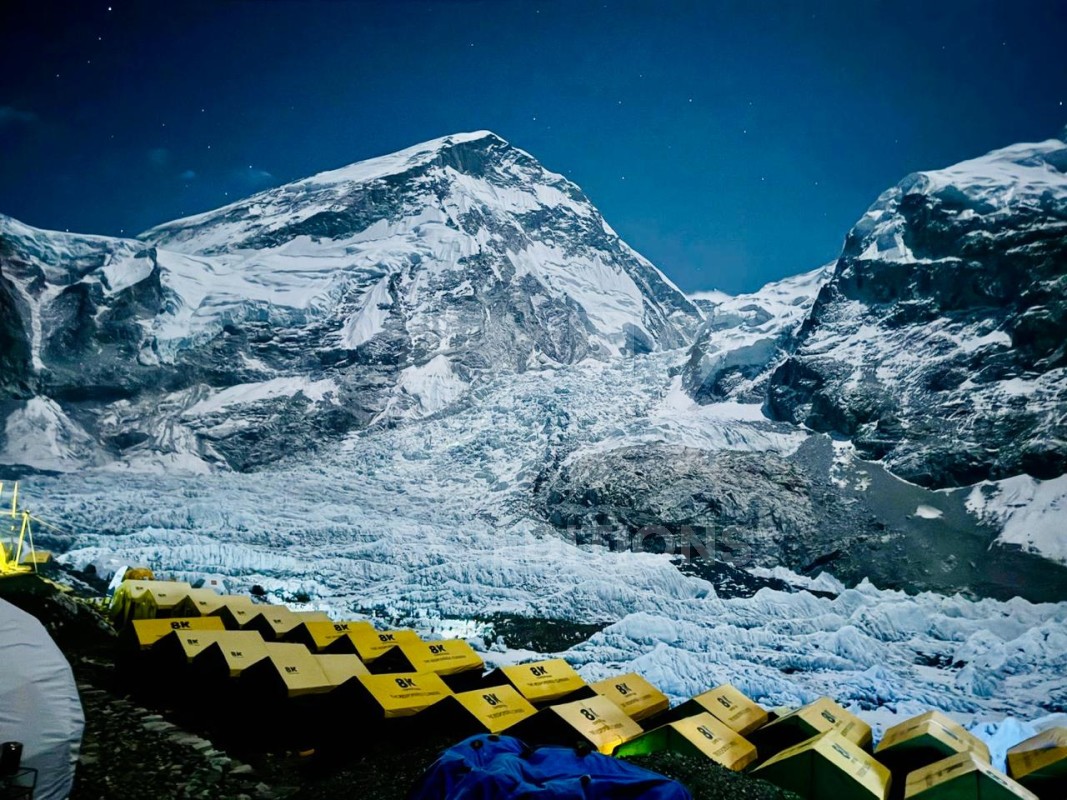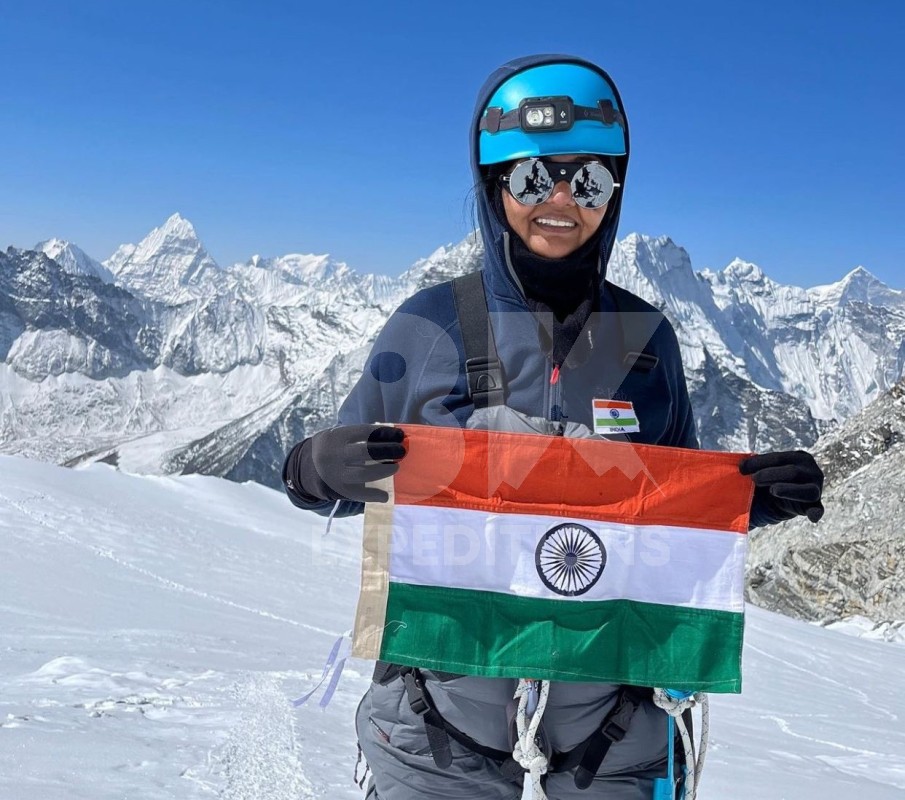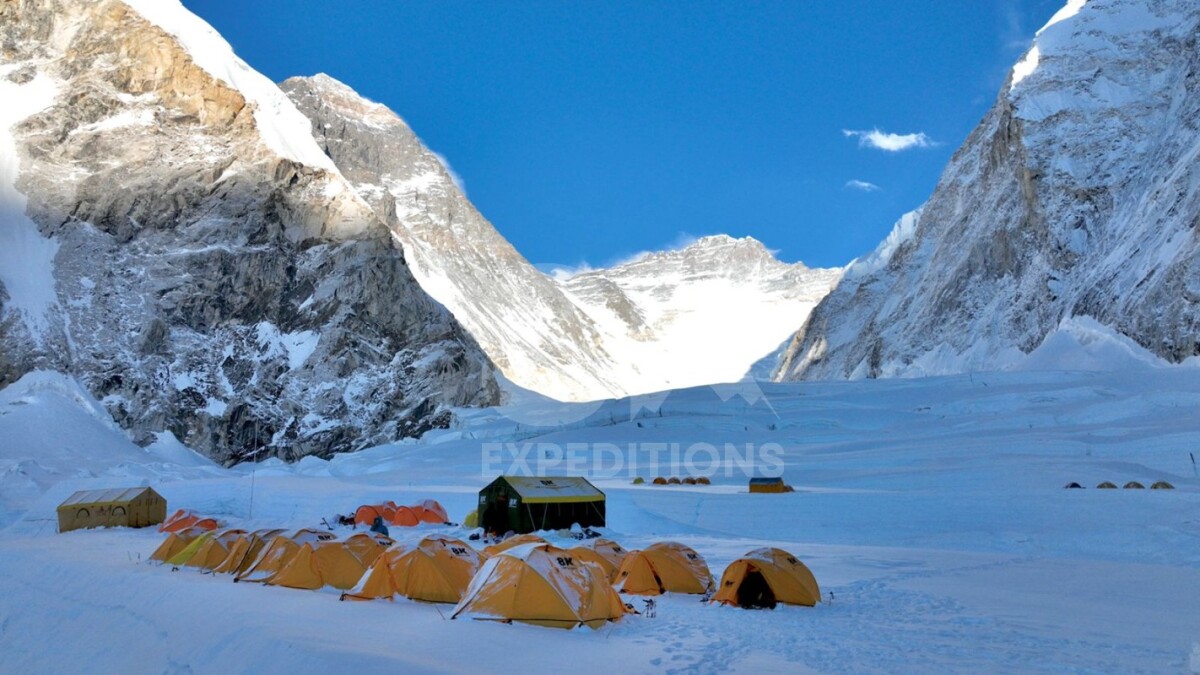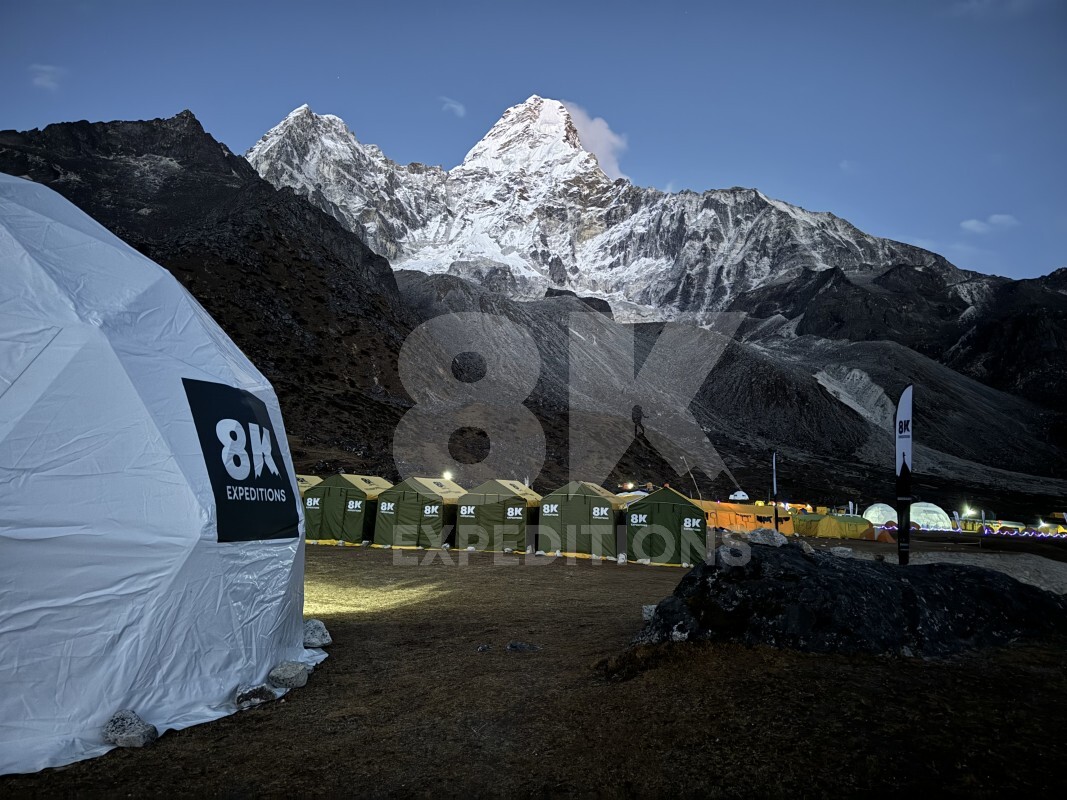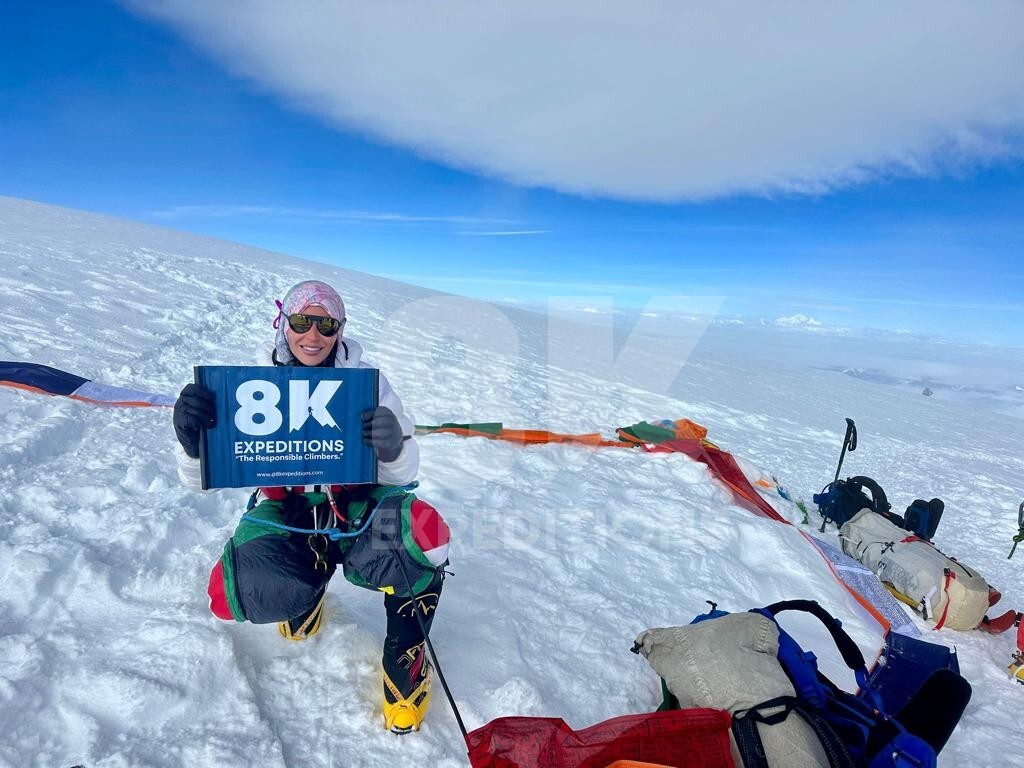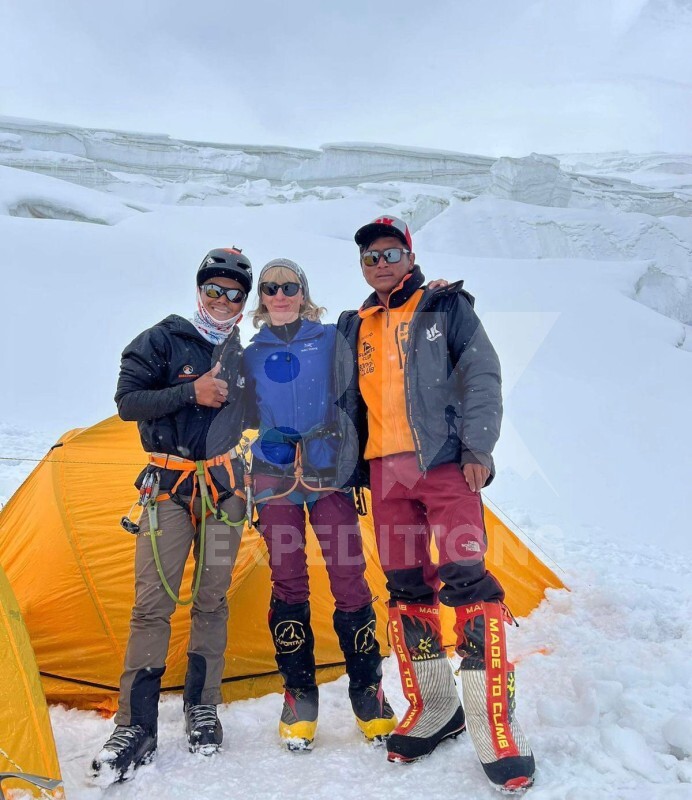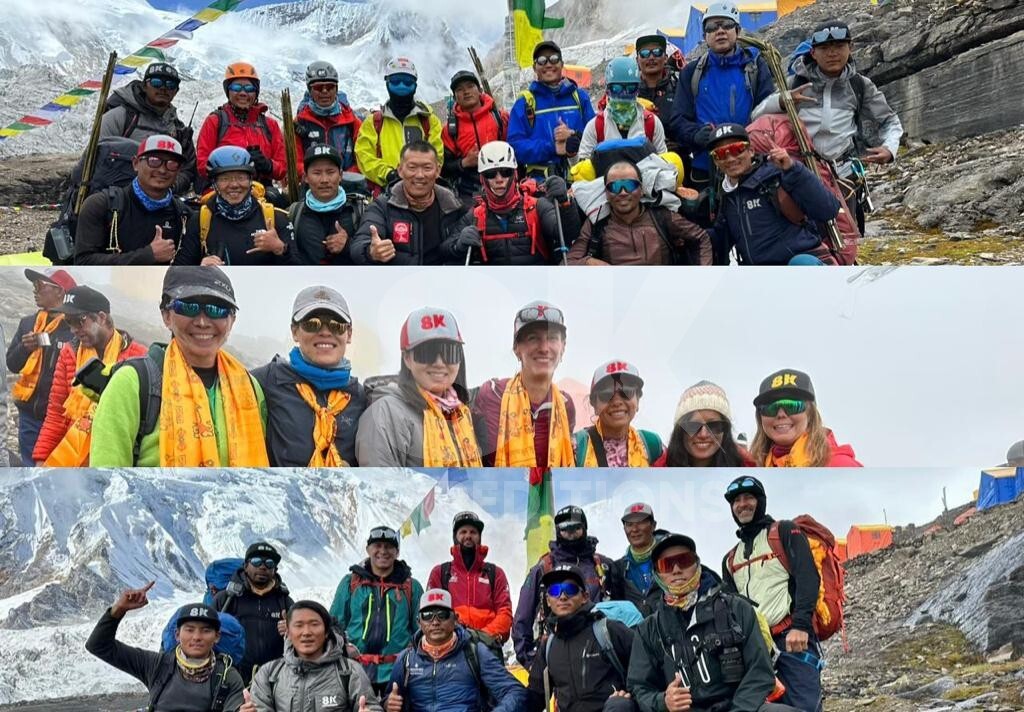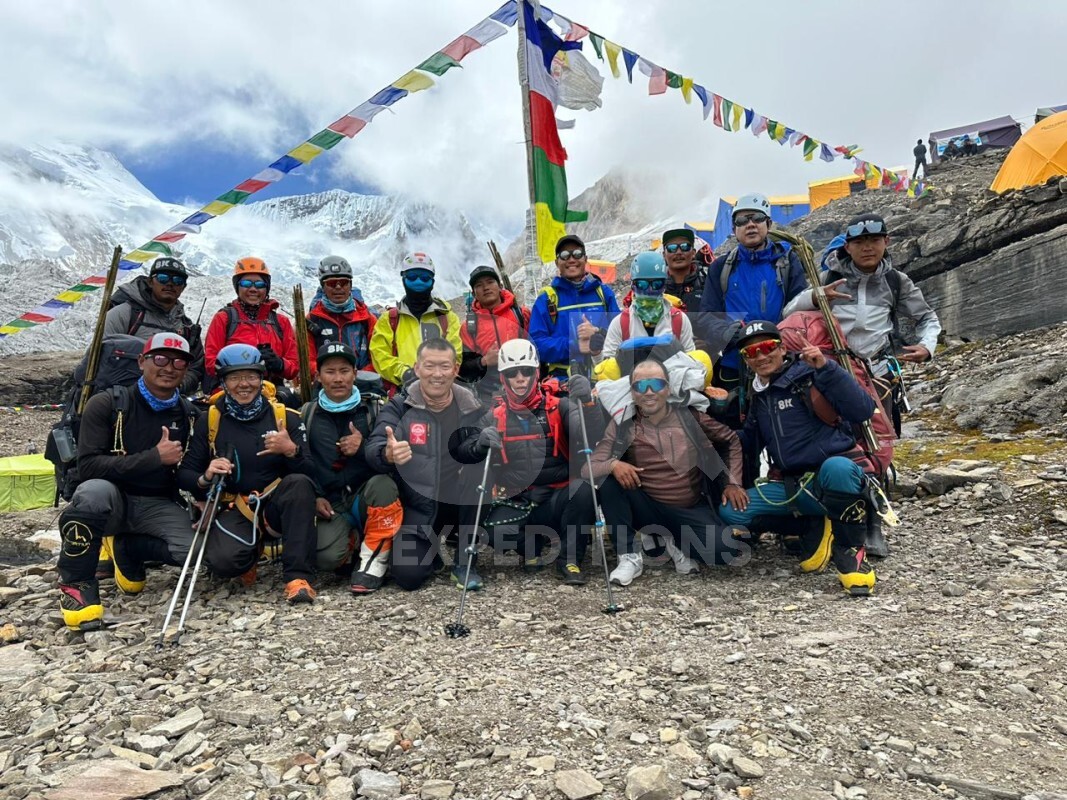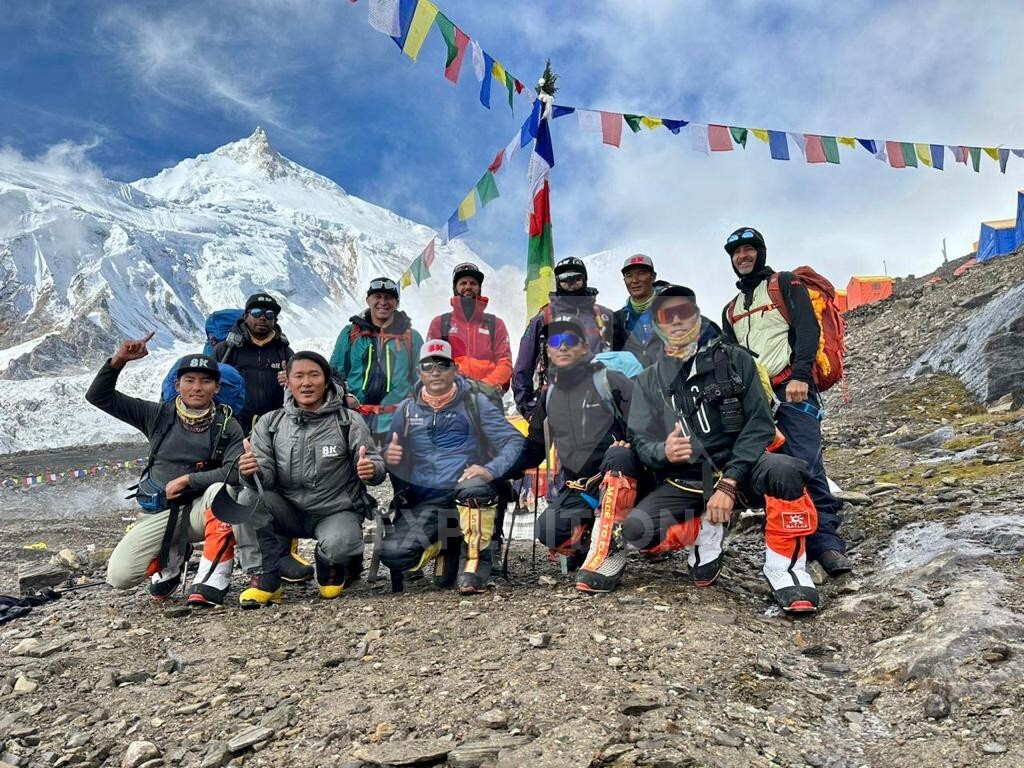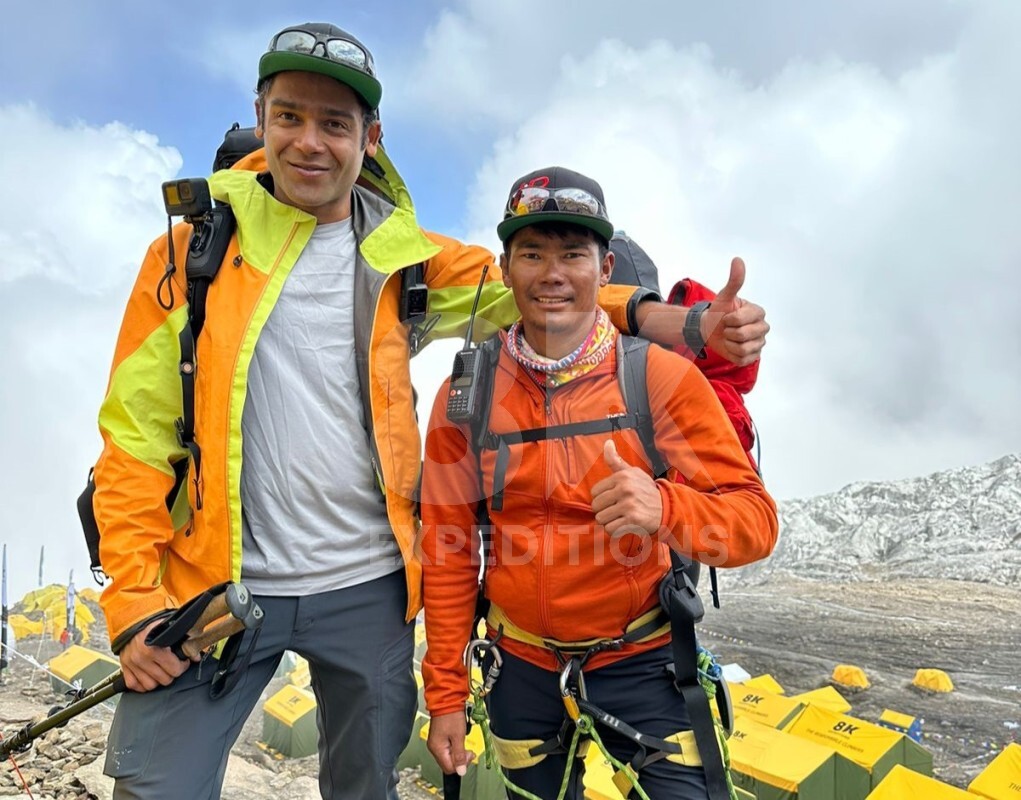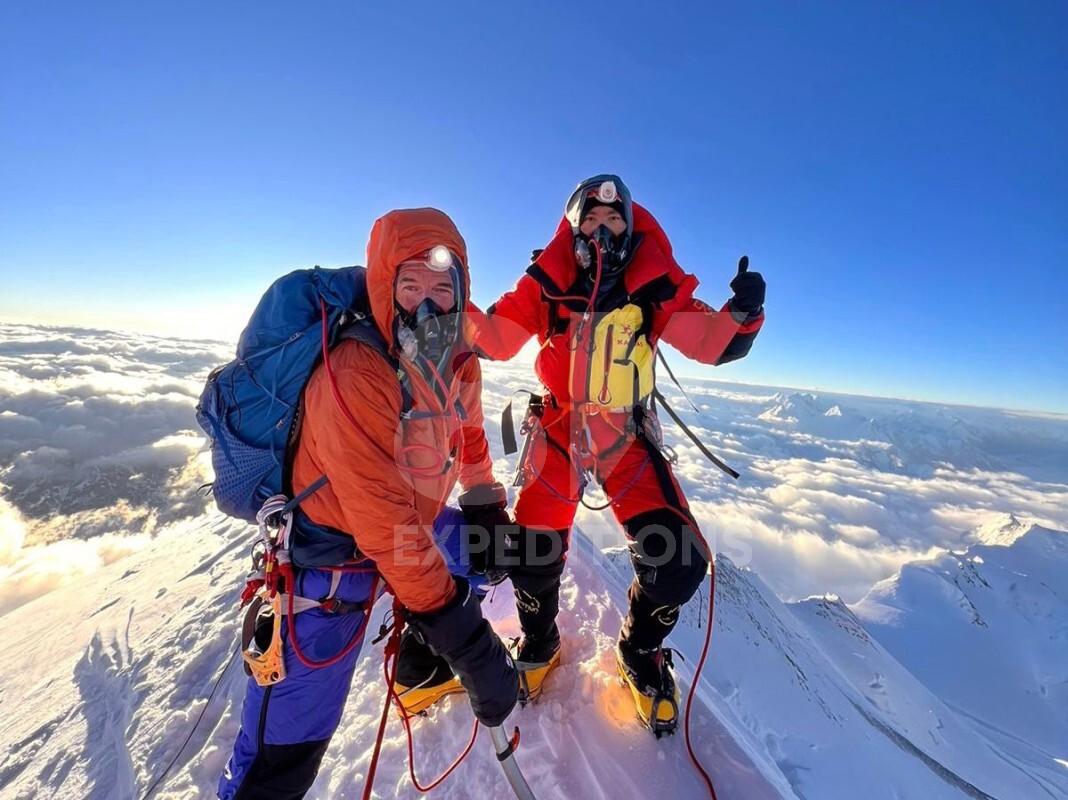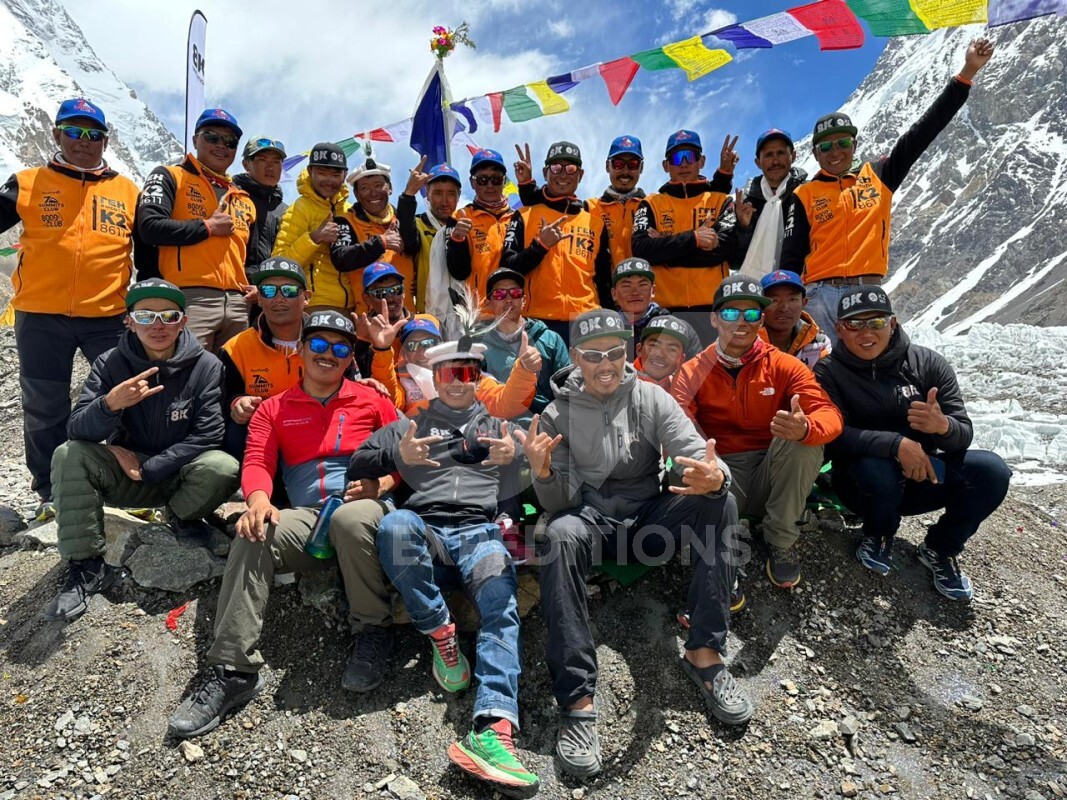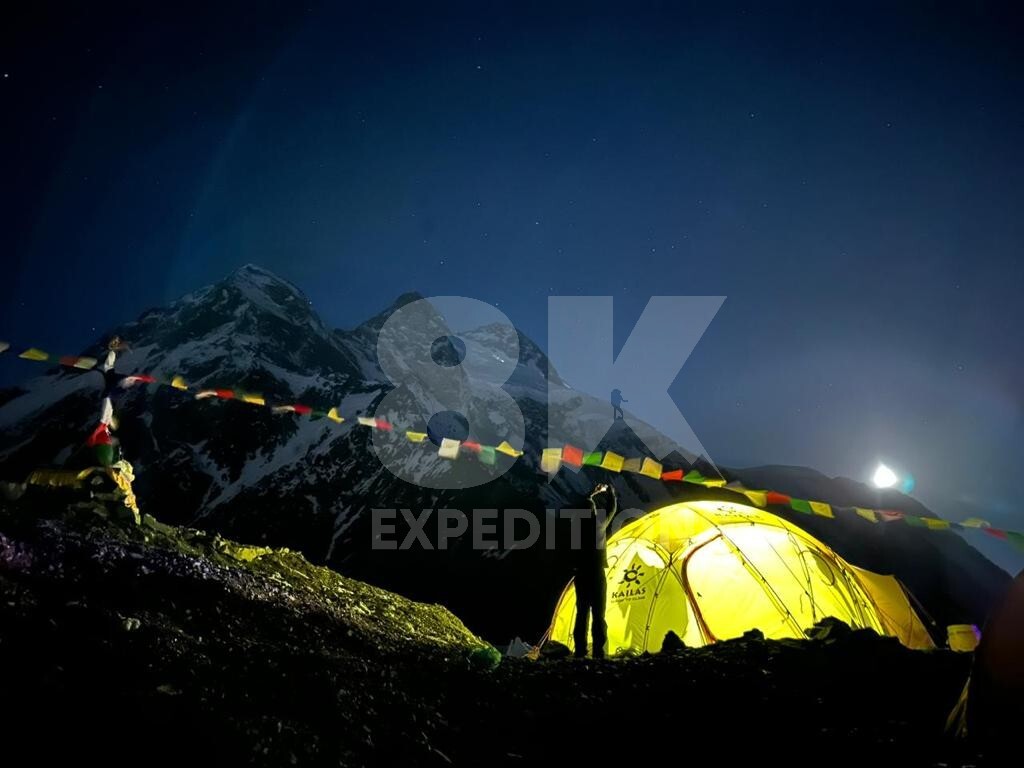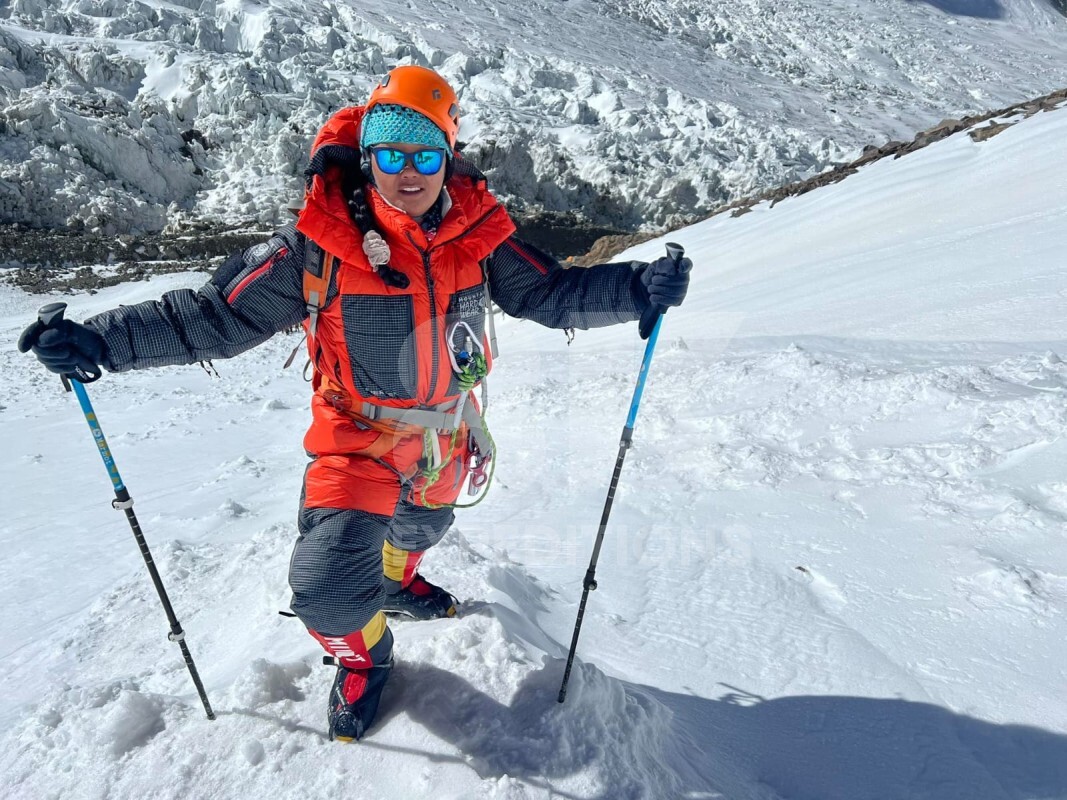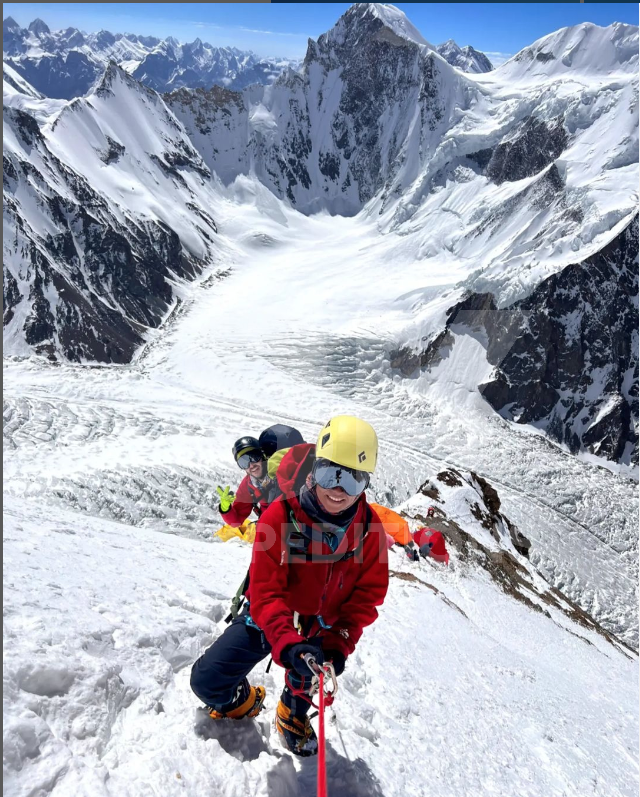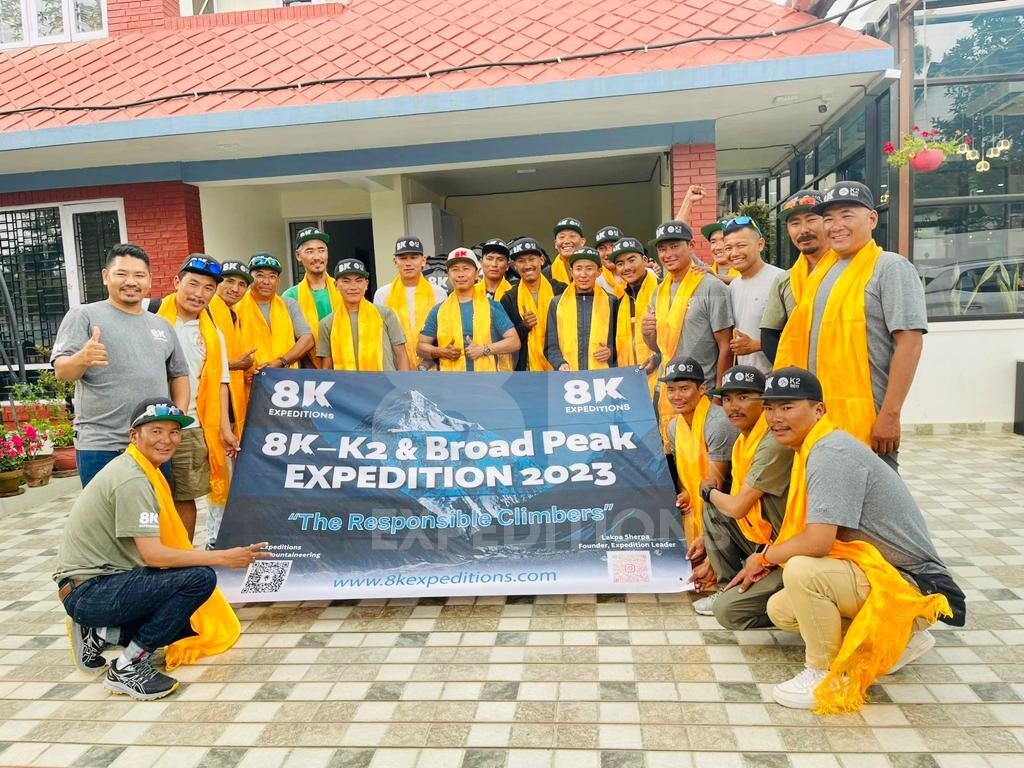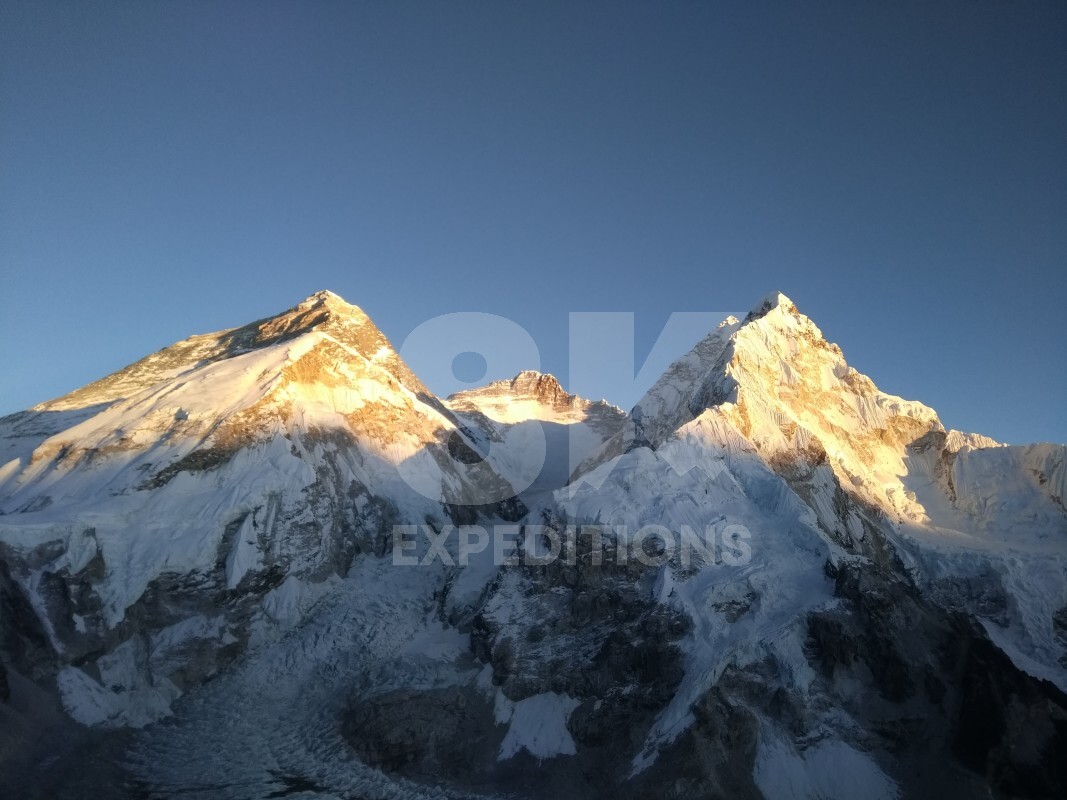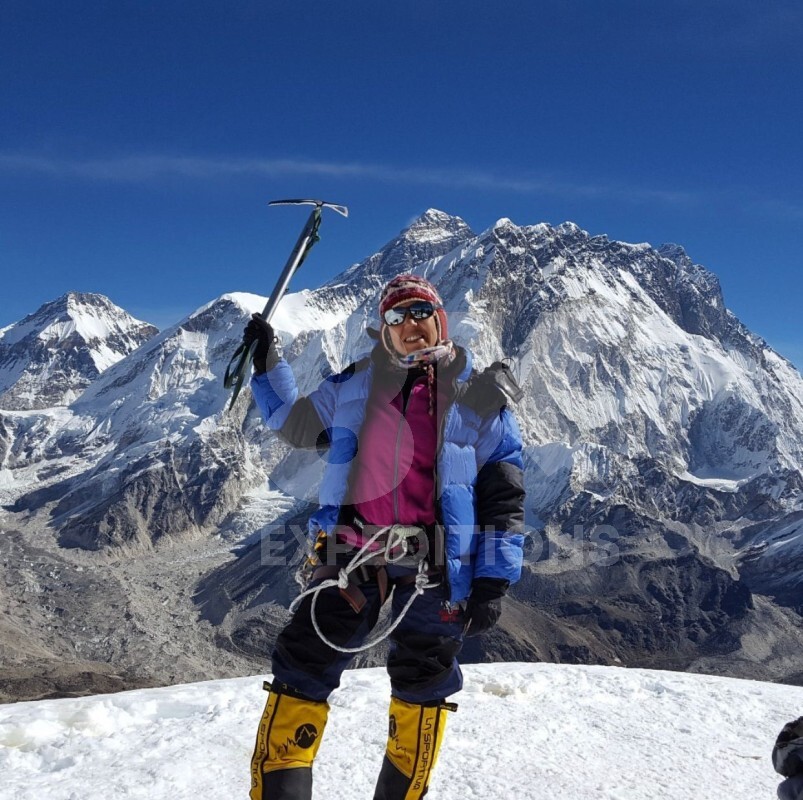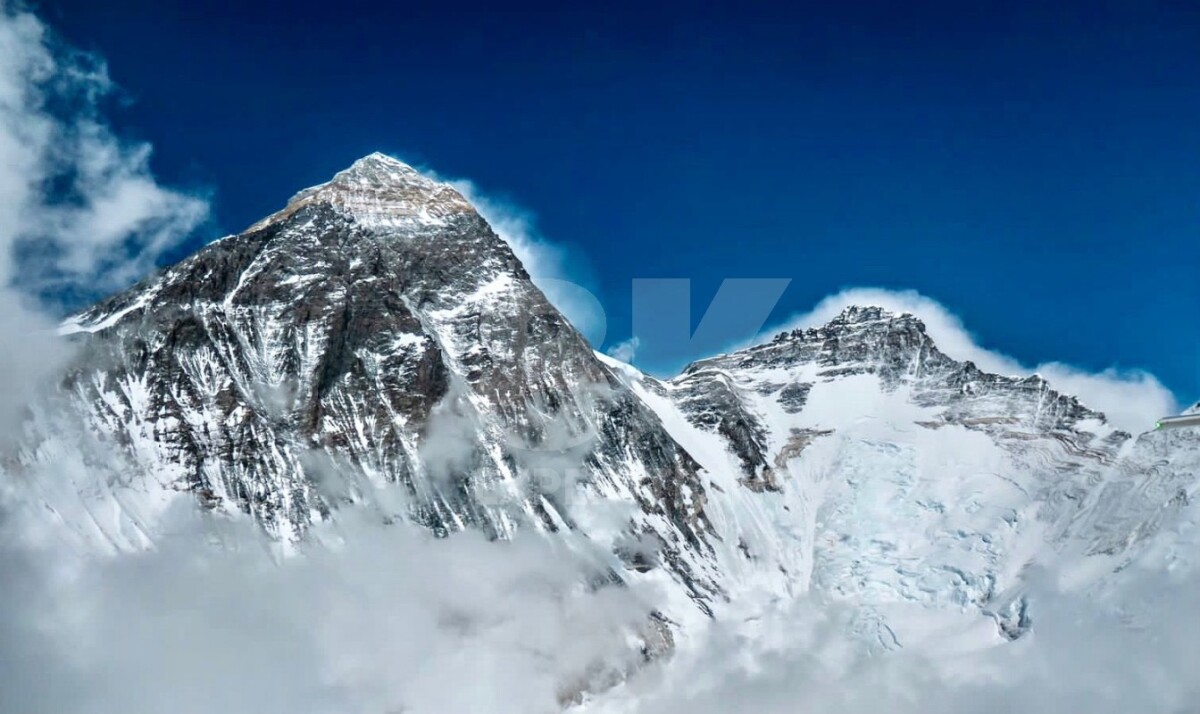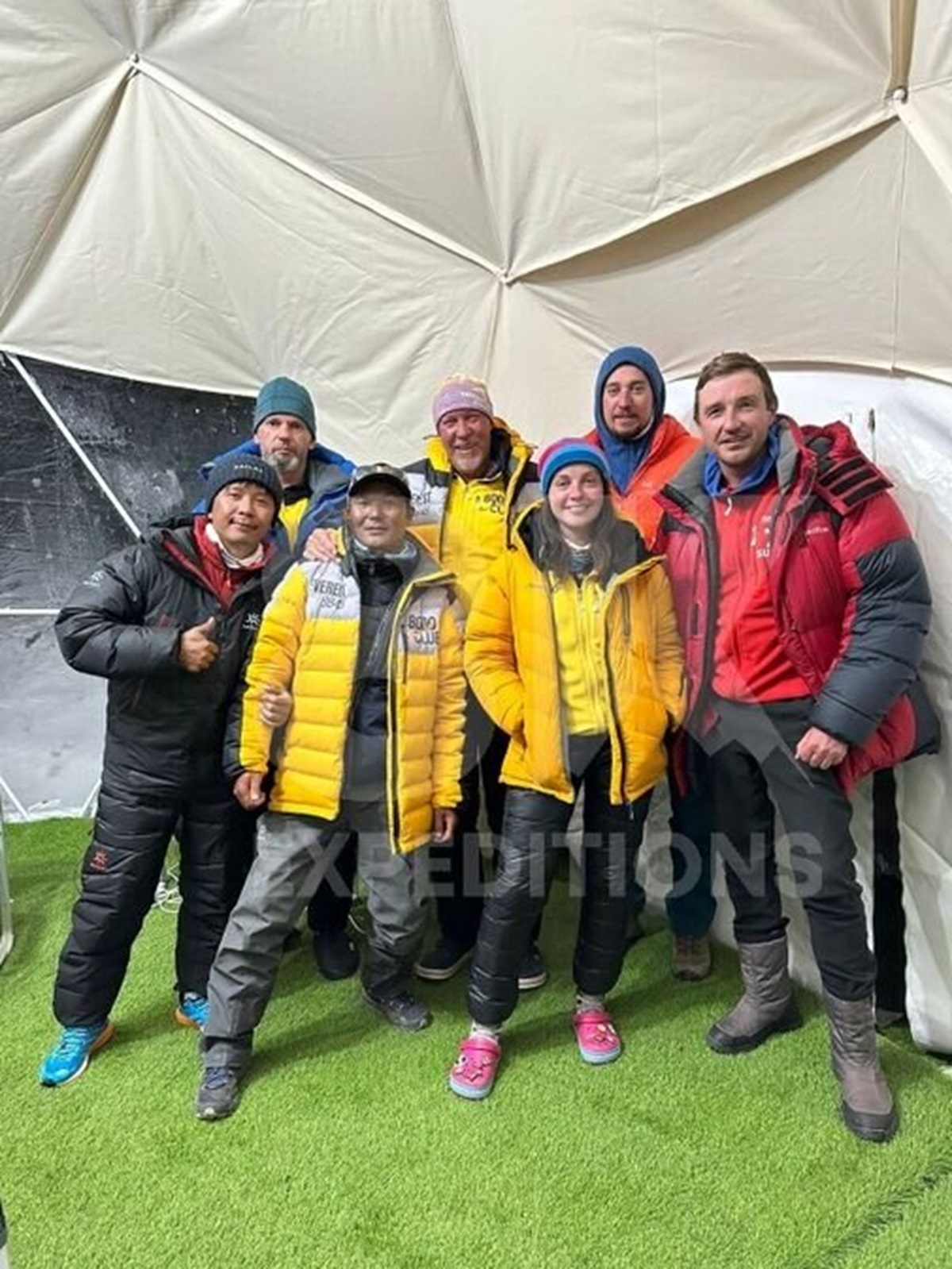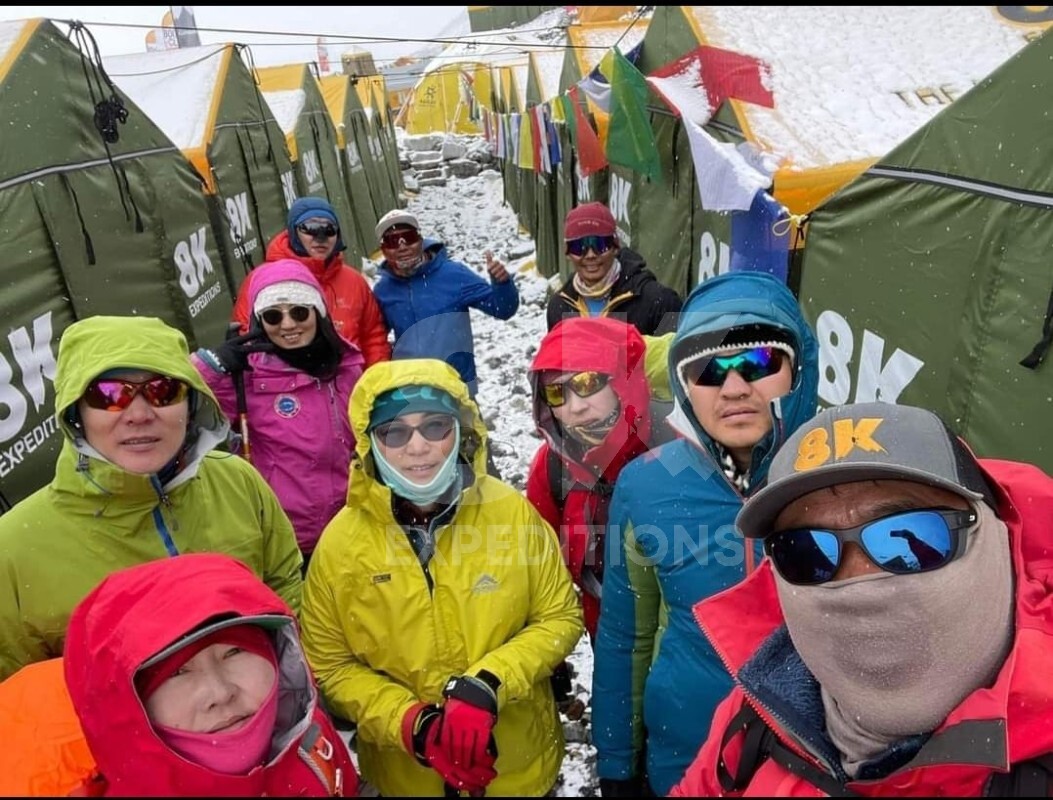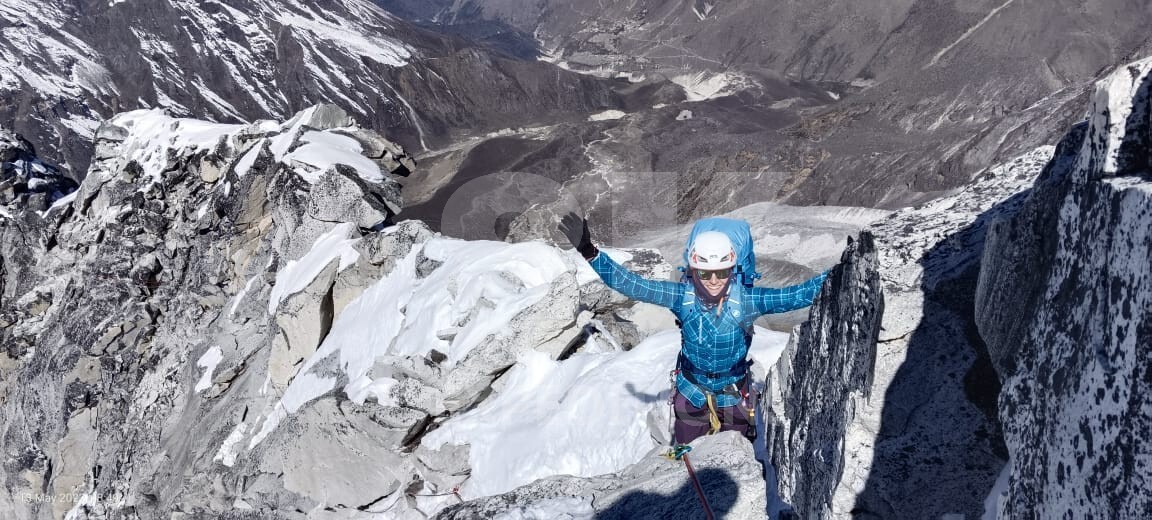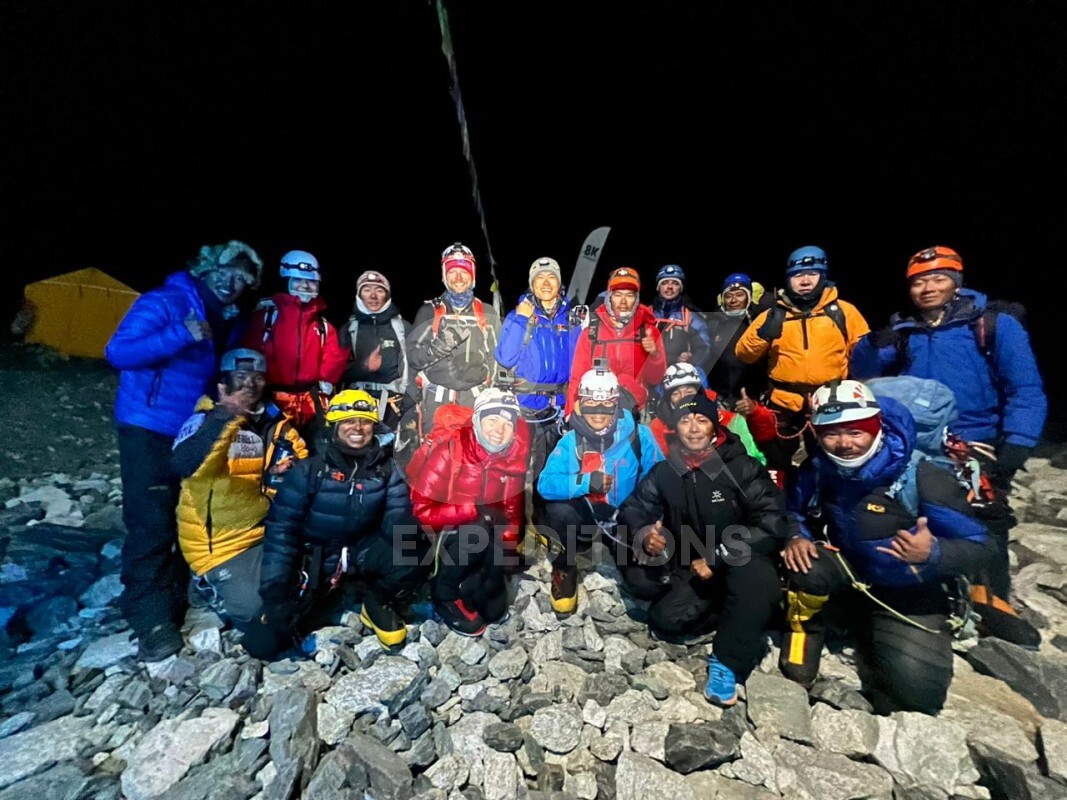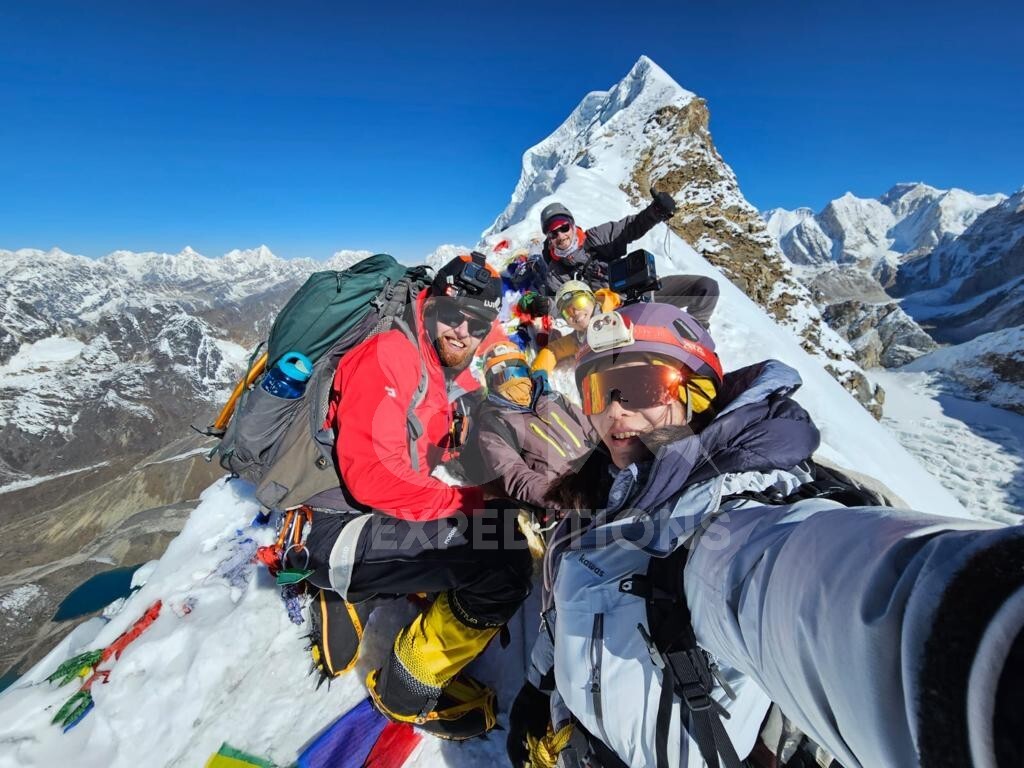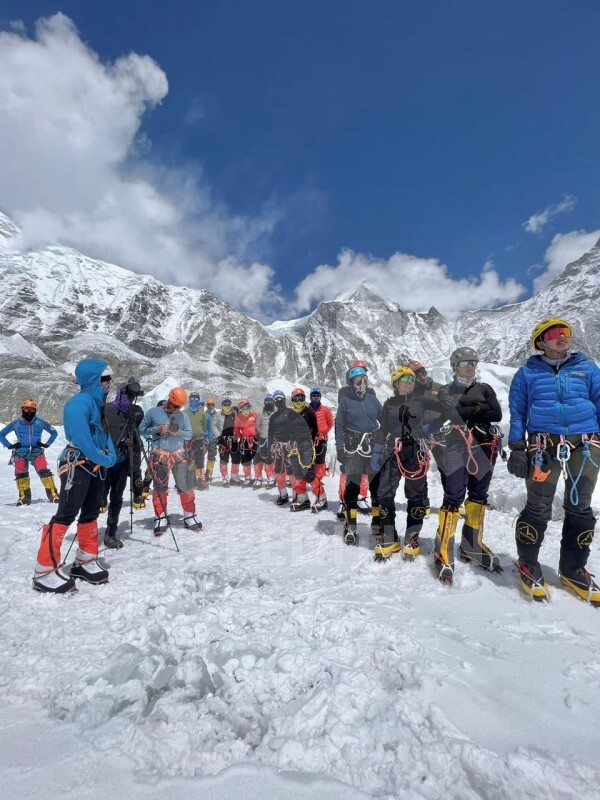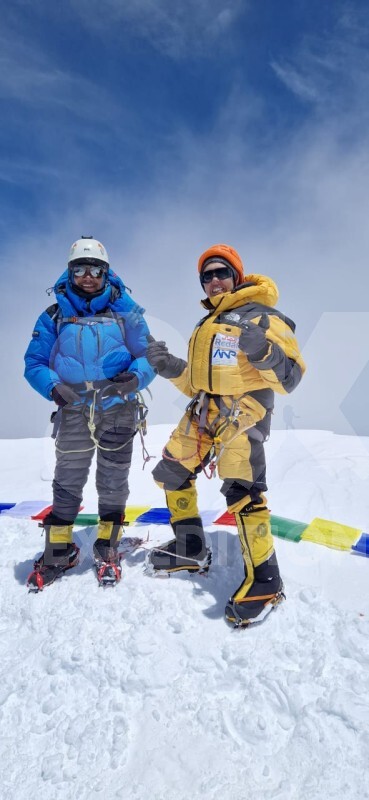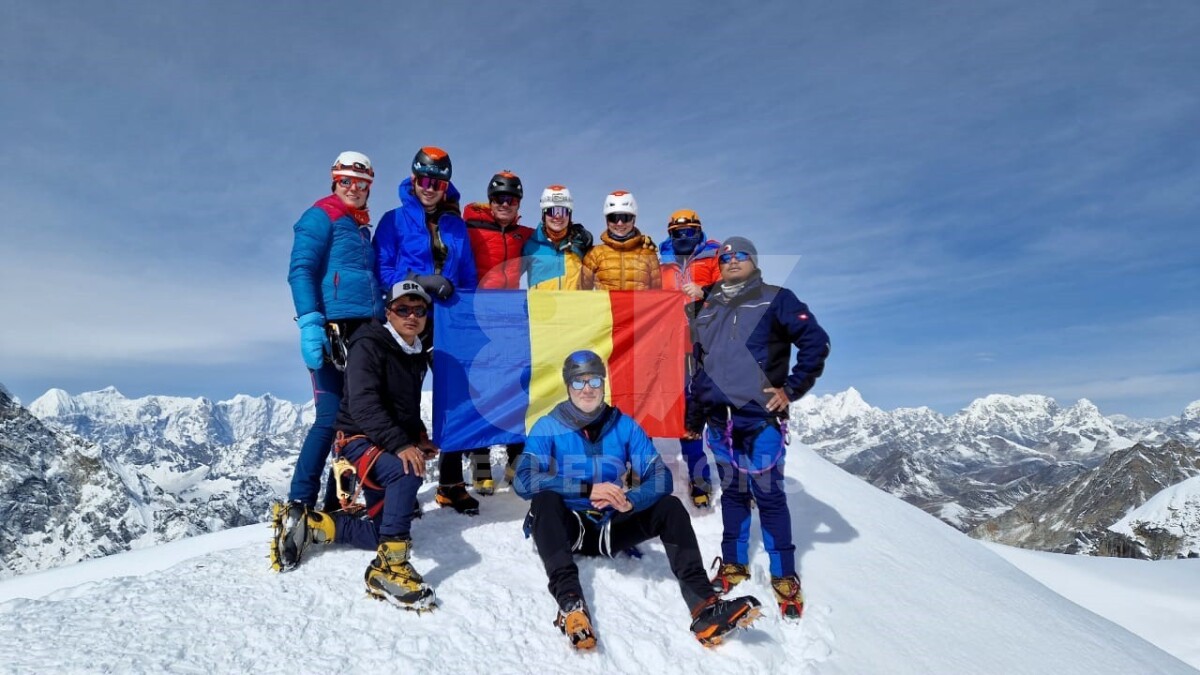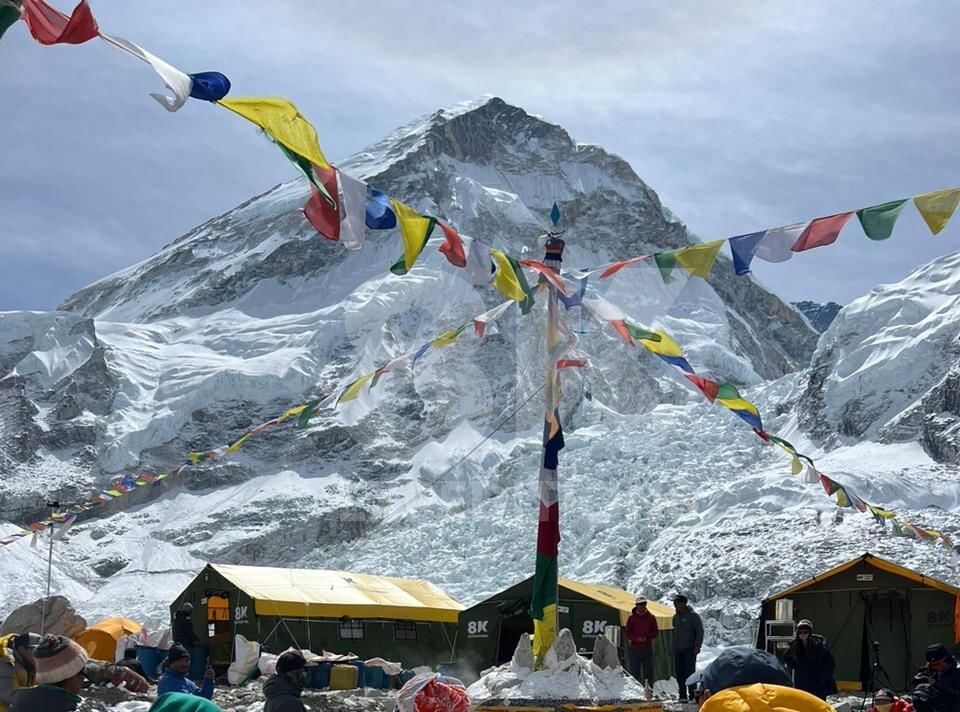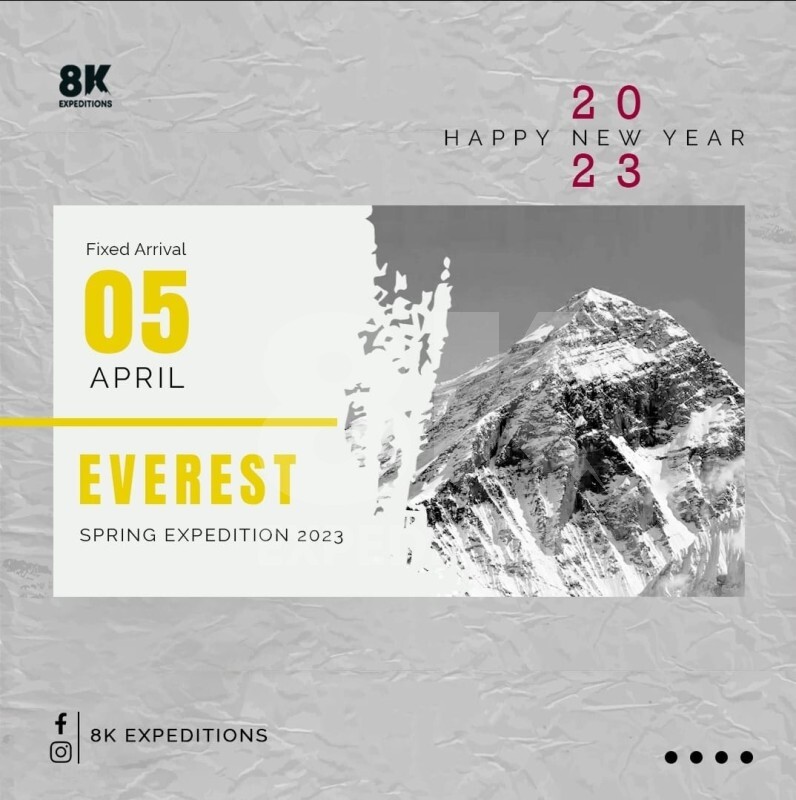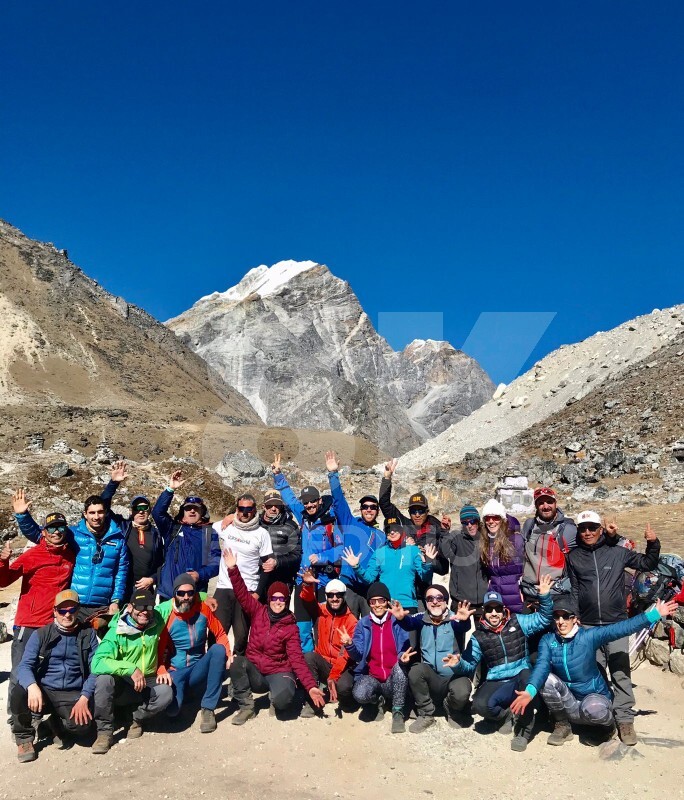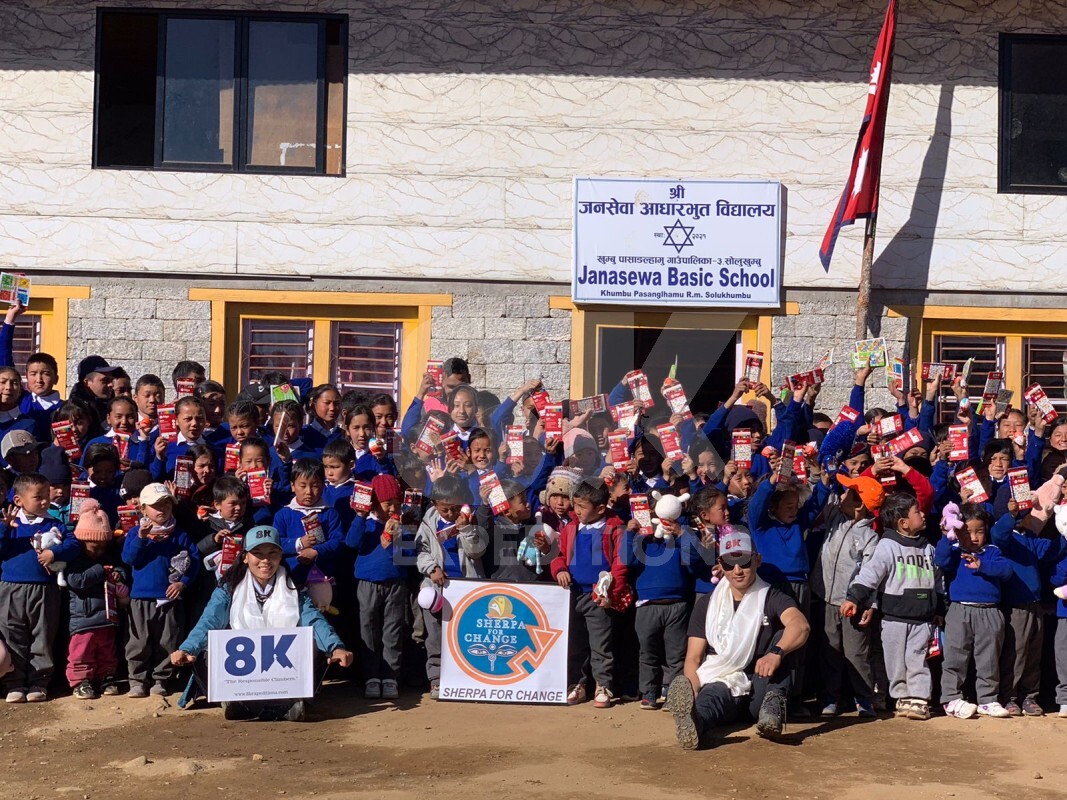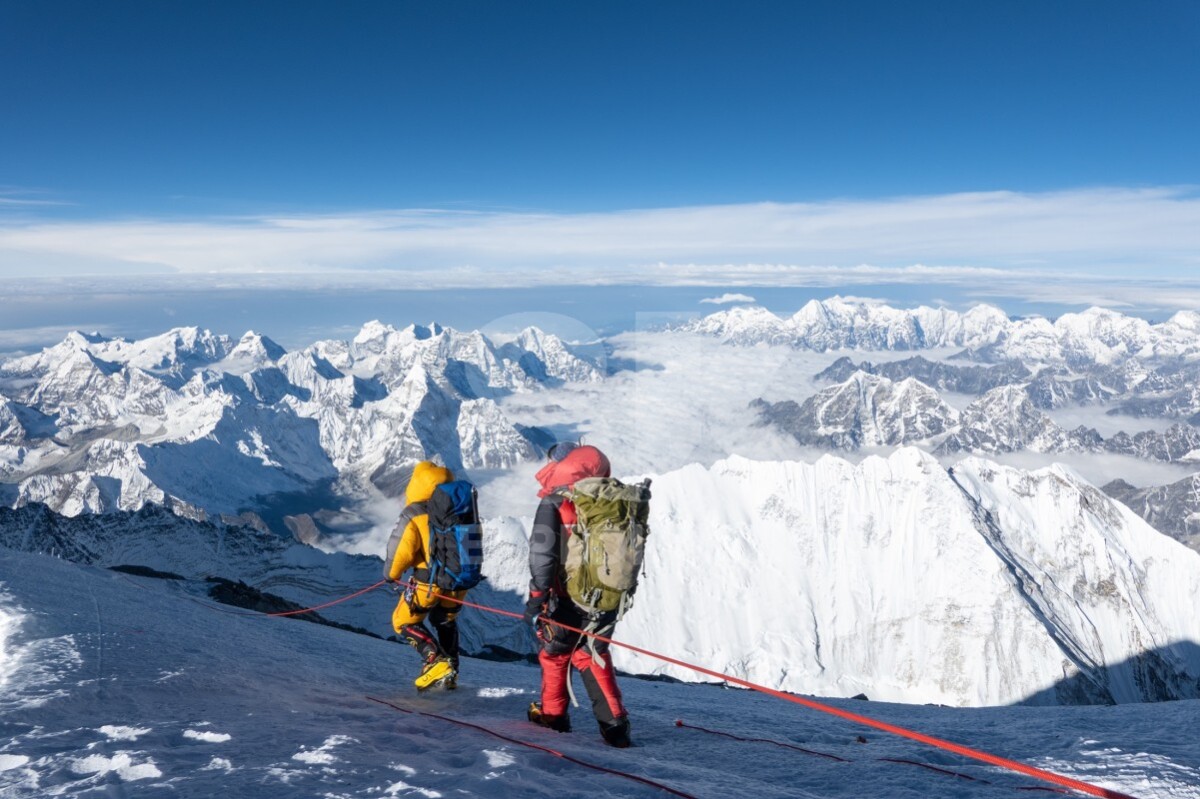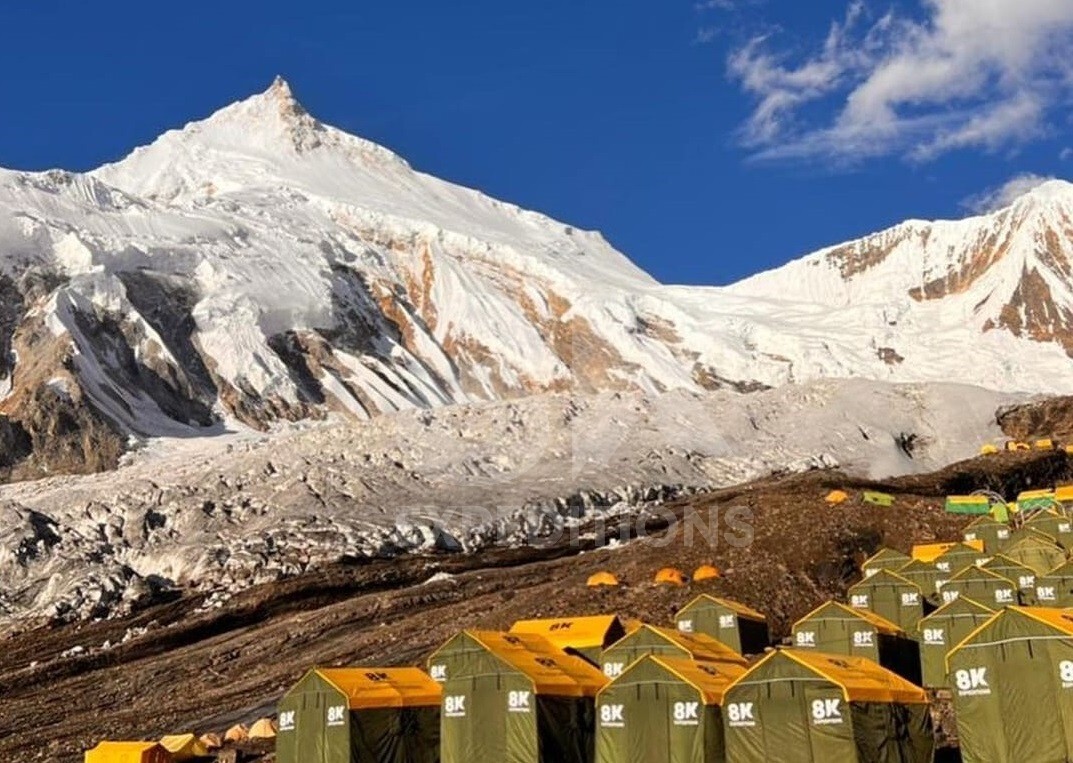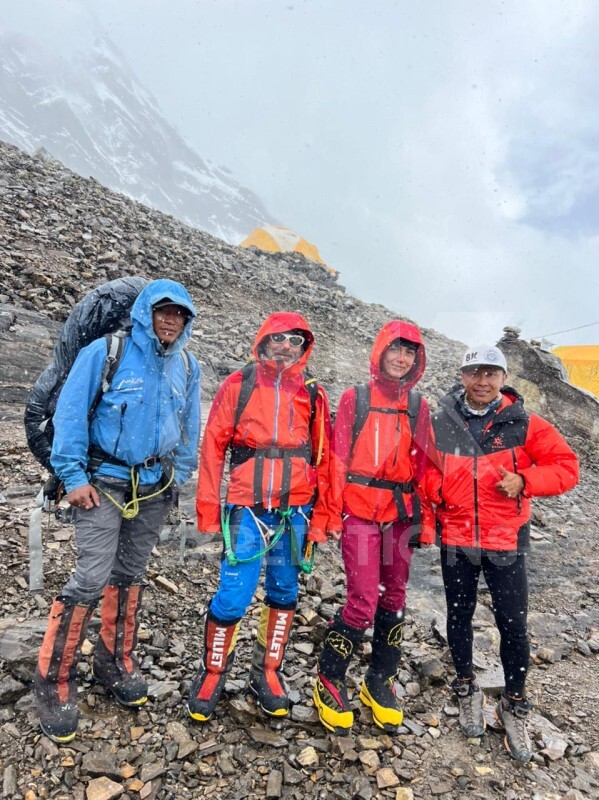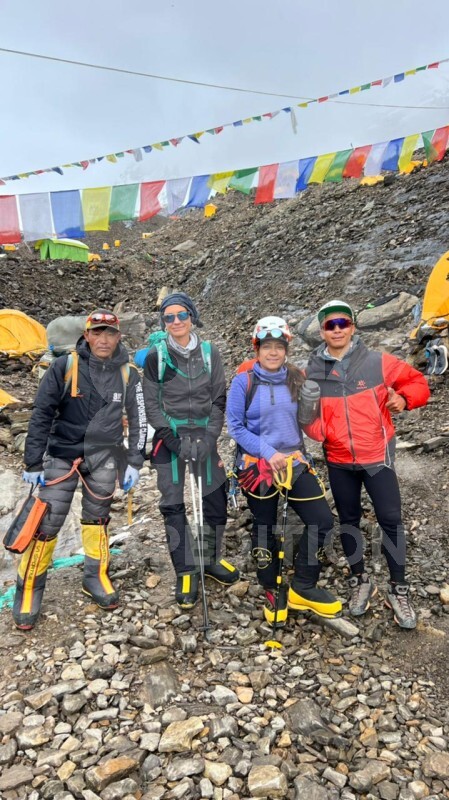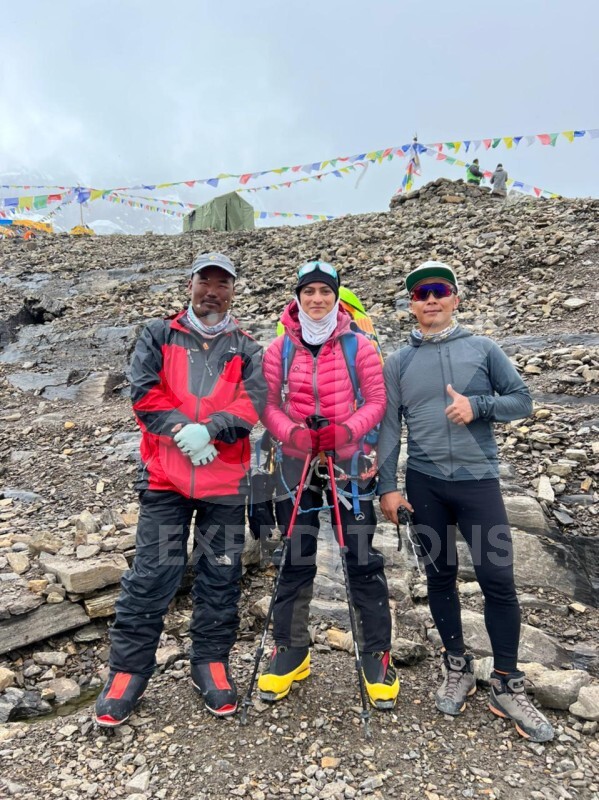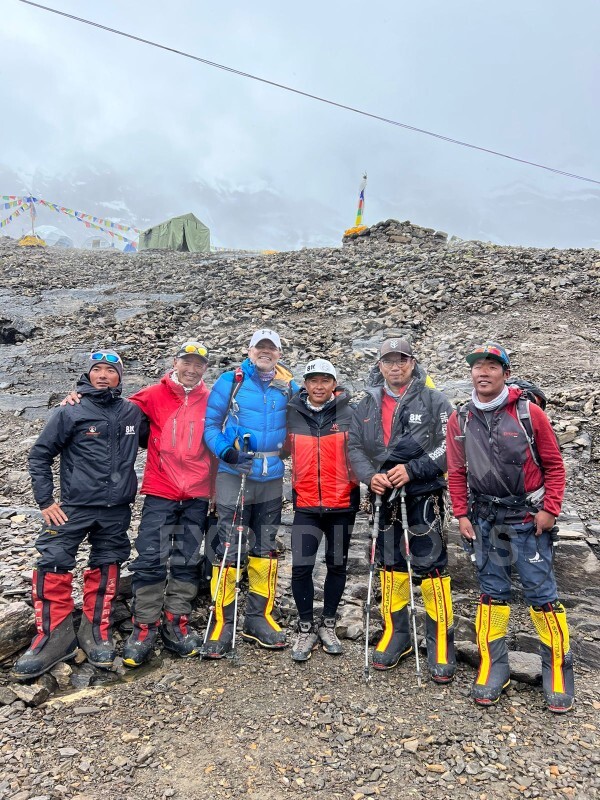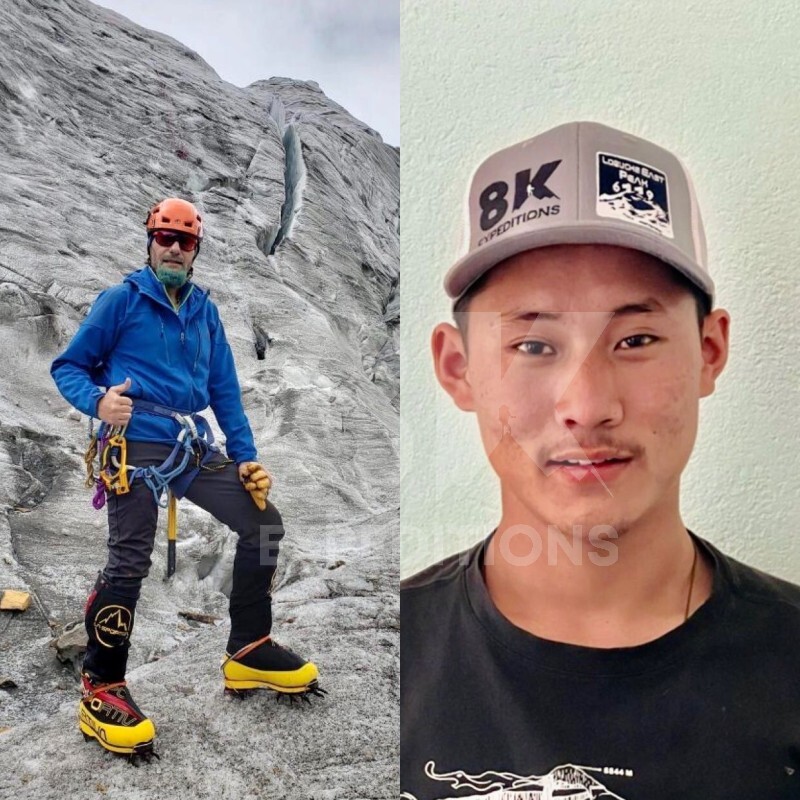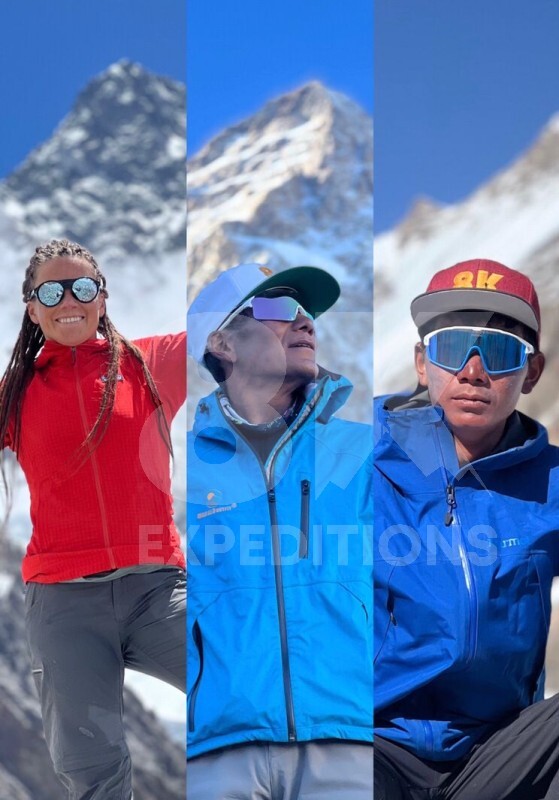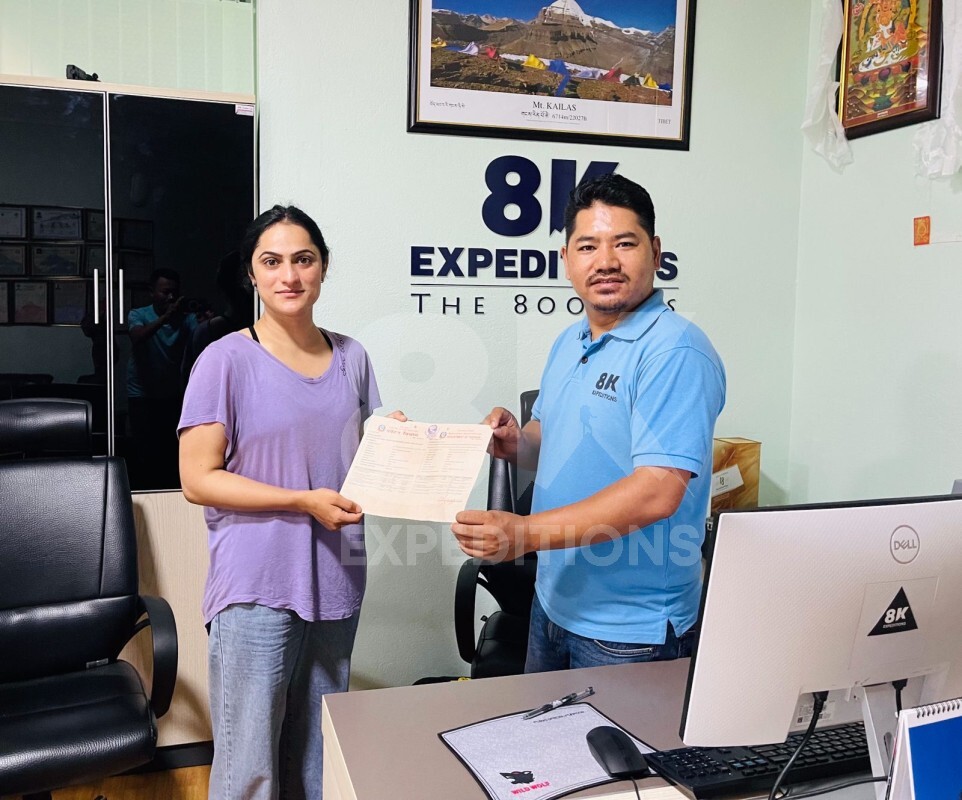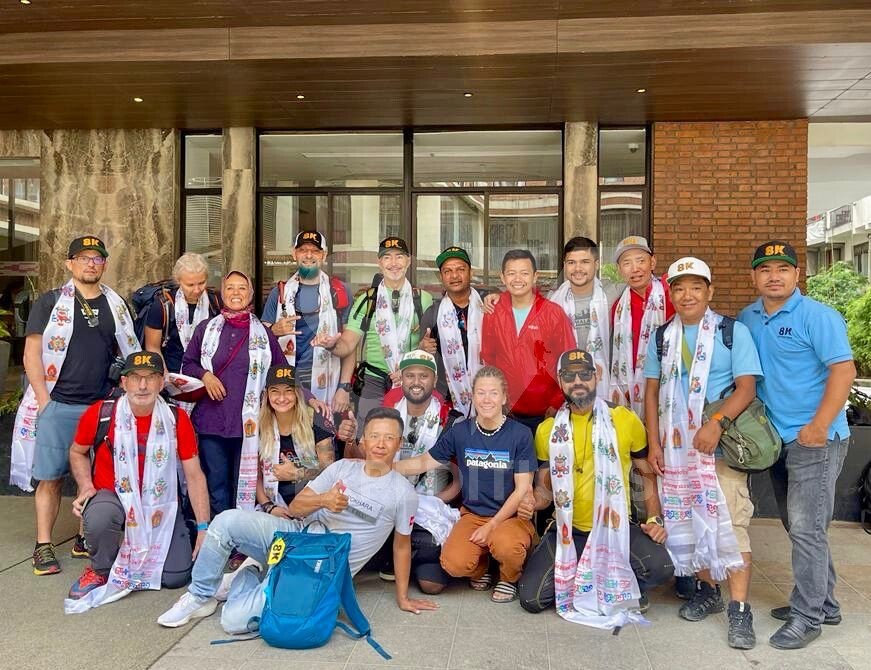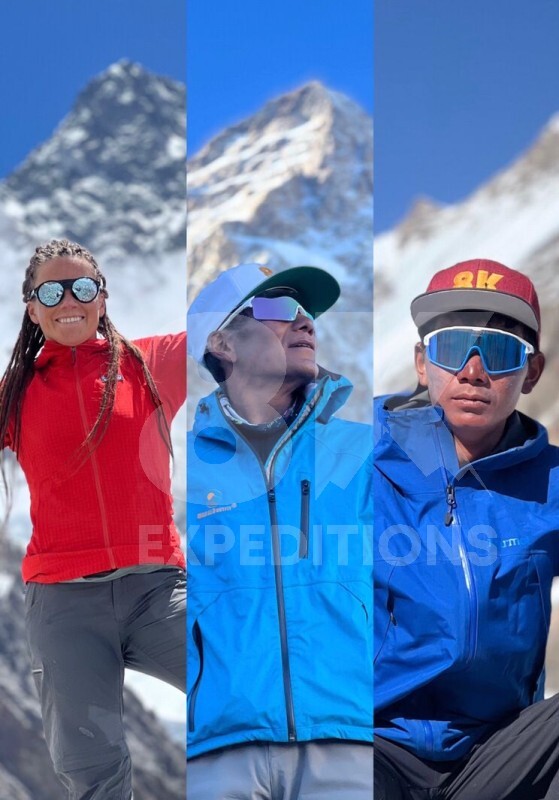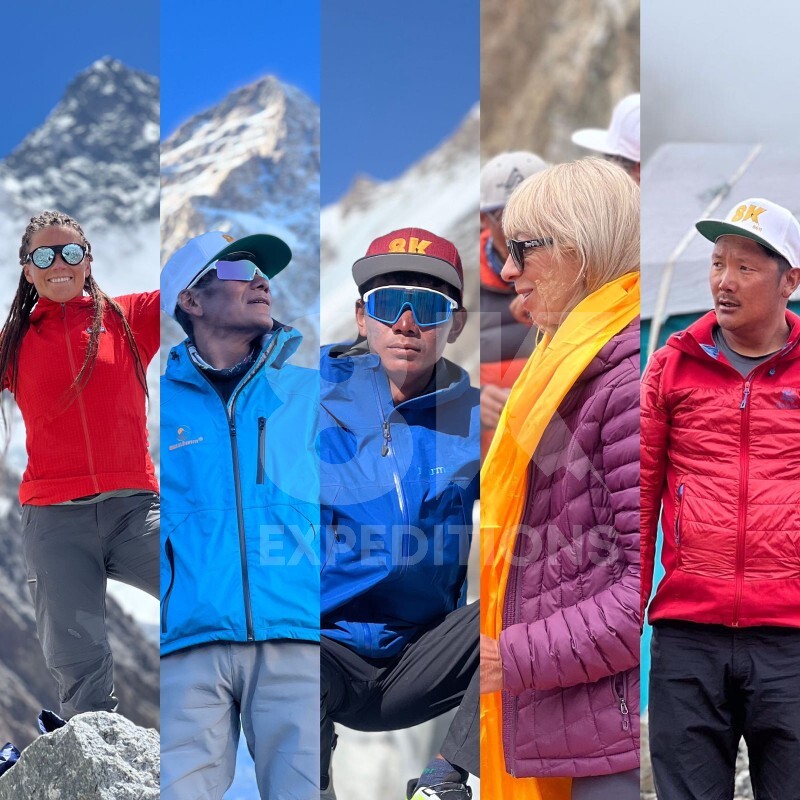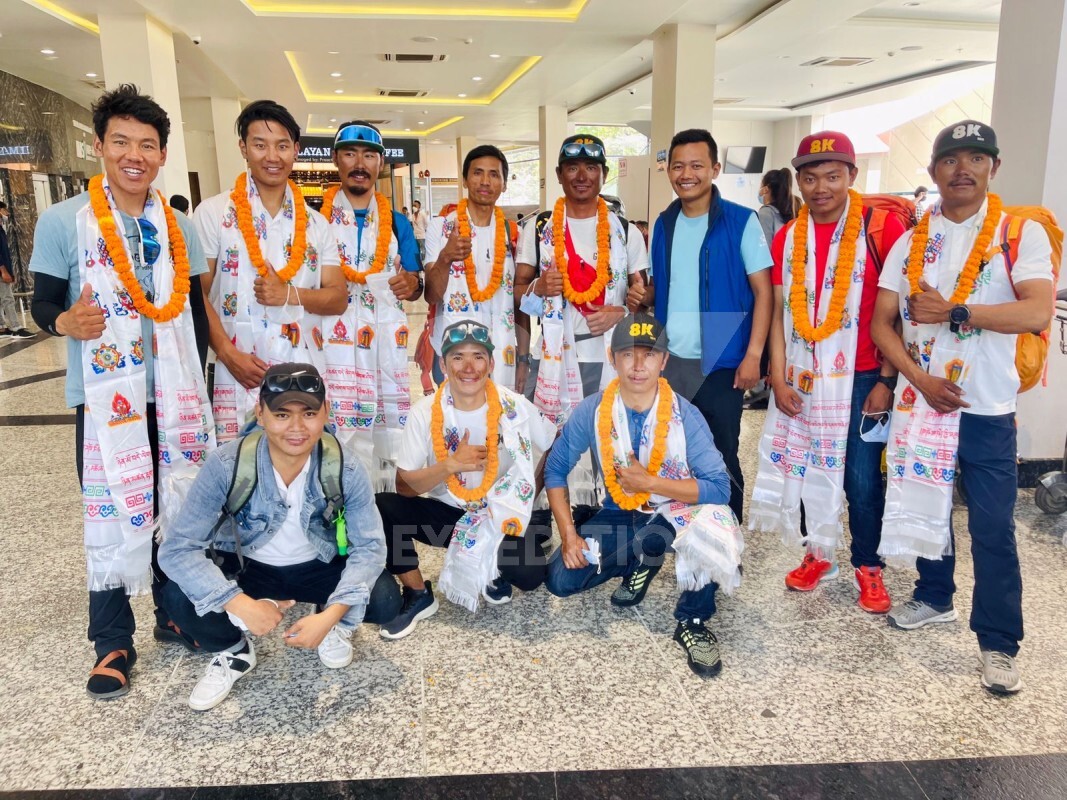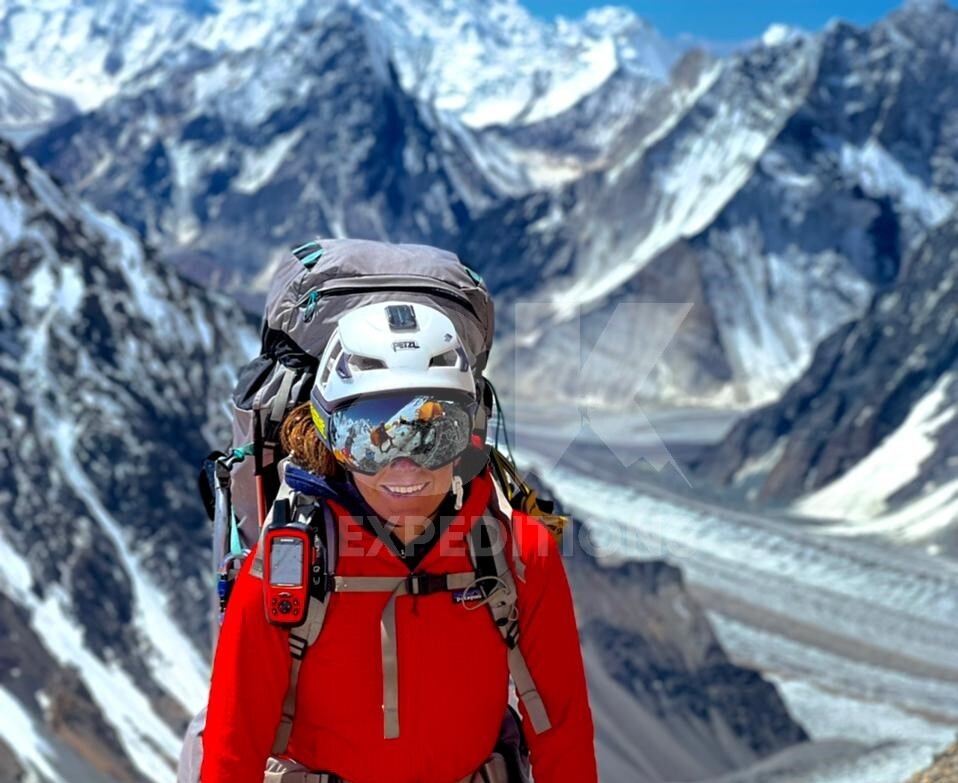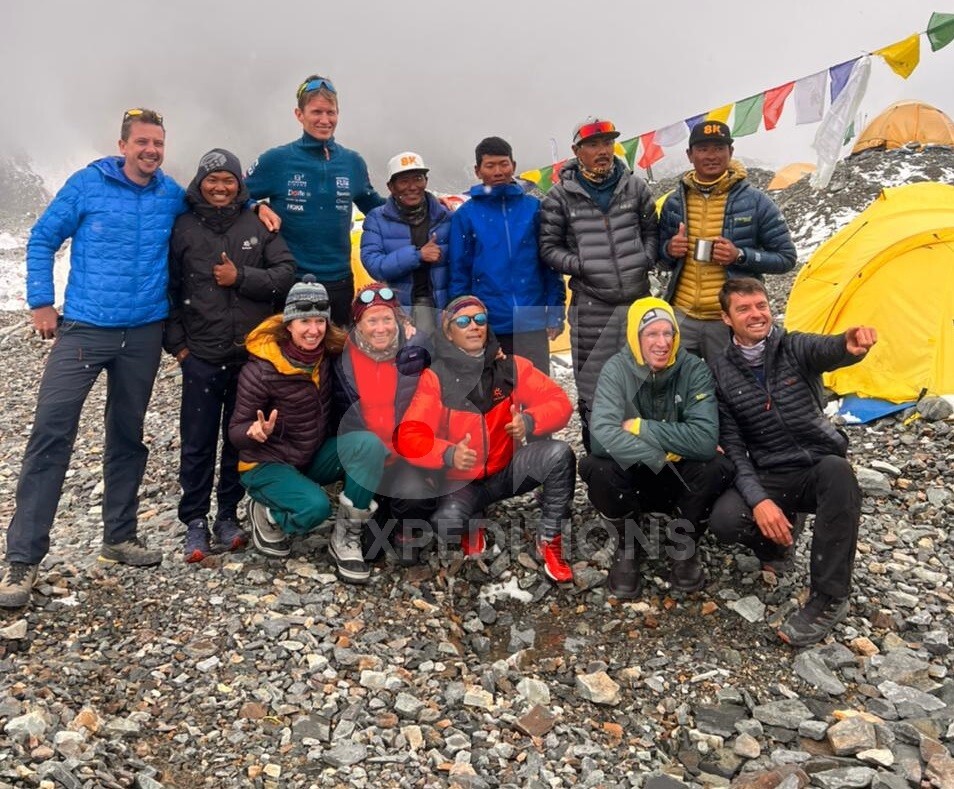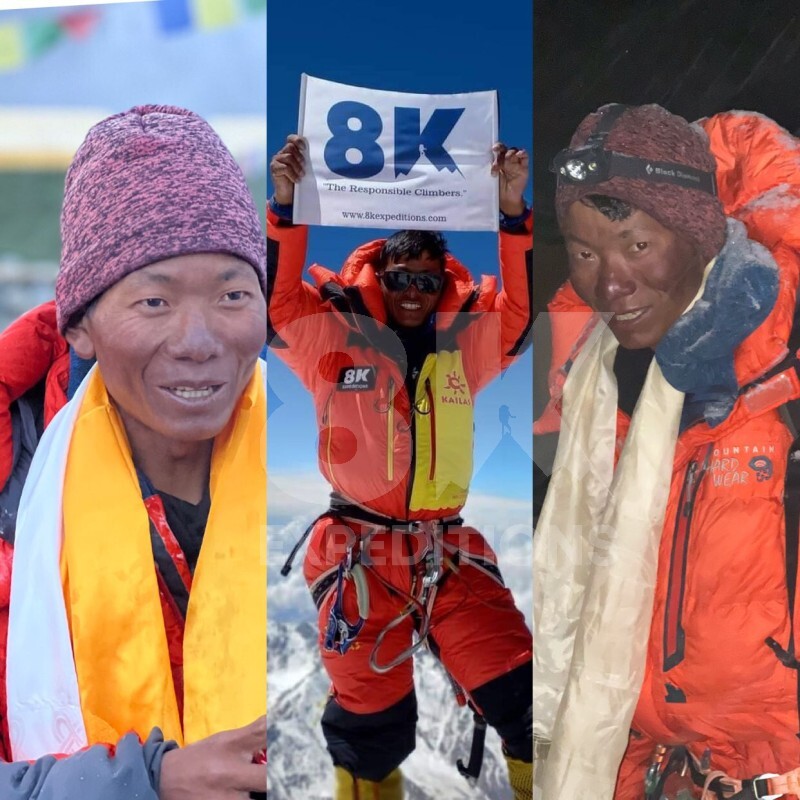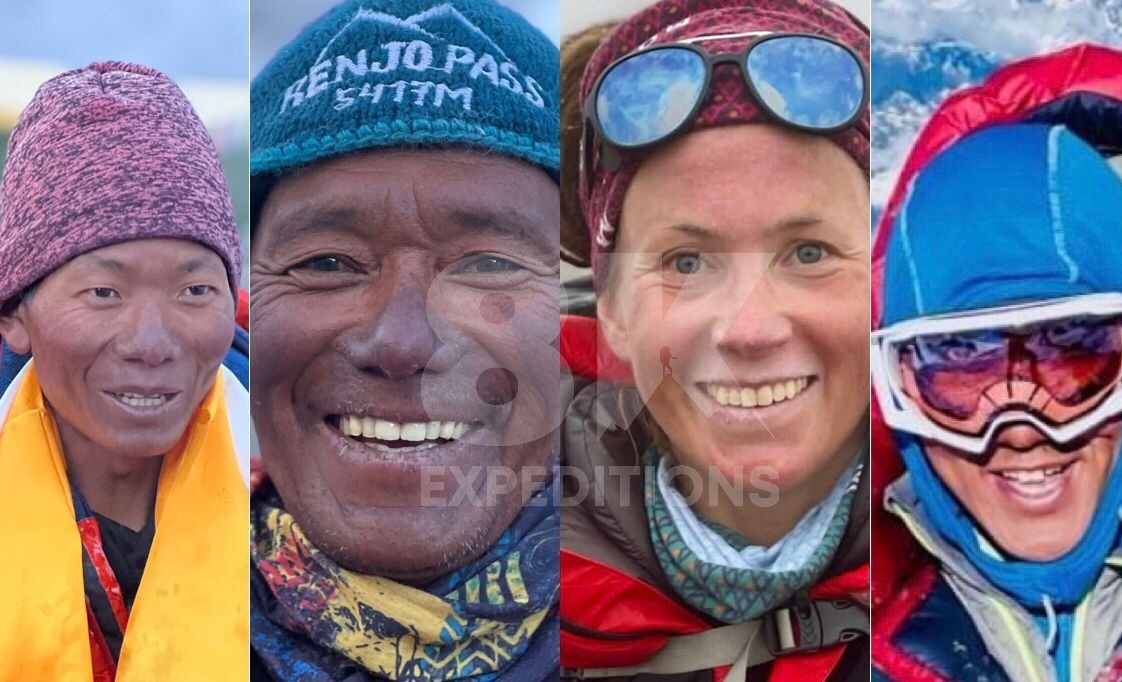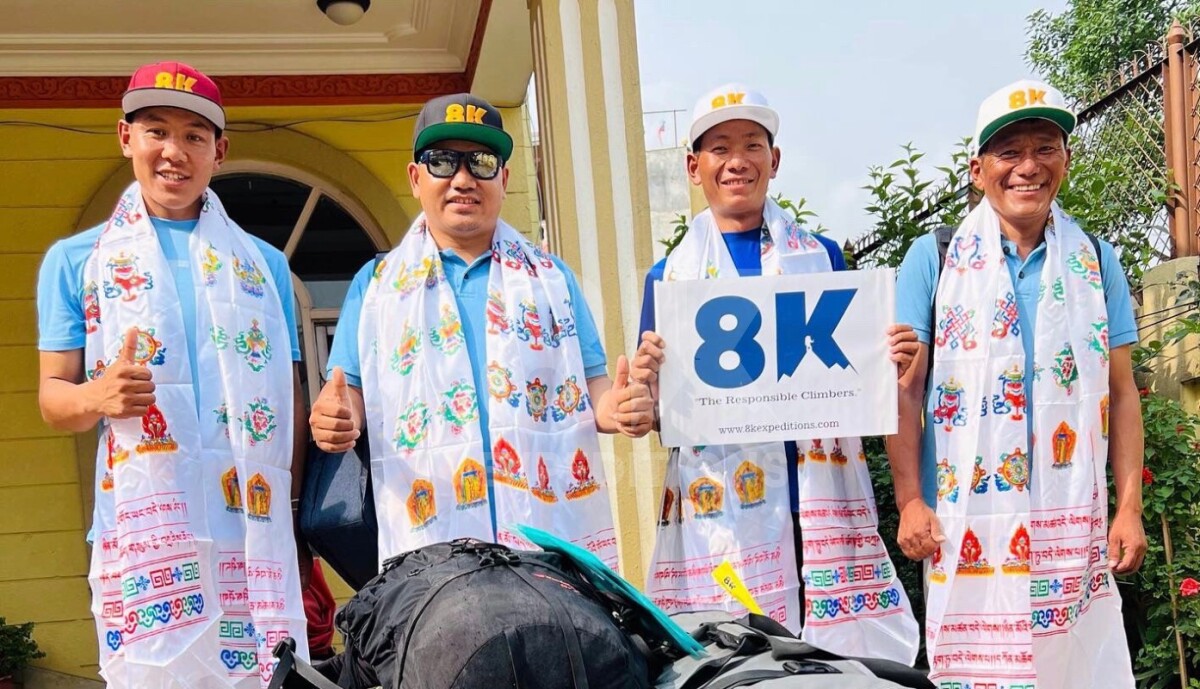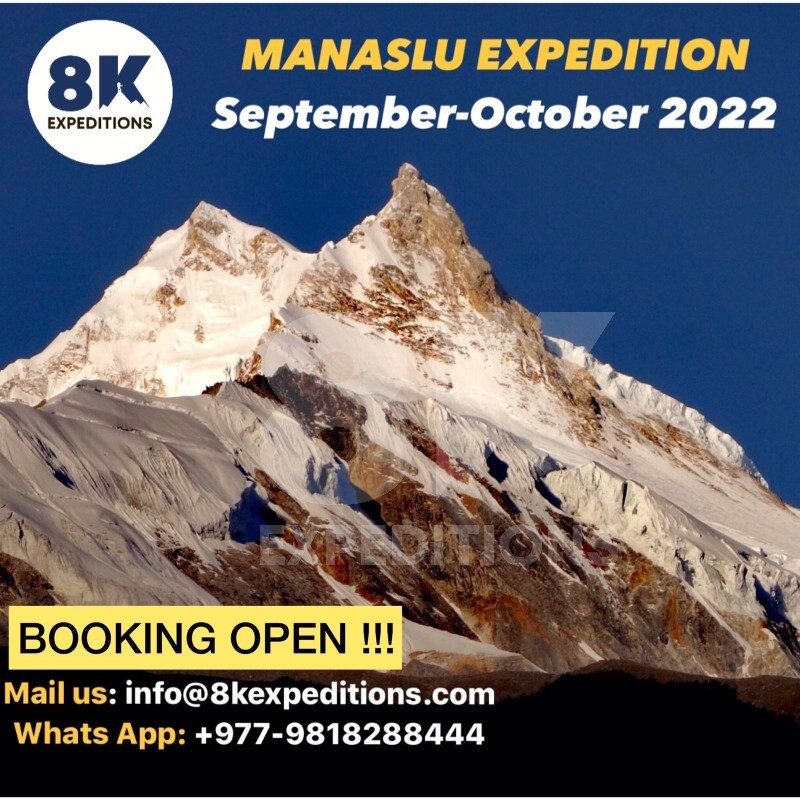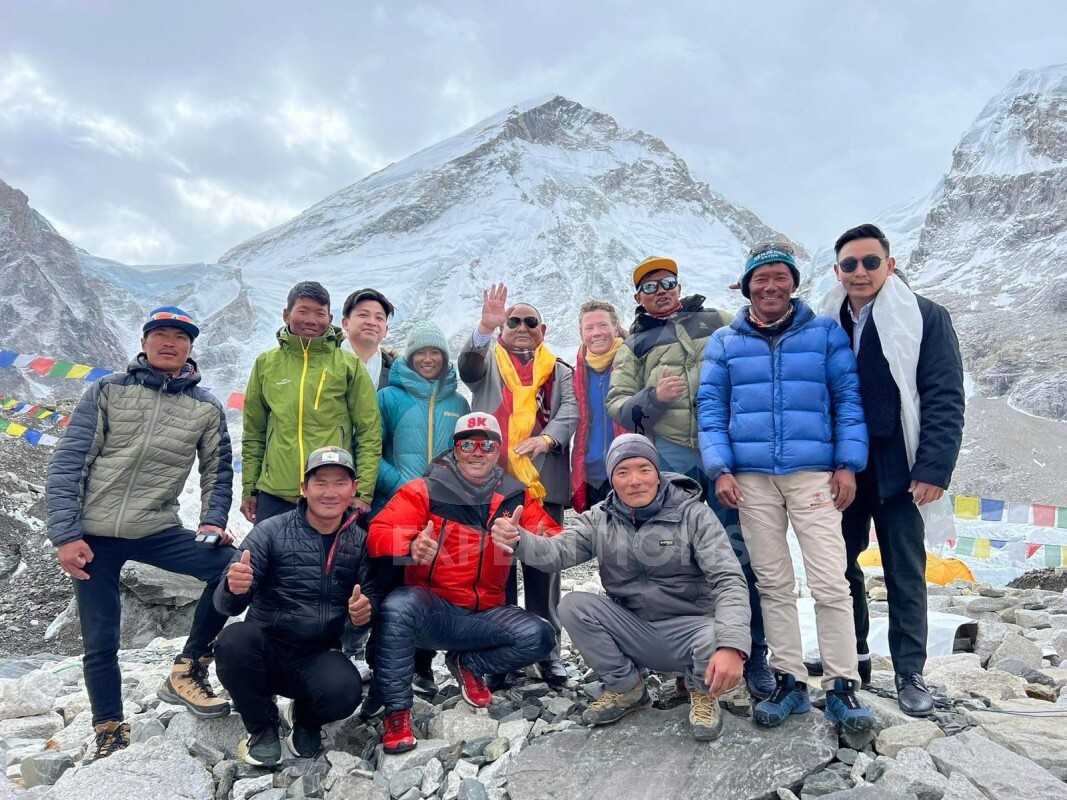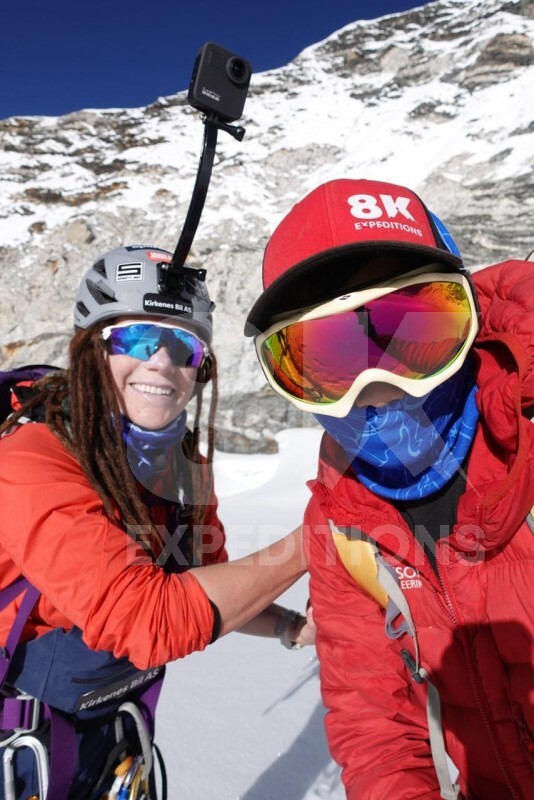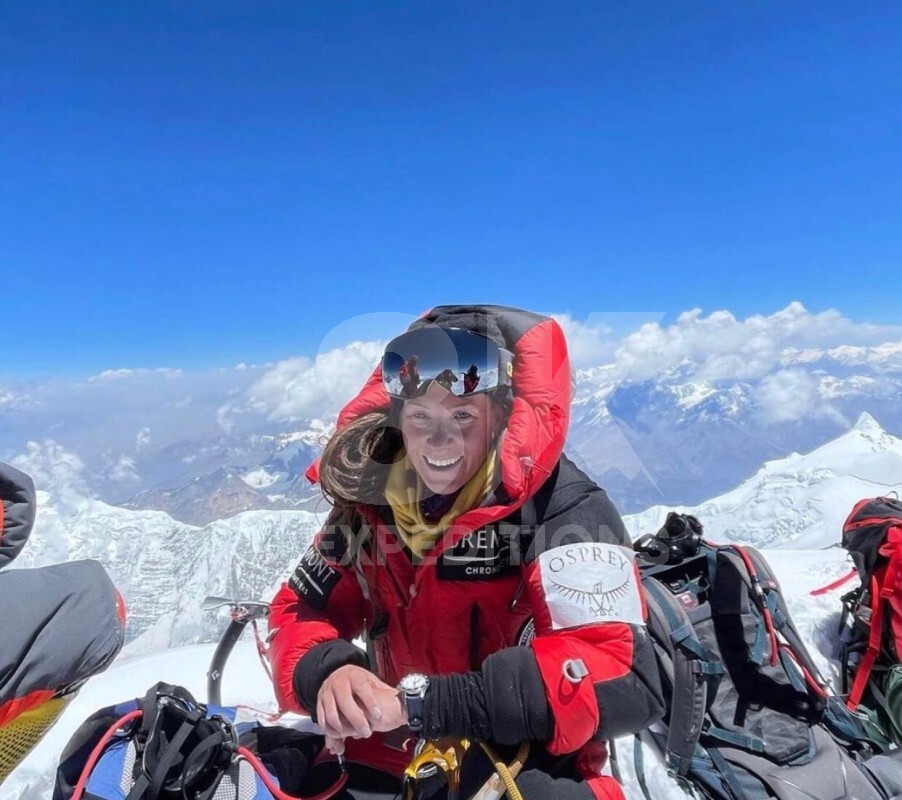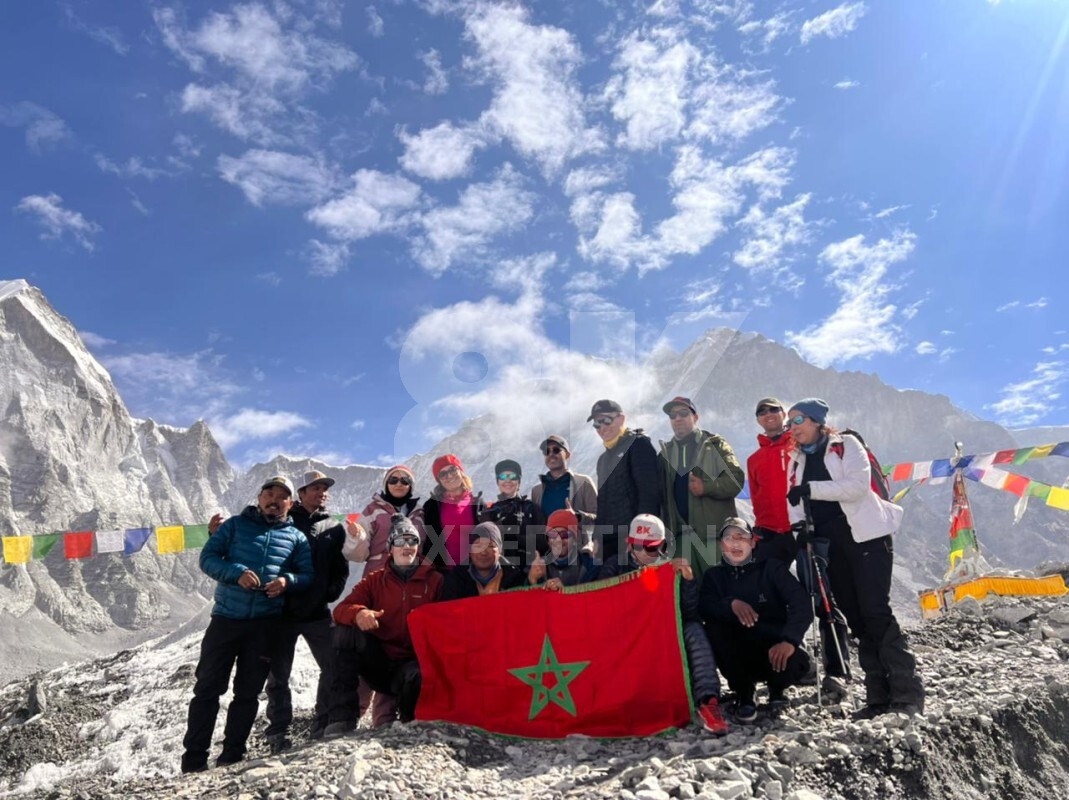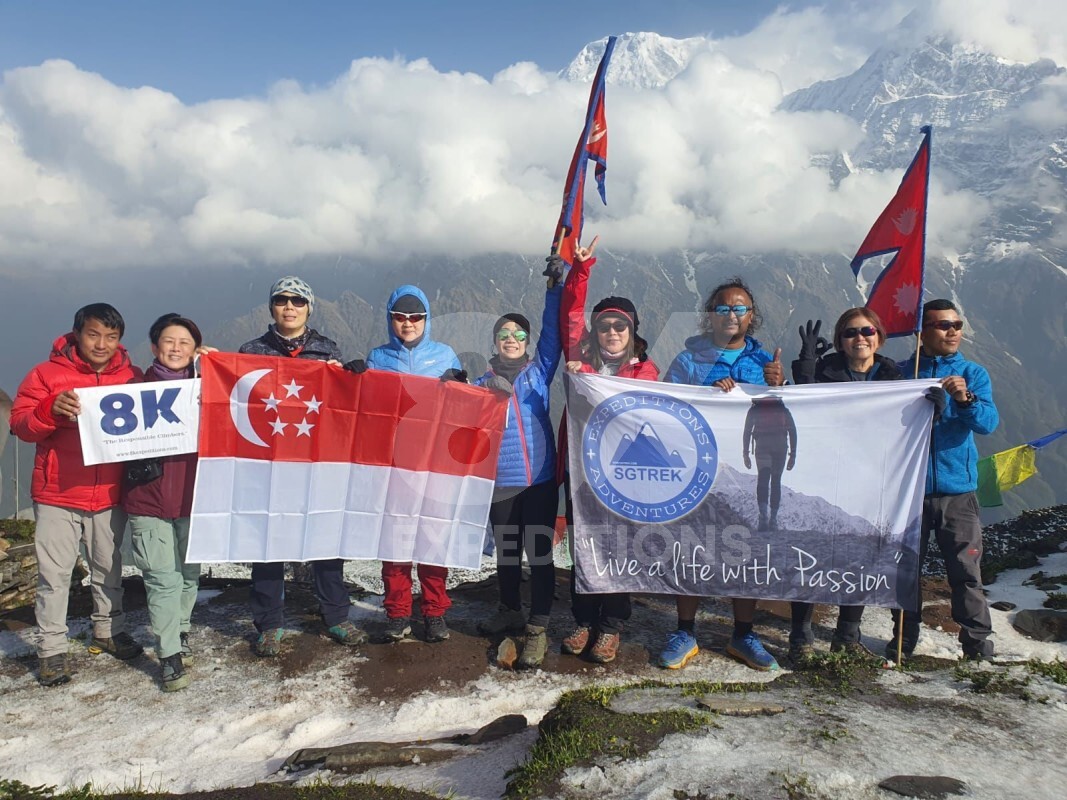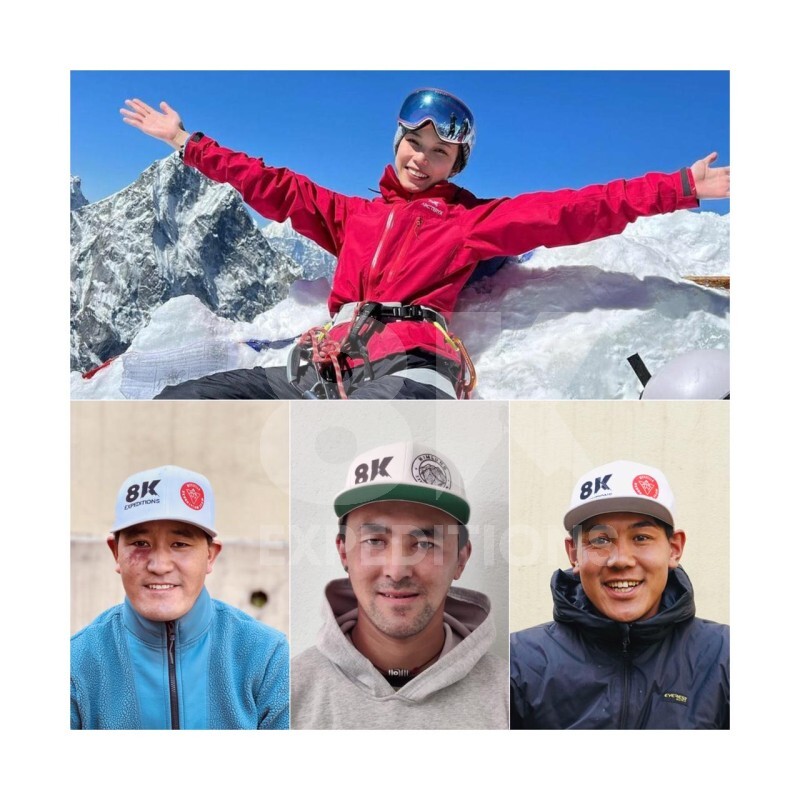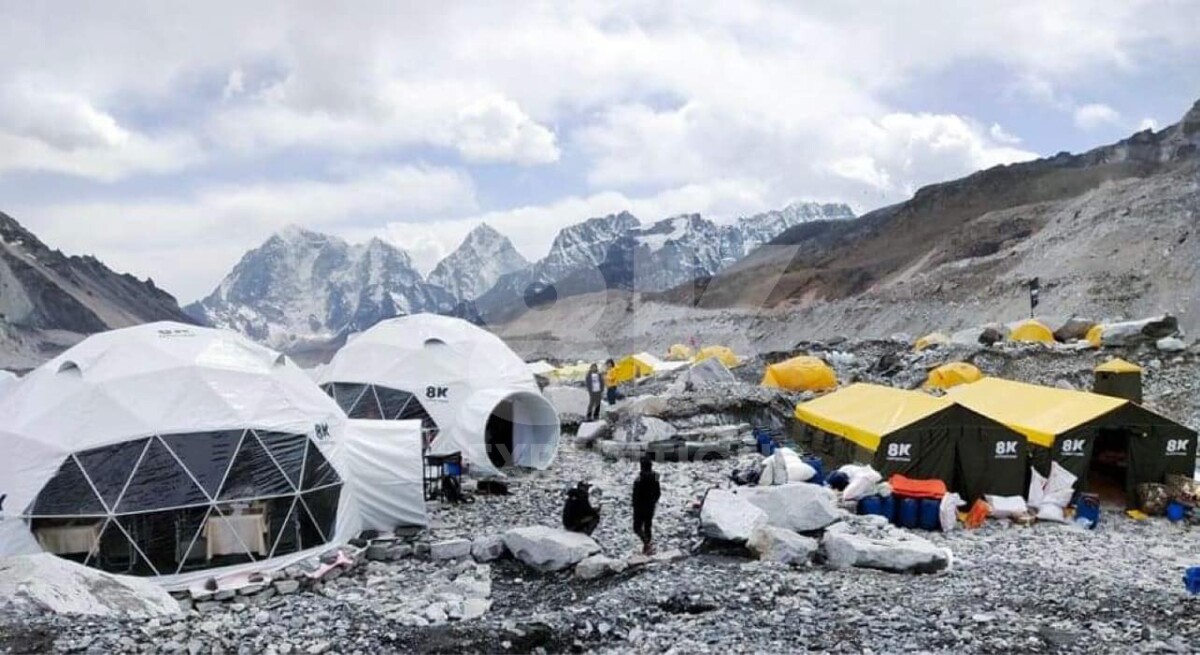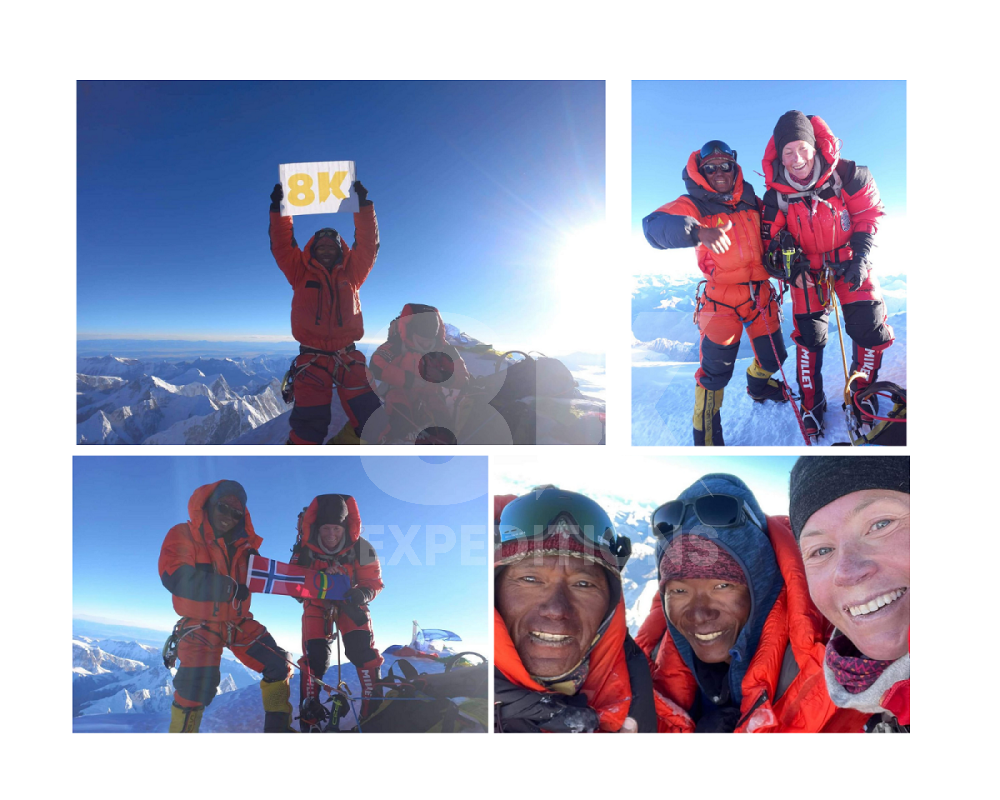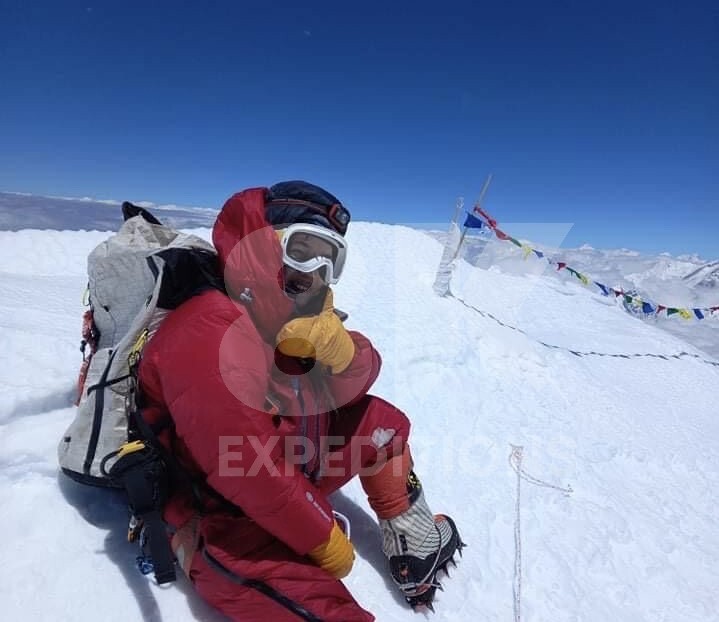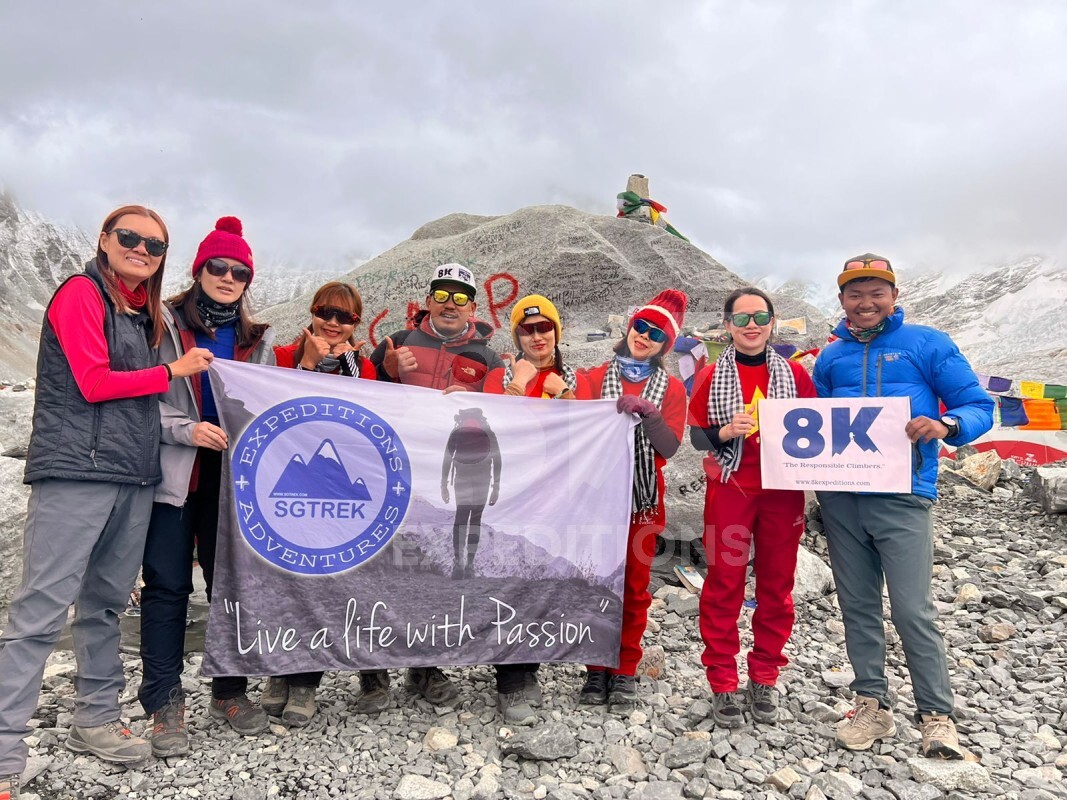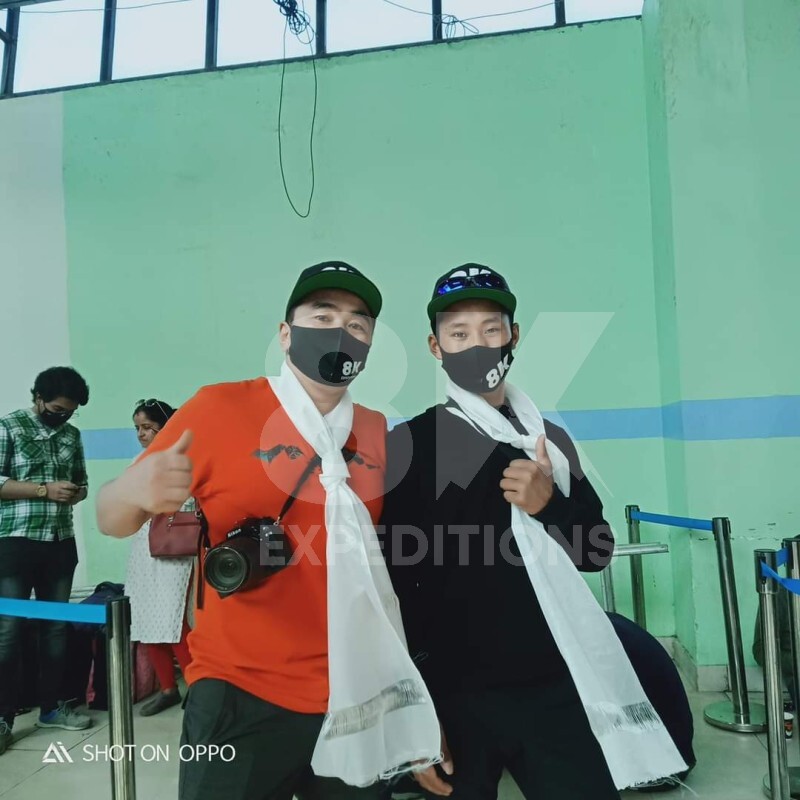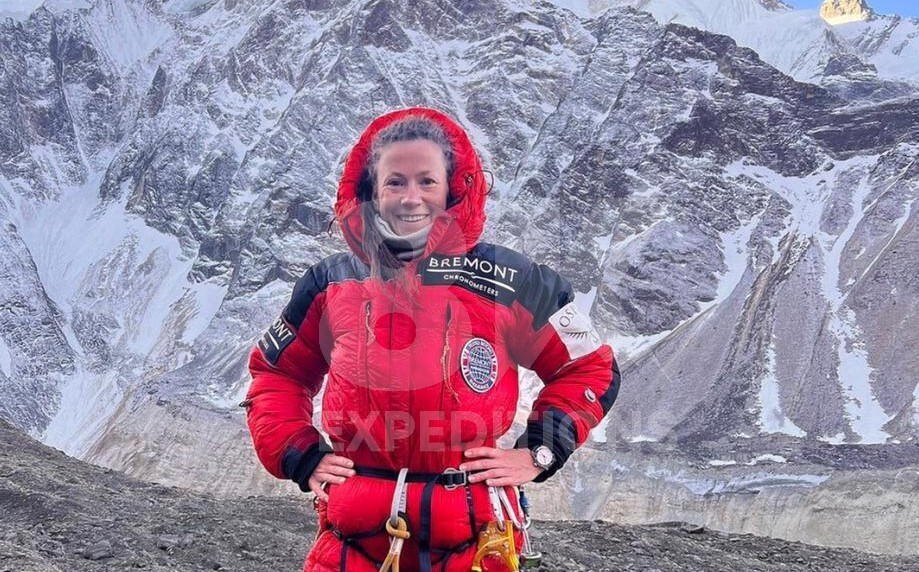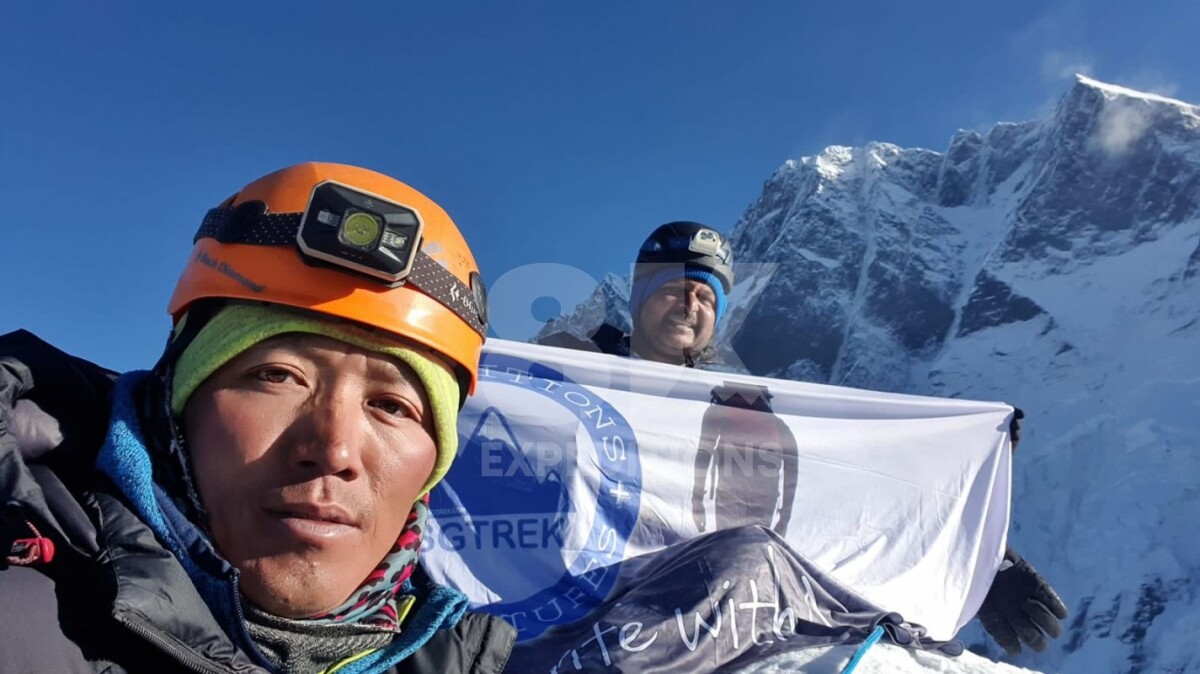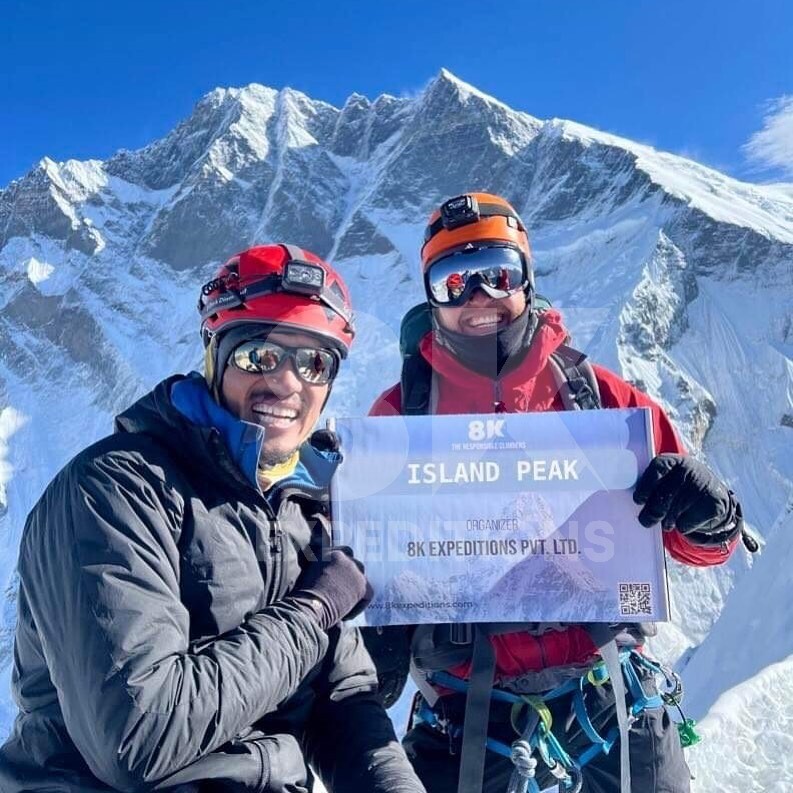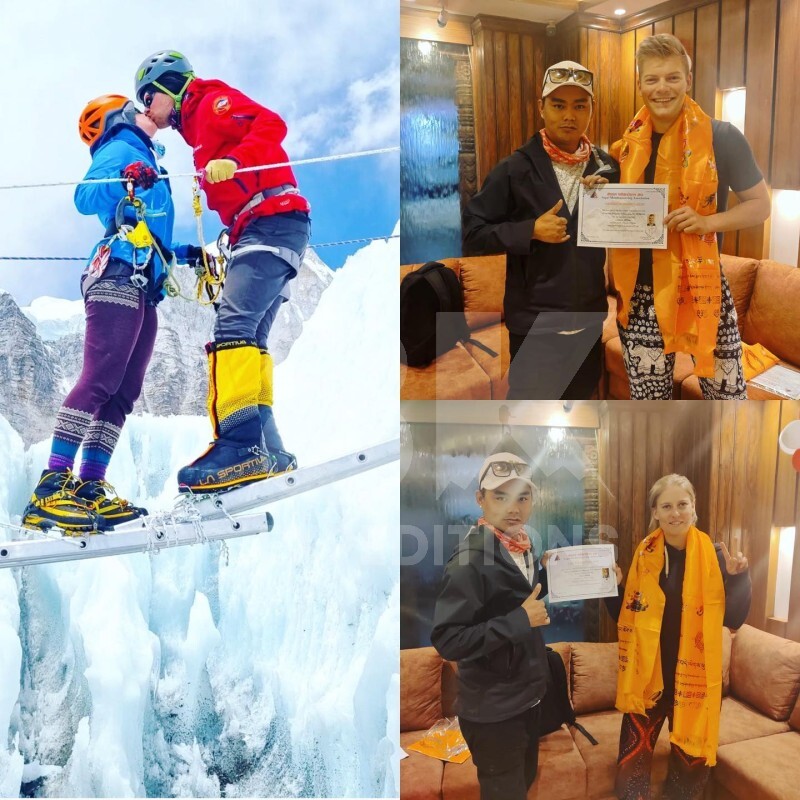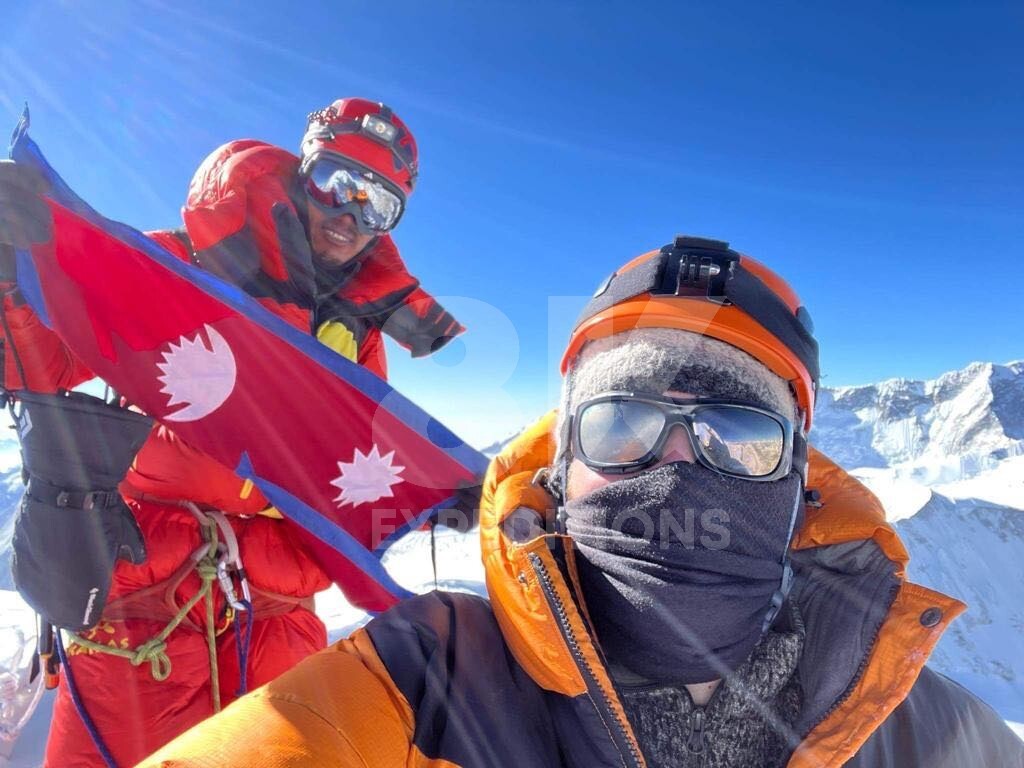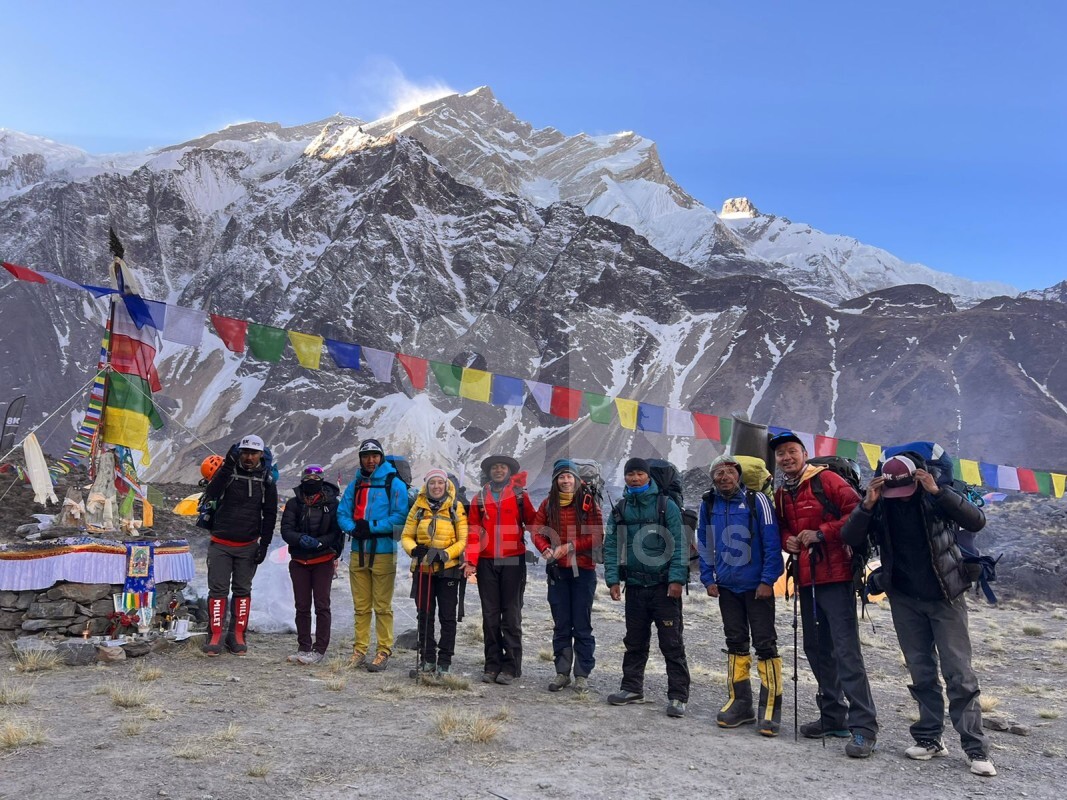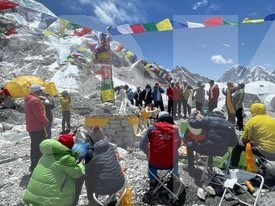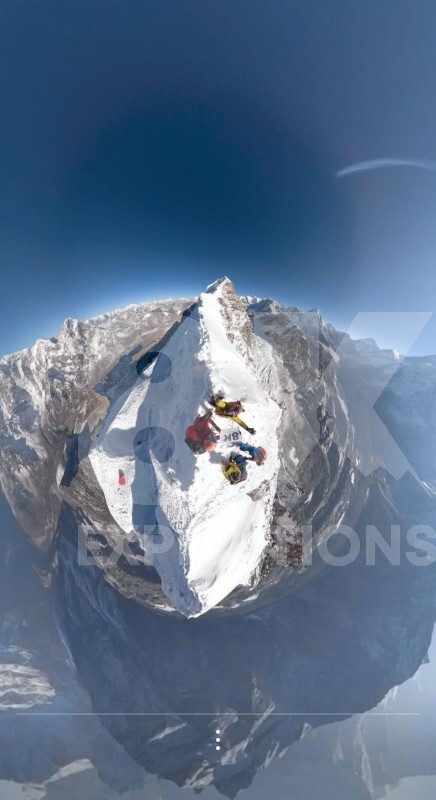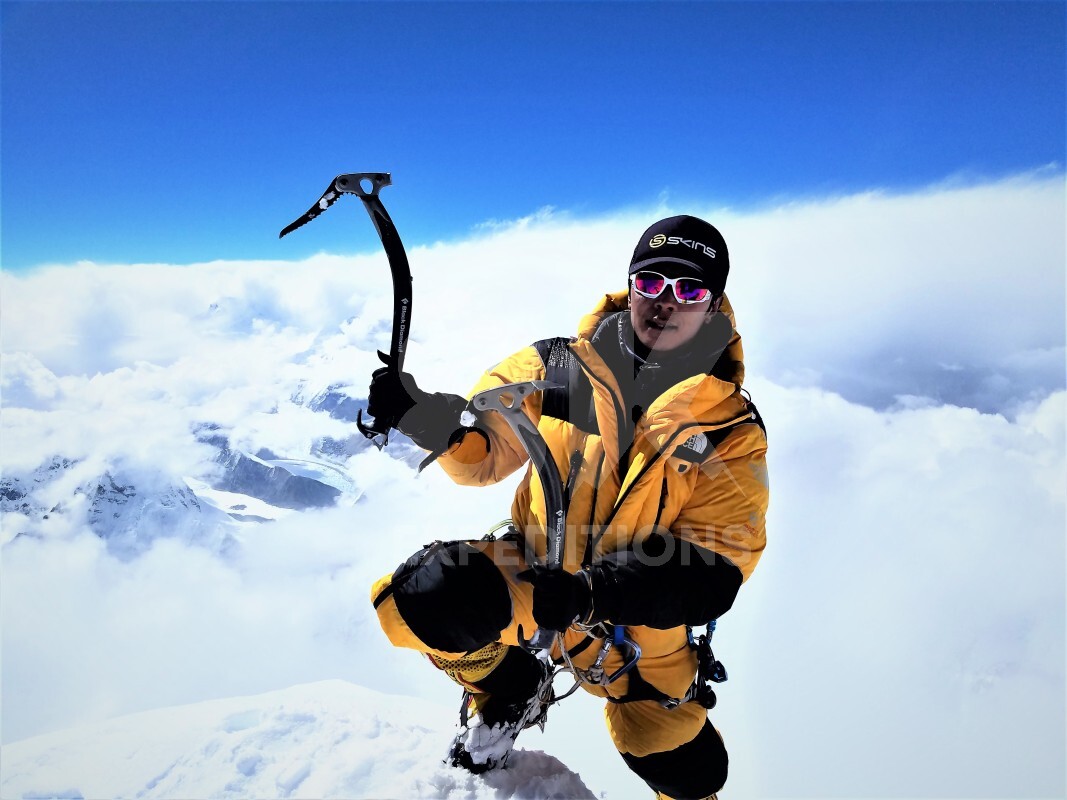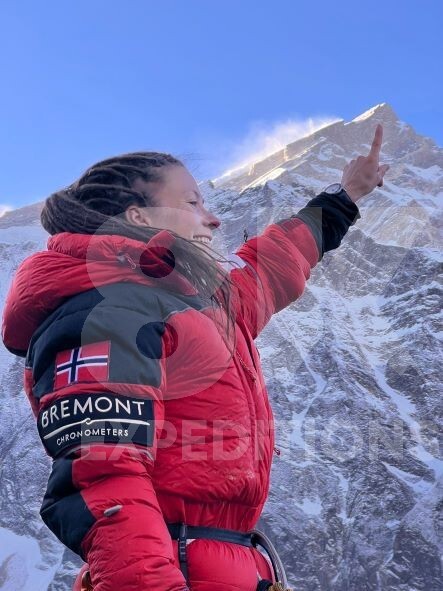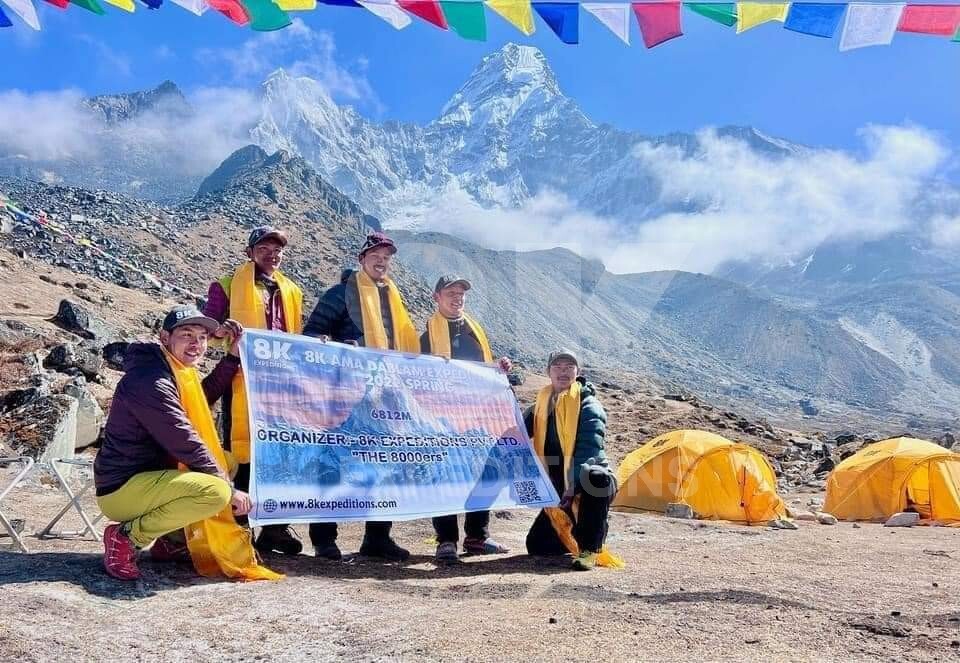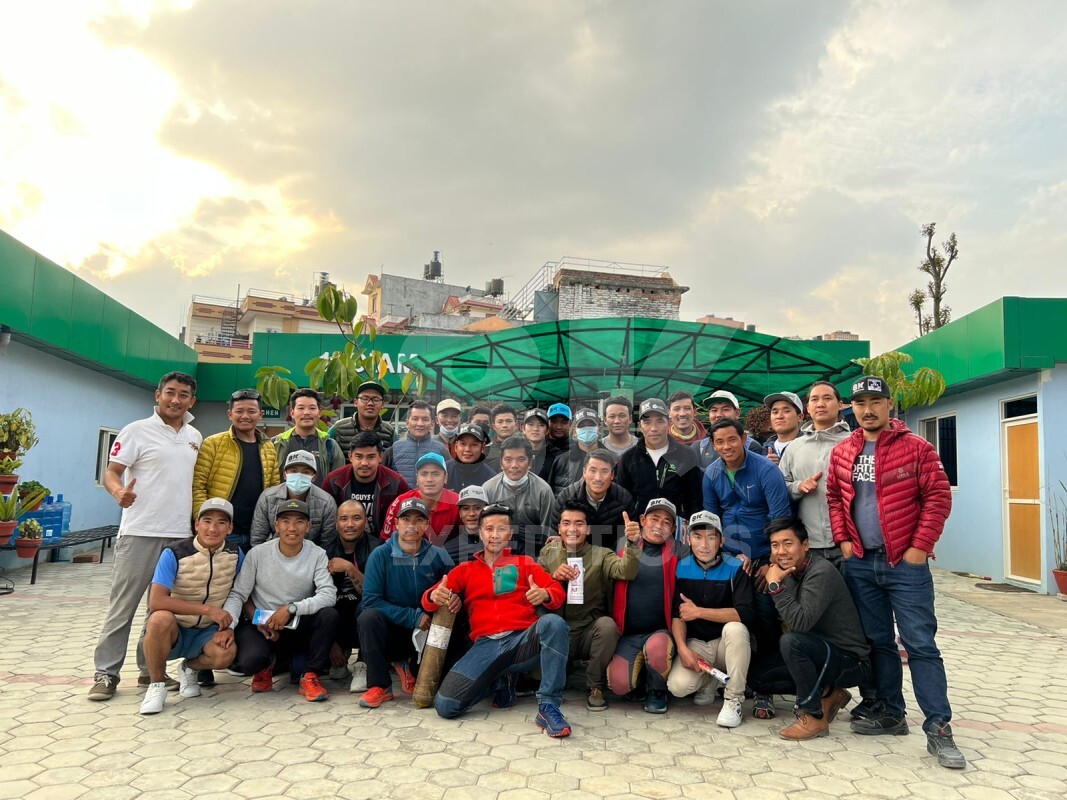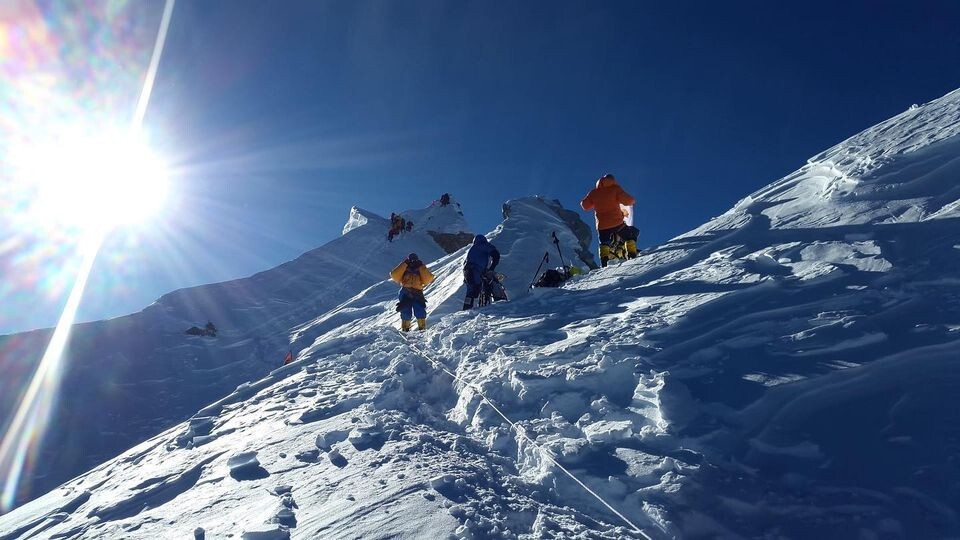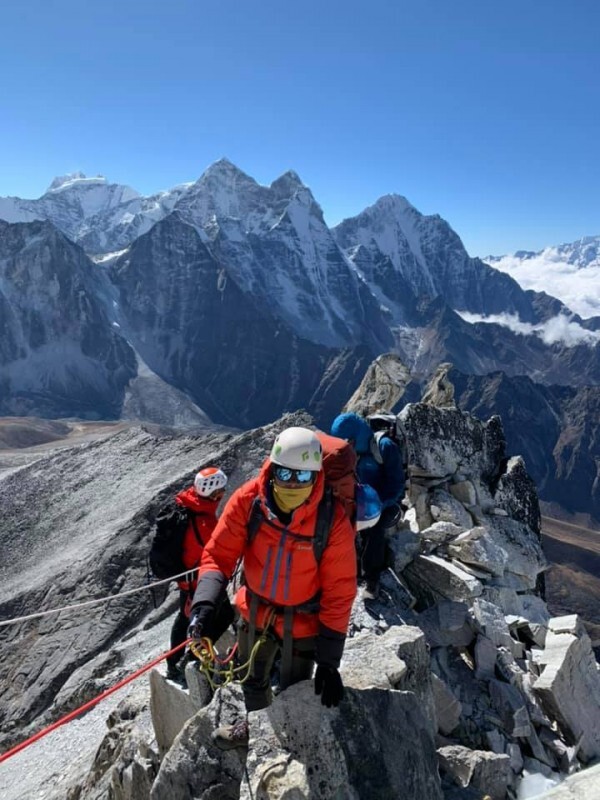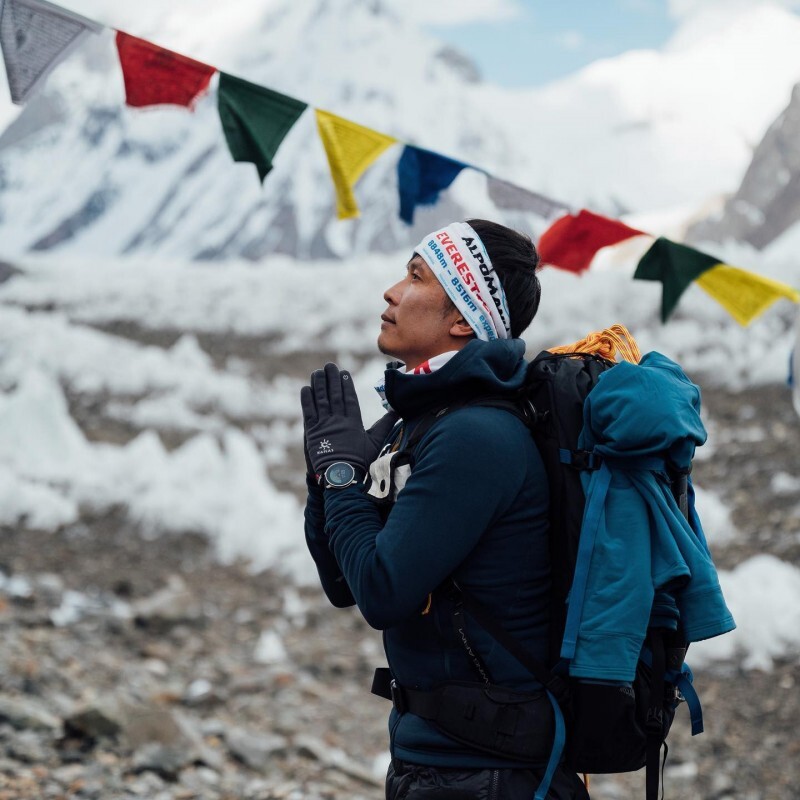Mt. Kangchenjunga Expedition 2025, the 3rd highest peak after Sagarmatha & K2 at an altitude of 8586 m, was considered the highest peak in the world until 1856. Crowned by 5 significant peaks, out of which three reside at the Nepal-India border and two reside in the Taplejung district of Nepal, Kanchenjunga is a mystical mountain also believed by the locals to be the home to mountain deity. In the Tibetan language, the name 'Kanchinjínga' refers to the “Five Treasures of the Great Snow”. The treasures represent the repositories of God being Gold, Silver, Grain, Gems, and Holy Books and are often associated with the five peaks in the Kanchenjunga Himal.
The Kanchenjunga section of the Himal extends from Nepal to India with around 16 peaks above 7000m. It is bordered in the north by Lhonak Chu, Goma Chu, and Jongsang La while in the East by the Teesta River. The western limits are distinguished as they run down the Jongsang La to Ginseng and Kanchenjunga Glaciers and the rivers of Ghunsa and Tamor. The southern Face of Kanchenjunga demarcates Sikkim from Nepal and Northern West Bengal.
The first successful ascent to mt. Kanchenjunga Expedition was made by George Band and Joe Brown the British Expedition team via South West Face on 25 May 1955. The next day, Norman Hardie and Tony Streather also summited the gigantic mountain and achieved triumph over Kanchenjunga. They took the route from the Yalung Glacier to the southwest of the peak, leading to the Yalung face. The route to the summit is a mixed terrain of snow, glaciers, and one icefall with a little section of rock. They had set up six camps during their expedition. Interestingly, Being a holly peak, the four summiters from the 1955 expedition remained a few feet below the sacred summit as promised with the local people of Sikkim. This Mt. Kanchenjunga expedition marked the British second triumph over the 8000m mountain after Mt. Everest.
The huge mountain massif of Mt. Kangchenjunga Expedition consists of the following peaks:
- Kangchenjunga main 8586m
- Kangchenjunga West (Yalung Kang) 8505m
- Kangchenjunga Central 8482m
- Kangchenjunga South 8494m
- Kangbachen 7903m
The massif houses five main glaciers namely, Zemu, Kanchenjunga, Yalung, Talung, and Ramtang that drain the Saptakoshi Rivers including Arun, Tamor, and Teesta in Sikkim as well. Mt. Kanchenjunga main is the highest point of the Brahmaputra River Basin, one of the largest river basins. The Mt. Kanchenjunga massif is also a part of the Ganges River Basin.
Mt. Kanchenjunga Expedition has been able to retain its pristine beauty and serenity as it is not very easily accessible from Nepal. The remoteness of its location makes it one of the less frequently traveled destinations despite its alluring beauty. The trekking to the Kanchenjunga region has recently been permitted in Sikkim, the Goecha La pass trek is the most popular one, as it offers a marvelous view of the huge southeast face of Kangchenjunga. The reason for restrictions to traveling in this isolated region could be the myth associated with it, making people believe that some mountain deities dwells in this region. The British Expedition team spotted a bipedal creature in 1925, which is believed to be “the Kangchenjunga Demon”, often called “Yeti”.
The trekking route to Mt. Kanchenjunga Expedition is unbelievably attractive and mindblowing as it goes through three diverse ecoregions: the eastern Himalayan broadleaved and coniferous forests, the eastern Himalayan alpine shrub and meadows, and the Terai Duar Savanna and grasslands. As you trek along, you will come across numerous small and big rivers that rage at their pace. We ought to trek through the Kanchenjunga Conservation Area, which is the home to several endangered species including but not limited to Snow Leopards, Asian Black Bears, Red Panda, White-bellied Musk Deer, Blood Pheasant, and Floras like Rhododendrons and Orchids. If lucky enough, we may encounter some of those on our way.
Best Seasons for Mt. Kanchenjunga Trek and Expedition 2025
The best season to go on expeditions to Mt. Kanchenjunga Expedition 2025 is Pre-monsoon or Post-monsoon when the sky is clear, the weather is moderate and the days are neither too hot nor too cold nights. However, we can organize trips to Kanchenjunga any time of the year.
What makes the Mt. Kanchenjunga Expedition 2025 difficult?
The Mt. Kanchenjunga expedition 2025 is comparatively more difficult than other 8000m mountains because of its remoteness, technical difficulty, risk of icefall and avalanche, difficulty in managing logistics, and fewer Sherpas available to climb Mt. Kanchenjunga. Moreover, India has restricted the expeditions from the easier side, compelling the climbers to take a tough route.
Preparation for Mt. Kanchenjunga Expedition 2025
Mt. Kanchenjunga Expedition 2025 is quite technical as it involves walking on snow, ice, and glaciers. Only a small section of the climb involves walking on rocks. Harsh terrain and extreme weather conditions pose a huge risk and challenge. Climbers are required to trek and hike for about 10 hours a day, so a high level of physical fitness and substantial mountaineering experience is required for the Mt. Kanchenjunga Expedition 2025. High altitude mountaineers, who have summited Everest and Kanchenjunga claim the latter to be even more tricky and difficult. The last part of the climb comprises the longest horizontal climbs over 8000m making the summit a bit demanding.
Why Climb Mt. Kanchenjunga Expedition in 2025 with us?
Mt. Kanchenjunga is the third-highest mountain in the world. To summit the highest mountain like Kanchenjunga requires a strong team of climbing guides, proper logistic support, accurate weather reports and standby backup support from Basecamp. Eight K. Expeditions is proud to share that we have the best team of Sherpa who have vast experience in climbing with precautions on 8000m mountains like Kanchenjunga. We are responsible and well-known among the mountaineering fraternity for our successful operations with good logistic support and safety. Moreover, Our Founder Lakpa Sherpa's valuable direction and instructions from either on/off the field play a crucial role in shaping your safe and successful summit undertaking.
Let’s make your Mt. Kanchenjunga Expedition 2025 Dream come into reality with Eight K. Expeditions.

